- +65 6384 7771
- [email protected]
- 99 Arab St, Singapore 199795

SACRED JOURNEY OF FAITH
Journey to asia, roam oceania's wonders, adventures in the middle east, embark on a european odyssey, explore africa's heart, featured tours, featured umrah & hajj tours.

11H UMRAH (AWAL MADINAH)

12H UMRAH (AWAL MADINAH)

13H UMRAH (AWAL MAKKAH)

14H UMRAH (AWAL MAKKAH) + ISTANBUL

15H UMRAH (AWAL MAKKAH) + BAITULMAQDIS

15H UMRAH (AWAL MAKKAH) + CAIRO
Explore great places, top destinations.
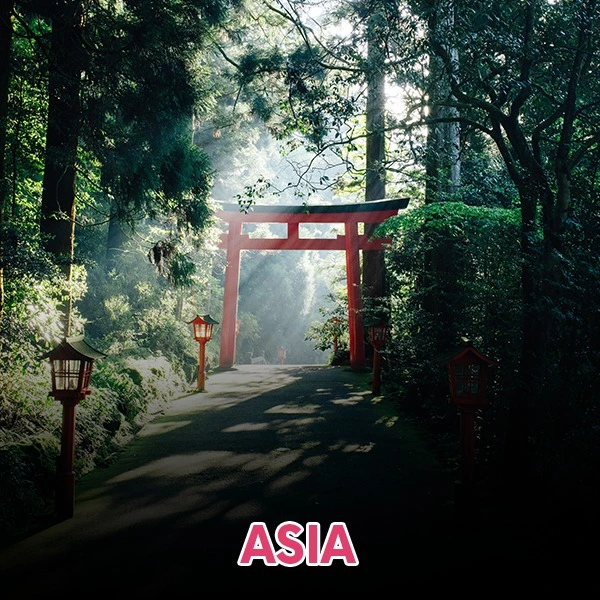
FEATURED WISATA TOURS

5H HATYAI SONGKHLA (KL)

10H WONDERS OF TURKIYE

11H TEROKA MESIR

10H SWISS BLISS ESCAPADE

12H/13H WESTERN EUROPE

12H KEMBARA CINTA RASUL
Why choose us, mengapa pilih.
PHOTOS & VIDEOS
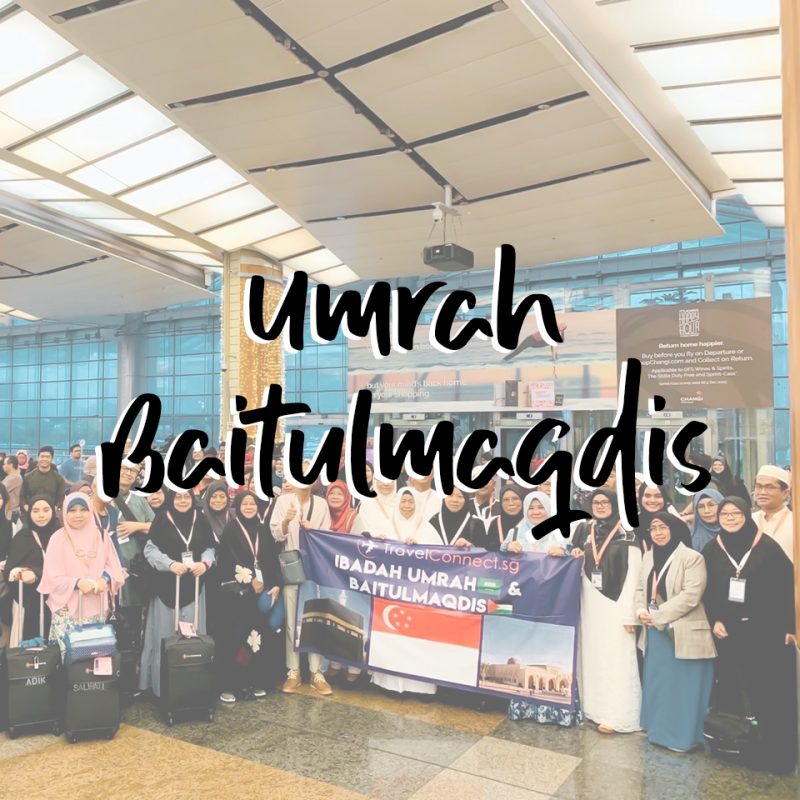
" Alhamdulillah, our journey to Jordan, Palestine and Egypt was smooth and simply incredible! Our group leader, Ustaz Syed Hassan was very accommodating, friendly and very generous (buying water/paying for porters for the jemaahs) without asking for any returns. Ustaz Syed also ensures that we had the best experiences that he could gave, together with our local tour guide for each country; Jordan - Mr Kamal, Palestine - Mr Hisham, And Egypt - Mr Ibadul Rahman. Ensuring our safety in each country while learning about each country cultures and history. I thanked each of the tour guide for their amazing explanation on Islamic values and histories as well as bringing us to amazing places. TravelConnect are blessed to have all these amazing people as their tour leader/guides. These 12 days journey was truly remarkable and worth the experiences. I pray that me and my family will be able to join and have Ustaz Syed Hassan as our tour leader again in the future; be it for wisata trips or for umrah. Allahumma Amiin! "
" Grp Umrah 11H 21Feb24 Alhamdulillah our first umrah went smoothly and peacefully. All of this was made possible because of the careful planning and execution by Travel Connect and in particular Haji Kaaba and Ustaz Sonhaji who were always there and available to help and guide us along from the moment we arrived at Changi and till we arrived safely back in Singapore. The itinerary for the whole umrah was, MasyaAllah, near perfect as it gave us sufficient time to do our ibadah collectively as a group as well as individually while at the same time allowed us more than enough time to do our shopping both in Makkah and Madinah. This was also made possible because of the hotels that we stayed in. For Makkah, it was the Al Safwa Royale Orchid Hotel which is literally 1 minute away from Masjidil Haram and 30secs away from all the shopping and food(since they're all located on the lower levels of the hotel). To be honest navigating through the maze of all the shops and eateries could be a challenge even for an ex-Survivor champion unless you have someone like Haji Kaaba around who helped in not only navigating through the labyrinth but also and more importantly getting the right price for the right quality of things that you are looking for. And as for Madinah, it was the Maden Hotel which is located conveniently about 5 minutes away from Masjid Nabawi and with plenty of shops all around. Again with the tireless help from Haji Kaaba guiding you around the area, you'll always get the best deals for your shopping. All in all, throughout the short journey to Makkah and Madinah, everything seems daunting and tiring for a novice like my wife and me but, Alhamdulillah with Haji Kaaba and Ustaz Sonhaji around, everything became easy and less tiring, Alhamdulillah. From Ustaz Sonhaji's kind and guiding voice through the recitation of doas and his patience explanation of all the historical facts of places that we visited to Haji Kaaba's constant encouragement and cheerful conversations, everything became almost effortless and smooth. Therefore and hopefully, if you are reading this and like me it is your first time performing umrah, I hope that, InsyaAllah when He invites you, you will consider Travel Connect as your choice, and if so then please ask for Haji Kaaba or Ustaz Sonhaji to be your guides. "
" The team overall was amazing in arranging our Ramadan umrah trip in 2024. Going during this peak period is known to be a real challenge but alhamdulillah, they made the experience a smooth one with their professional team in Singapore and in Saudi. The pre-trip had prepared us greatly with the right gear and tips to take note. Special regards to Ustaz Nafis for teaching us many things before the trip with classes and meetups. During the trip, our guides, Ustaz Syed Hassan, our group team leader l, took care of us throughout the trip, with our travel needs, umrah plans and informatics about many historical places with religious insights. Ustaz Amin, who was our Saudi local guide, had great expertise in the local land, 13 years with travel connect, protected and guided us amazingly too. The trip made us into family like no other, going through the challenges there was a special kinship. Would definitely recommend them. Looking forward to future trips with them for other occasions too. If you want to travel with confidence, travel right, I feel travel connect here is a gem, they know their stuff well, they know how to take care of their customers. As a young couple who does more free and easy trips, this experience was and eye opener in enjoying guided ones that I truly felt worth the time and money for. Keep it up travel connect! I forsee they will do very well in the future insyaallah. "
" Dear *Travel Connect*, I'm writing to share my recent Umrah experience with you from February 7th to 17th, 2024. It was truly a journey of self-discovery, filled with both highs and lows. While I acknowledge that I faced some personal challenges during the trip, I wanted to express my sincere gratitude to your team, especially Ustaz Nafis and Haji Jumat, for their unwavering support and guidance. Ustaz Nafis, your kind words and encouragement during my emotional moments meant the world to me. Thank you for going the extra mile to console me even when you were back in Singapore. Your compassion truly helped me navigate a difficult time. Haji Jumat, your dedication to ensuring everyone's well-being, especially during the hotel check-ins, was commendable. Your attentiveness and genuine care made the experience much smoother and more enjoyable for everyone. I also wanted to publicly apologise to my wife, fellow Jemaah members, and Ustaz Ali Zainal Abidin for my emotional outburst during the Umrah. I understand that my behaviour was unacceptable, and I deeply regret any hurt or inconvenience it caused. Looking back, I realise that certain external factors contributed to my emotional state. However, that doesn't excuse my actions. I take full responsibility and am committed to learning from this experience. Despite the challenges, I am grateful to have completed the Umrah during the blessed occasion of Isra' Mi'raj. It was a powerful and transformative experience that I will cherish forever. Thank you once again for your excellent service and support throughout this journey. I appreciate your understanding and professionalism. Sincerely, Noor Hamzah "
" 12D Venice + Balkan Trip 19 Feb to 1 Mar 2024 It was a very good experience for both my husband and I. We had a good time through out the whole program. The journey was smooth from day 1 till end. The program was specially curated and the local guide Erma was very friendly, knowledgeble and patience in providing answers to all the questions asked. Thumbs up and 5 star given to our tour leader Puan Ramlah who was very engaging, sporting, experience and managed the group well. From not knowing anyone on the first day we made many friends after the trip and became close like family. Many thanks to her initiatives. A shout out also to our driver Mr Emir who was very helpful, patience and skillful. His driving skill and sense of direction through out the trip were excellent. We felt safe having him around as our driver. Thank you TravelConnect for the initiative and gave us this opportunity and experience to see the world without having to worry about food and anything else. This trip will not be our last and will definitely come back and look forward to many more places to visit in future. InSyaAllah. "
Situation in Haiti April 5, 2024
U.s. citizens in haiti, update january 10, 2024, information for u.s. citizens in the middle east.
- Travel Advisories |
- Contact Us |
- MyTravelGov |
Find U.S. Embassies & Consulates
Travel.state.gov, congressional liaison, special issuance agency, u.s. passports, international travel, intercountry adoption, international parental child abduction, records and authentications, popular links, travel advisories, mytravelgov, stay connected, legal resources, legal information, info for u.s. law enforcement, replace or certify documents.
Before You Go
Learn About Your Destination
While Abroad
Emergencies
Share this page:
South Korea
Travel Advisory July 24, 2023
South korea - level 1: exercise normal precautions.
Reissued with obsolete COVID-19 page links removed.
Exercise normal precautions in South Korea.
Read the country information page for additional information on travel to South Korea.
If you decide to travel to South Korea:
- Enroll in the Smart Traveler Enrollment Program (STEP) to receive Alerts and make it easier to locate you in an emergency.
- Follow the Department of State on Facebook and Twitter .
- Review the Country Security Report for South Korea.
- Visit the CDC page for the latest Travel Health Information related to your travel.
- Prepare a contingency plan for emergency situations. Review the Traveler’s Checklist .
Embassy Messages
View Alerts and Messages Archive
Quick Facts
Must be valid at time of entry
One page per stamp
No – From April 1, 2023, to December 31, 2024, the Korean Electronic Travel Authorization (K-ETA) is not required for US citizens traveling for short-term business or tourism purposes.
Embassies and Consulates
U.s. embassy seoul.
188 Sejong-daero, Jongno-gu, Seoul 03141, Korea Telephone: +(82) (2) 397-4114 (from within Korea, dial 02-397-4114) DSN:721-4114 Fax: +(82) (2) 397-4101 Email: [email protected]
U.S. Consulate in Busan
Lotte Gold Rose Building #612, Jungang-daero 993, Jin-gu Busan 47209, Korea Telephone: (+82) 51-863-0731 Email: [email protected]
The Embassy and Consulate are closed on weekends and on American and Korean holidays . Emergency After-Hours Telephone: +82 (2) 397-4114.
Destination Description
Learn about the U.S. relationship to countries around the world.
Entry, Exit and Visa Requirements
- You must have a valid U.S. passport to enter Korea. From April 1, 2023, to December 31, 2024, the Korean Electronic Travel Authorization (K-ETA) is not required for US citizens for stays of 90 days or less that are for tourism or business purposes.
- Visa required for all other purposes, including employment, teaching English, and for stays longer than 90 days.
Exceeding your authorized stay or not possessing a valid visa may result in detention and fines.
- In the event of an overstay, apply for a visa extension from the Korea Immigration Service (KIS) before attempting to leave the country. Also consult with KIS regarding changes in visa category.
Military Personnel/DOD and their families on orders:
- Consult DOD Foreign Clearance Guide , and follow all instructions.
- Enter Korea with DOD identification and travel orders.
- Do not transit other countries such as China without a passport and appropriate visas.
- Family Members/Dependents of Military Personnel/DOD on orders must present upon arrival passports valid for at least six months .
U.S. Government Executive Branch personnel on official business and DOD personnel assigned to the U.S. Embassy (Including family members/dependents):
- Employes assigned to Mission Korea should enter Korea with a diplomatic or official passport and a diplomatic or official Korean visa obtained through their sponsoring agency. Check with your sponsoring agency about other requirements.
- TDY visitors traveling to Korea for up to 90 days on diplomatic or official passports do not require Korean visas and do not require a K-ETA. TDY visitors must obtain country clearance using Department of State's eCC system or DOD APACS system .
HIV/AIDS Restriction: The Department of State is unaware of any such entry restrictions for visitors or foreign residents in Korea.
- Visit the Embassy of Korea website for current visa information. Please read our Customs Information page .
COVID-19 Requirements :
- There are no COVID-related entry requirements for U.S. citizens.
- Travel regulations and restrictions are subject to change, sometimes with little notice. You should review the information available on your nearest Korean Embassy or Consulate’s webpage before traveling.
Safety and Security
Public Demonstrations: Demonstrations and rallies are common in South Korea, particularly near the U.S. Embassy, Seoul City Hall, and areas surrounding military installations. You should avoid areas where demonstrations are taking place and exercise caution in the vicinity of any large gatherings, protests, or rallies. Even demonstrations intended to be peaceful can turn confrontational and escalate into violence.
North Korea (The Democratic People’s Republic of Korea, DPRK): An armistice agreement, monitored by the United Nations, has maintained general peace on the Korean peninsula since 1953. Tensions occasionally flare up because of provocative acts by North Korea, including ballistic missile and nuclear tests and limited armed incursions into ROK-held territory. Some provocations have escalated into geographically limited skirmishes. South Korea routinely conducts military training exercises and civil defense drills. North Korea often issues strongly-worded and threatening messages, frequently in connection with these exercises. Please see our Fact Sheet on North Korea .
Weather-related Events: Heavy rains and flooding may occur during the June - August monsoon season or the May - November typhoon season. See general information about natural disaster preparedness at the U.S. Federal Emergency Management Agency (FEMA) website.
Enroll in the Smart Traveler Enrollment Program ( STEP ): To receive security messages by email and make it easier to locate you in an emergency, register in STEP.
If the Embassy becomes aware of any specific and credible threat to the safety and security of U.S. citizens, we will inform you through our website, social media, and email.
Crime: For most visitors, South Korea remains a very safe country. Common crimes occur more frequently in major metropolitan areas, tourist sites, and crowded markets.
- Take routine safety precautions.
- Pay attention to your surroundings.
- Report any concerns to local police.
Violent crime is not common; however, remain vigilant:
- Exercise caution in crowded entertainment, nightlife, and shopping districts.
- If traveling at night, consider traveling in groups.
- Use legitimate taxis or public transportation only.
Victims of Crime: Call 112 for emergency assistance or to report a crime to local authorities. Call 02-397-4114 to contact the U.S. Embassy. We can:
- Help you find appropriate medical care;
- Assist you in reporting a crime to police;
- Contact relatives or friends on your behalf;
- Explain Korean judicial procedures in general terms;
- Provide an emergency loan for repatriation to the United States and/or limited medical support in cases of destitution;
- Help you find accommodations and flight arrangements to the United States;
- Replace a lost or stolen passport.
Sexual Assault: The Embassy regularly receives reports of sexual assault from U.S. citizens. Most cases involved young women assaulted by acquaintances they met on social media, dating, or messaging apps. Alcohol is often involved, and Korea’s low overall crime can create a false sense of security. Specialized hospital units and police are available in South Korea to assist victims, however services in English and responsiveness to the crime are not always consistent. In general, sex crimes are not punished as harshly in South Korea as in the United States and the road to prosecution is a challenging one for victims.
Domestic Violence: Victim’s assistance resources or battered women’s shelters exist in Seoul and other urban areas but may be limited in rural areas. Most are government administered and require a police referral. Call 112 for emergency assistance or 1366 to reach Korea’s 24-hour domestic violence hotline. Victims may also contact the Embassy, tel. (+82) 2-397-4114.
Lost or Stolen Passports: If your passport is stolen, file a report at the nearest police station.
Don't buy counterfeit and pirated goods, even if widely available. It is against South Korean law to purchase these goods and against U.S. law to bring them into the United States. The Computer Crime and Intellectual Property Division in the U.S. Department of Justice has more information.
Avoid fraud and scams: See Department of State and FBI websites for more information.
Tourism: The tourism industry is generally regulated and rules with regard to best practices and safety inspections are regularly enforced. Hazardous areas/activities are identified with appropriate signage and professional staff is typically on hand in support of organized activities. In the event of an injury, appropriate medical treatment is widely available throughout the country. Outside of a major metropolitan center, it may take more time for first responders and medical professionals to stabilize a patient and provide life-saving assistance. U.S. citizens are encouraged to purchase medical evacuation insurance. See our webpage for more information on insurance providers for overseas coverage .
Local Laws & Special Circumstances
Criminal Penalties: While in Korea, you are subject to local laws. If you violate Korean laws, you may be expelled, arrested, or imprisoned. Be aware that:
- Immigration violations can lead to arrest, fines, and deportation.
- There is little tolerance for illegal drugs.
- If you mail illegal drugs to/ from Korea, you will be prosecuted.
- Commercial disputes may lead to criminal charges being filed under local laws.
Be aware that some crimes are prosecutable in the United States, regardless of local law. For examples, see our website on crimes against minors abroad and the Department of Justice website.
Arrest Notification: If you are arrested or detained, ask officials to notify the Embassy. See our webpage for further information.
SPECIAL CIRCUMSTANCES
Dual Nationality and Military Conscription: Dual national males (including U.S. service members) may be subject to compulsory military service. If you have family ties to South Korea, consult the nearest Korean Embassy or Consulate or the Korean Military Manpower Administration regarding potential citizenship obligations before entering South Korea .
Passport Seizures and Exit Bans: If you are involved in a criminal investigation or commercial dispute, authorities may seize your passport and/or block your departure. While we may reissue a passport, we cannot lift an exit ban.
Exit Permits: Exit permits are not generally required. However, if a parent requests a travel restriction on his/her child, Korean authorities may prevent that child from departing even when traveling with the other parent. As of June 1, 2020, foreigners who are long-term residents of the ROK are required to obtain a re-entry permit four business days prior to departure from Korea. The permits are available online through an e-application at the www.hikorea.go.kr website.
International Child Abduction: See our website for information related to the prevention of international child abduction .
Working in South Korea: If working, including teaching or modeling, you must enter with the appropriate work visa. It is not possible to change your visa status without leaving the country. If you begin work without the appropriate visa, you may be arrested, fined, and/or deported. If you are working without a valid work permit and get into a contractual dispute with your employer, you have little legal recourse.
Students: See our Students Abroad page and FBI travel tips .
Women Travelers: See our travel tips for Women Travelers .
ROK National Security Law: Authorities may detain, arrest, and imprison persons believed to have committed acts intended to endanger the “security of the state,” including statements deemed to praise the political system and/or officials of the DPRK.
Customs Regulations: There is strict enforcement of regulations on importing and exporting items such as firearms, narcotics and prescription drugs, non-prescription health supplements, radio equipment, and gold. Importation of materials deemed to be obscene, subversive, or harmful to the public peace is also restricted.
- Amphetamines are illegal in Korea. Do not bring amphetamines or other prescription narcotics into the country without obtaining advance permission in writing from the Ministry of Food and Drug Safety. See the U.S. Embassy Seoul, Health Information page .
- Traveling with Pets: See Korea’s Animal and Plant Quarantine Agency website.
See the Korean Customs Regulations website for complete information.
LGBTI Travelers: Consensual same-sex sexual activity is not criminalized. Korea is a conservative country in regards to LGBTI issues. However, there are an increasing number of LGBTI-oriented clubs, festivals and NGOs advocating for LGBTI issues. The ROK National Human Rights Commission Act prohibits discrimination against individuals because of their sexual orientation, but there are no laws specifying punishment for persons found to have discriminated on this basis. Same-sex marriages are not recognized. Korean citizens can legally change their gender identity.
See our LGBTI Travel Information page and section 6 of the Department of State's Human Rights report for further details.
Mobility Issues: Korean law mandates access to transportation, communication, and public buildings. Cross walks typically have audio and visual signals. Older buildings and streets are generally less accessible than modern ones. Metro cars and buses in Seoul offer priority seating for the disabled and most metro stations have elevators. Metro platforms include Korean Braille information. Contact individual bus companies and subway associations for specific information. Foreign residents are eligible for disability assistance from local ward offices; assistance varies by ward.
Quality of Care : Western-style medical facilities are available in most large cities. However, not all doctors and staff, are proficient in English. A list of hospitals and medical specialists who speak English is available on our website. For emergency ambulance service dial 119. Ambulance services are widely available. For information on medical evacuation from South Korea, please see the State Department’s brochure on Air Ambulance/MedEvac/Medical Escort Providers .
We do not pay medical bills. Be aware that U.S. Medicare does not apply overseas. Verify your health insurance coverage before traveling overseas. See our webpage for information on insurance providers for overseas coverage . In most cases, health care providers will require payment in advance of treatment or will not release a patient until hospital bills are paid. We strongly recommend supplemental insurance to include coverage for medical evacuation.
Medication: Carry prescription medication in original packaging, along with your doctor’s prescription. Most prescription medications, except psychotropic types, can be obtained at Korean pharmacies (brand names often differ). Local pharmacies will require a prescription from a Korean doctor.
Update vaccinations recommended by the U.S. Centers for Disease Control and Prevention.
For further health information go to:
- World Health Organization
- U.S. Centers for Disease Control and Prevention (CDC)
Travel and Transportation
Road Conditions and Safety: Roads are well-paved, traffic signals functional, and most drivers comply with basic traffic laws. South Korea has a significantly higher traffic fatality rate than the United States. Causes of accidents include excessive speed, frequent lane changes without signaling, running red lights, aggressive bus drivers, and weaving motorcyclists. It is recommended that you photo document any traffic accidents.
Be aware that motorcyclists may drive on sidewalks, and drivers do not always yield to pedestrians in marked crosswalks.
Traffic Laws include:
- International driving permit (or ROK license) is required for all drivers.
- Left-hand turns prohibited except with green arrow.
- Seat belts and car seats are mandatory.
- Motorcycle passengers must wear helmets.
- Automobile drivers are presumed to have some fault in accidents involving pedestrians.
- Expect long waits at police stations while police investigate any incidents.
- Police may take your passport or detain you during an investigation.
- Even if negligence is not proven, criminal charges may be filed.
- Blood-alcohol content of 0.03% or higher is considered legally intoxicated.
- Police regularly set up DUI checkpoints. Drivers are required to submit to breathalyzer tests; refusal can result in cancellation of your license.
For information about driver's permits, vehicle inspection, road tax, and mandatory insurance, refer to our Road Safety page . You may also visit the Korea Tourism Organization (KTO) website.
AVIATION SAFETY OVERSIGHT: The U.S. Federal Aviation Administration (FAA) has assessed the Government of the Republic of Korea's Civil Aviation Authority as being in compliance with International Civil Aviation Organization (ICAO) aviation safety standards for oversight of the ROK's air carrier operations. Further information may be found on the FAA's Safety Assessment Page .
Maritime Travel: Mariners planning travel to South Korea should check for U.S. maritime advisories and alerts at the U.S. Department of Transportation’s Maritime Security Communications with Industry Web Portal . Information may also be posted to the U.S. Coast Guard homeport website and as a broadcast warning on the National Geospatial-Intelligence Agency’s website .
For additional travel information
- Enroll in the Smart Traveler Enrollment Program (STEP) to receive security messages and make it easier to locate you in an emergency.
- Call us in Washington, D.C. at 1-888-407-4747 (toll-free in the United States and Canada) or 1-202-501-4444 (from all other countries) from 8:00 a.m. to 8:00 p.m., Eastern Standard Time, Monday through Friday (except U.S. federal holidays).
- See the State Department’s travel website for the Worldwide Caution and Travel Advisories .
- Follow us on Twitter and Facebook .
- See traveling safely abroad for useful travel tips.
South Korea was cited in the State Department’s 2022 Annual Report to Congress on International Child Abduction for demonstrating a pattern of non-compliance with respect to international parental child abduction. Review information about International Parental Child Abduction in South Korea. For additional IPCA-related information, please see the International Child Abduction Prevention and Return Act ( ICAPRA ) report.
Travel Advisory Levels
Assistance for u.s. citizens, south korea map, learn about your destination, enroll in step.

Subscribe to get up-to-date safety and security information and help us reach you in an emergency abroad.
Recommended Web Browsers: Microsoft Edge or Google Chrome.
Check passport expiration dates carefully for all travelers! Children’s passports are issued for 5 years, adult passports for 10 years.
Afghanistan
Antigua and Barbuda
Bonaire, Sint Eustatius, and Saba
Bosnia and Herzegovina
British Virgin Islands
Burkina Faso
Burma (Myanmar)
Cayman Islands
Central African Republic
Cote d Ivoire
Curaçao
Czech Republic
Democratic Republic of the Congo
Dominican Republic
El Salvador
Equatorial Guinea
Eswatini (Swaziland)
Falkland Islands
France (includes Monaco)
French Guiana
French Polynesia
French West Indies
Guadeloupe, Martinique, Saint Martin, and Saint Barthélemy (French West Indies)
Guinea-Bissau
Isle of Man
Israel, The West Bank and Gaza
Liechtenstein
Marshall Islands
Netherlands
New Caledonia
New Zealand
North Korea (Democratic People's Republic of Korea)
Papua New Guinea
Philippines
Republic of North Macedonia
Republic of the Congo
Saint Kitts and Nevis
Saint Lucia
Saint Vincent and the Grenadines
Sao Tome and Principe
Saudi Arabia
Sierra Leone
Sint Maarten
Solomon Islands
South Africa
South Sudan
Switzerland
The Bahamas
Timor-Leste
Trinidad and Tobago
Turkmenistan
Turks and Caicos Islands
United Arab Emirates
United Kingdom
Vatican City (Holy See)
External Link
You are about to leave travel.state.gov for an external website that is not maintained by the U.S. Department of State.
Links to external websites are provided as a convenience and should not be construed as an endorsement by the U.S. Department of State of the views or products contained therein. If you wish to remain on travel.state.gov, click the "cancel" message.
You are about to visit:
April 11, 2024
The Top K-News from Around the World
31 best korean dramas on netflix, q&a with salle yoo, the first chief legal…, top 5 hidden gems for authentic korean food…, ‘1212: the day’, how a nine-hour coup seized….
Join Our Newsletter

- Korean Childbirth Traditions
- HWANGAP 60TH BIRTHDAY
- LEARN THE KOREAN LANGUAGE
- KOREAN ZODIAC
- Korean Weddings
- TRAVEL GUIDE
- RESTAURANTS
- FOOD STORIES
- K-DRAMA & MOVIE
South Korea Travel Guide
Where to go, what to see & how to stay on budget.
By Patricia Liu and Joel Marinan
There has never been a better time to visit South Korea. Clean, modern, sophisticated, and ultra safe, Korea is a destination that you will want to come back to again and again. With the rise of Korean culture and entertainment throughout the world, the country is experiencing a renaissance of sorts, especially for foreigners who wish to experience all that Korea has to offer.
Korea has always been a fascinating country to visit and deserves a place on everyone’s travel bucket list. Known for its stunning blend of tradition and modernity, Korea features futuristic technology, bustling markets, and a thriving pop culture scene. There are no guns or drugs allowed in Korea, and visitors can expect a high level of safety and cleanliness while exploring the country. Also of note is that Korea is a no tipping culture, so savoring the delicious cuisine is extra affordable, as are the cab rides to restaurants and other destinations.
Speaking of affordability, the exchange rate between the Korean won and the US Dollar has been very favorable for Westerners, which is another perk of traveling to Korea right now.
Our South Korea Travel Guide shows you where to go, what to see, and when to travel. Start your journey with itinerary ideas and pre-travel tips, the best day trips, and lots more essential Korean travel advice. Let’s go!
Here are some of our most popular articles that will help you make the most of your trip to South Korea.

A Local’s Guide to Gyeongju
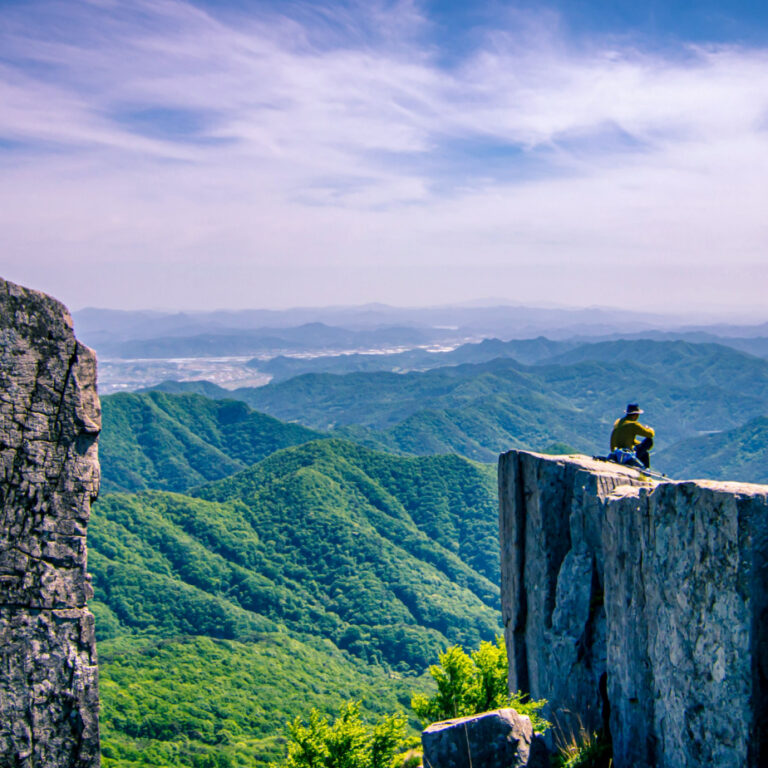
What To Do in Korea in May: The Family Month
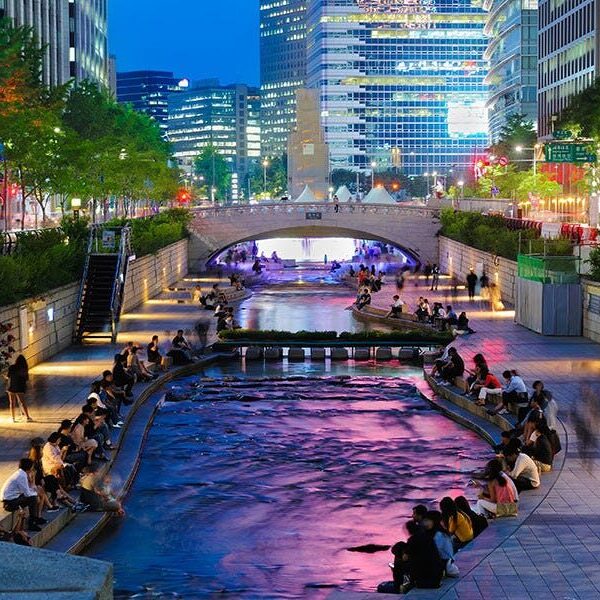
19 Did-You-Knows About Korea
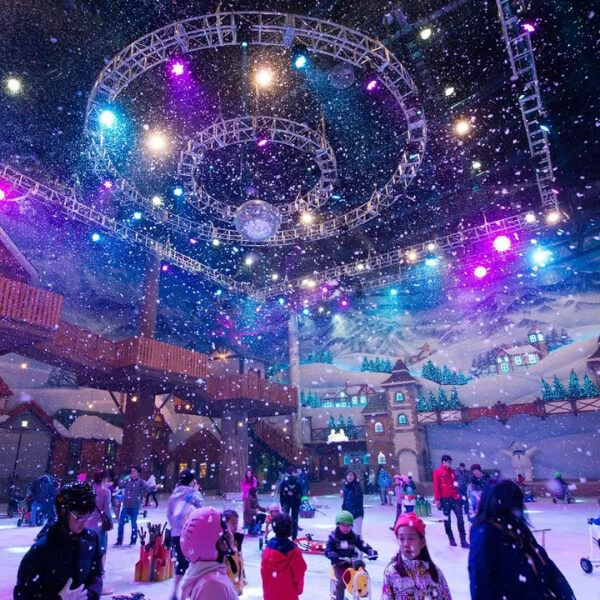
10 Ways to Spend a Magical Christmas in Korea

Hiking in Seoul, the Top 5 Mountains You Must Try

Jeju Island: Top 10 Places You Must See
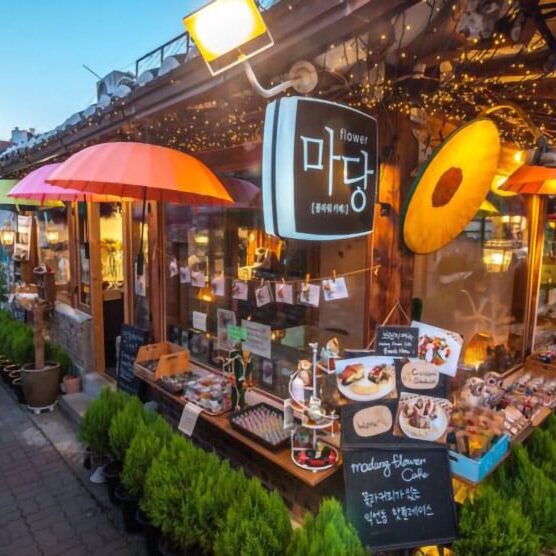
19 Best Things to Do in Seoul Right Now- An Insider’s Guide
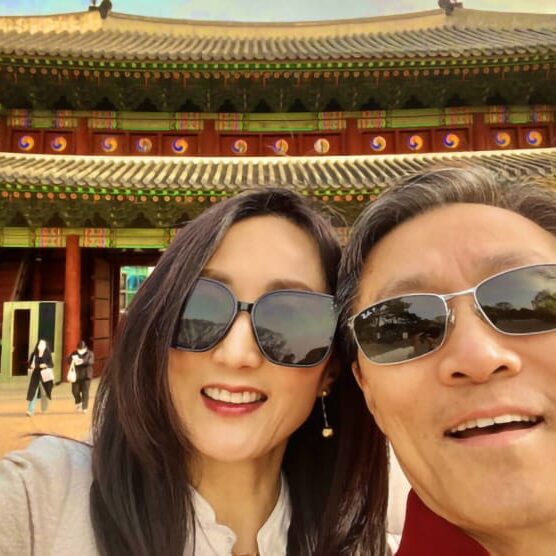
23 Reasons Seoul Will Be Your New Favorite City
Latest travel updates.
- Vaccination is NOT a requirement for entry into Korea.
- There is no requirement on the passport’s remainder validity for entry. You may travel to Korea as long as your passport remains valid throughout your stay in Korea.
- From April 1st, 2023, travelers from the USA, Canada, and 21 other countries no longer need to apply for the K-ETA to travel to Korea. This will run at least until 31st December, 2024 and is designed to make it easier to travel to Korea.

Planning Your Trip To Korea
Check the Korean Embassy for any possible travel restrictions.
- If you’re not sure where to stay, check out our guide to the best hotels in Seoul . You can find our recommendations for the best luxury, mid-range, and budget hotels in Seoul, as well as long-term apartments that you’ll love.
- For the best flight deals to South Korea, Best of Korea recommends Skyscanner and Expedia . You can find the cheapest prices and most convenient flights and buy the one that suits you best.
- For the best hotel prices in Seoul, Best of Korea recommends Klook 0r Agoda – they cover most hotels in Seoul and the rest of Korea and offer great prices without hidden fees.
- Before you travel to Korea, it’s a good idea to order an eSim card, regular sim card or portable WiFi router to collect at the airport so you’re connected as soon as you arrive. You can change a small bit of money before you travel, but you can also use the airport ATM to get some Korean won.
- There are large differences in exchange rates so you will need to do some comparing before you exchange a large sum of money. You can exchange USD to KRW easily at banks or money exchange shops in all major tourist areas like central Seoul (Myeongdong and Namdaemun are good places but the Coex Center also offers money exchange. You can also negotiate the exchange rate with the vendor if you think it is too high.
- You can withdraw cash from bank ATMs. Alternatively, use a pre-paid travel card like the one offered by Wise , which allows ATM withdrawals and payments and works perfectly in Korea.
- Don’t forget to bring a travel adapter for your electronics and leave plenty of extra space in your suitcase for the many Korean souvenirs and goodies you’ll buy on your tri
Do US Citizens Need A Tourist Visa?
No, travelers from the USA don’t need a tourist visa to enter South Korea. You can visit for up to 90 days visa-free.
Current COVID-19 Rules In Korea
Most COVID-19 rules in Korea have been dropped and now there are only 2 main rules to be aware of. First, face masks are mandatory when visiting medical facilities (hospitals). There is no longer a 7-day mandatory quarantine for people in South Korea. If you’re infected with COVID, the Korean government recommends a 5 day self-quarantine, but it’s not enforced. Travelers to Korea should follow the current restrictions or may be liable for fines or deportation.
Korean Tourism Support Hotline
If you have any concerns or problems when traveling in Korea, you can call 1330 . This is a dedicated tourism support hotline where trained specialists provide tourist assistance and is available in Korean, English, Japanese, Chinese, Russian, Vietnamese, Thai, and Malay.
US Government Travel Advisory For Korea
The U.S. Department of State currently has a level 1 travel advisory (Exercise Normal Precautions) for the Republic of Korea (ROK). Find out more about current travel advisories for South Korea on the Department of State website.

6 Best Destinations In Korea
South Korea is truly a country of contrasts. From the bustling, modern city of Seoul , with cutting-edge designer buildings, VR labs, and AI robots, to peaceful UNESCO World Heritage cities like Jeonju and Gyeongju , there are many unique places to explore.
There’s nothing worse than coming back from vacation and hearing about incredible places you missed that you wished you’d seen, such as a beautiful Buddhist temple by the beach (Haedong Yonggungsa Temple) or a leafy island getaway where deer and rabbits roam freely (Nami Island).
Here are 6 of the best destinations in Korea that you absolutely must visit, as well as some of the sights you’ll want to check out while you’re there. We’ll be bringing you lots more detailed destination guides in the future, so be sure to visit again soon.
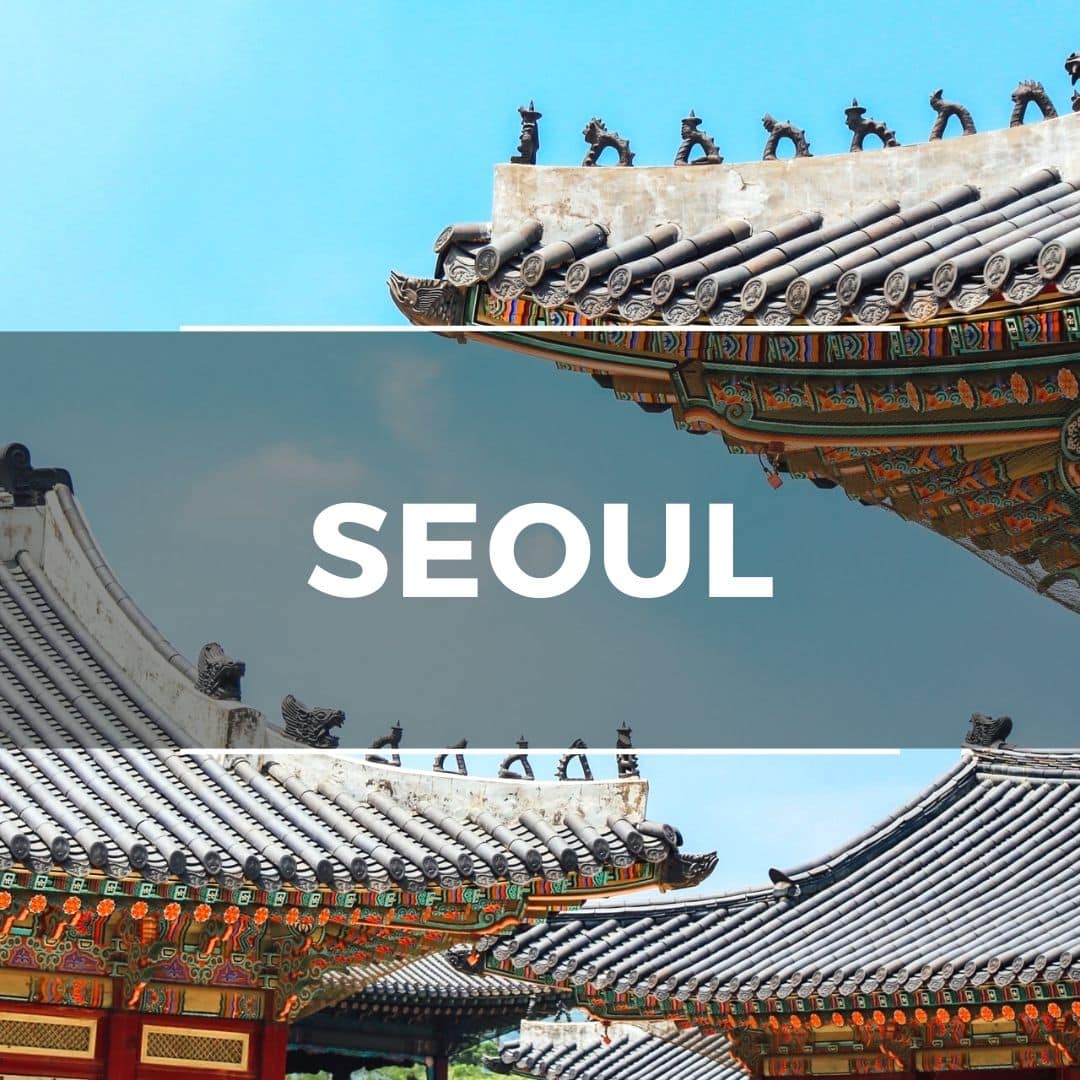
Korea’s Busy Capital
Seoul is Korea’s largest city, capital, and first, stop for most travelers to Korea. There are many beautiful places in Seoul , including landmarks, relics from ancient kingdoms, towering skyscrapers, Buddhist temples, Michelin-starred restaurants, and some of the best street food you’ll find in the world. If you see only one city in Korea, you should definitely visit Seoul.
You’ll never be bored in Seoul. Whether you’re traveling as a family, as a couple, or by yourself, there’s so much to do. Be sure to plan lots of time to check out Korea’s capital.
This Full Day Tour of Seoul will show you some of the hottest spots in the city, while this Customized Private Tour of Seoul will allow you to choose where to go.
Here are 10 of the best Seoul attractions:
- Gyeongbokgung Palace
- Bukchon Hanok Village
- Starfield COEX Mall
- Bukhansan National Park
- Myeongdong Street Markets
- Lotte World Tower
- Secret Garden (Changdeokgung Palace)
- Dongdaemun Design Plaza
- N Seoul Tower
- Yeouido Hangang Park

Korea’s Second City
Busan, Korea’s second city, is a thriving port city far away from Seoul both physically and culturally. This popular summer destination features some of Korea’s most popular beaches and bars. Explore Busan and you’ll find sprawling markets, fresh seafood, film festivals, the world’s largest shopping mall, coastal temples, and lots more.
Busan is a city with some very photogenic sights. See the sunrise on the beach, hike around leafy coastal streets on the side of cliffs, and marvel at the wide range of (living!) seafood in the markets.
This Full Day Tour of Busan will show you the best beaches, markets, and local sights, while this Customized Private Tour of Busan will allow you to choose where to go.
Here are 10 of the best Busan attractions:
- Haeundae Beach
- Gwangbokdong Food Street
- Haedong Yonggungsa Temple
- Huinnyeoul Culture Village
- Gamcheon Culture Village
- Oryukdo Sky Walk
- Lotte World Busan
- Jagalchi Fish Market
- BIFF Square & Centum City Mall
- Taejongdae Resort Park
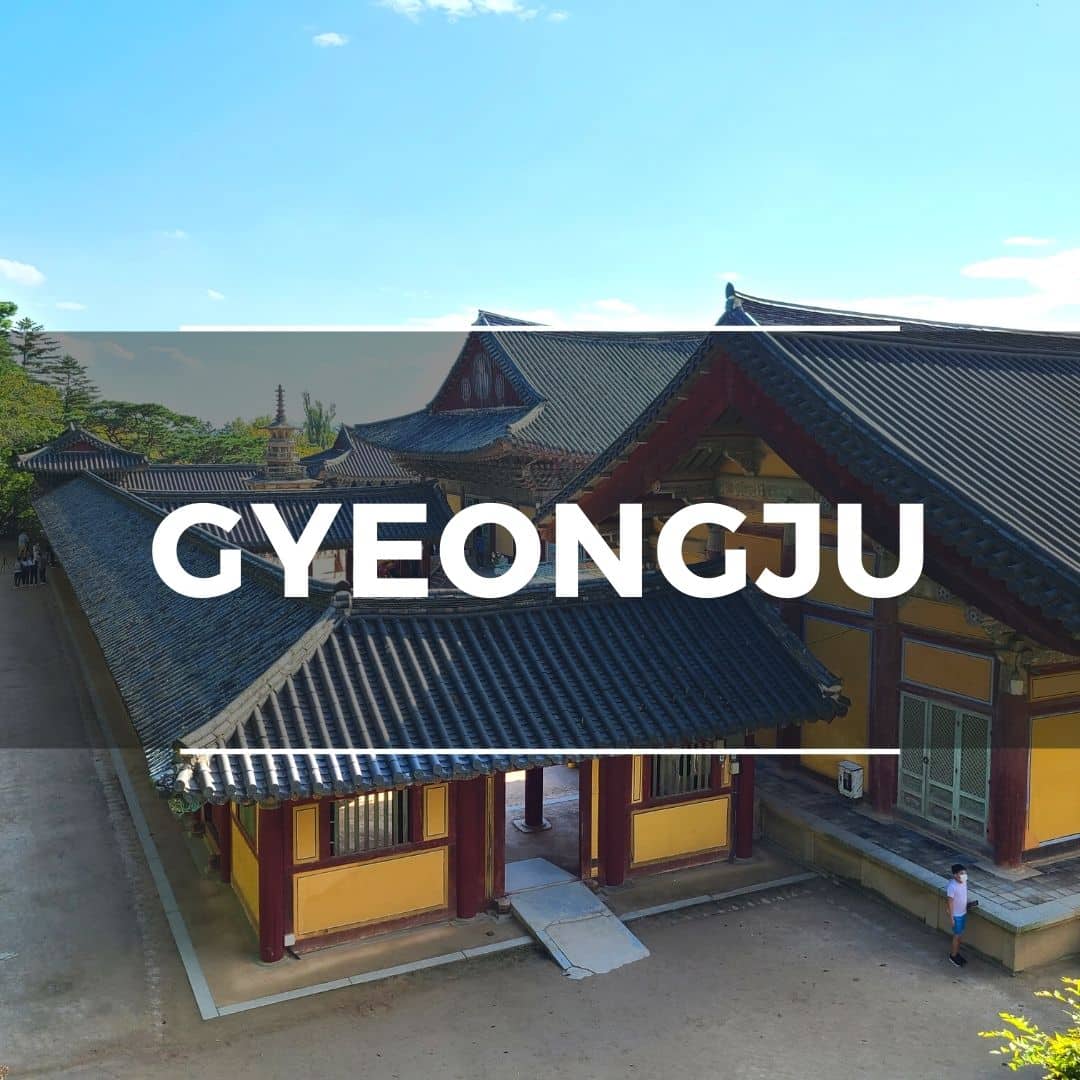
UNESCO City
Gyeongju is the former capital of the Silla Kingdom, part of the Three Kingdoms part of Korean history. These days, Gyeongju is an open air museum housing Korea’s finest history and monument. This UNESCO World Heritage City is a must-see for those who want to learn more about Korea’s deep cultural past.
Gyeongju is packed with temples, palaces, historical sights, and monuments. But it’s not just the history that draws the crowds, the city is an area of natural beauty, lined with cherry blossoms and shadowed by misty mountains.
This Full Day Tour of Gyeongju from Busan will take you around Korea’s open-air museum city, showing the top UNESCO sites along the way, while this Customized Private Tour of Gyeongju will allow you to choose where to go.
Here are 10 of the best Gyeongju attractions:
- Gyeongju Historic Area
- Bomun Lake Tourist Complex
- Bulguksa Temple & Seokguram Shrine
- Donggung Palace & Wolji Pond
- Yangdong Folk Village
- Cheomseongdae Astronomical Observatory
- Gyeongju National Museum
- Gyochon Traditional Hanok Village
- Woljeonggyo Bridge
- Gyeongju National Park

Natural Wonder
Jeju Island is Korea’s semi-tropical island that’s a popular vacation destination for locals and tourists alike. This area of outstanding natural beauty offers up rugged coastal walks, sandy beaches, green hills, and a volcano to hike up for those who enjoy a challenge. Culture and cafe lovers will also find Jeju Island a charm.
From snorkelling under the sea, to hiking above the clouds, sampling Jeju’s black pork BBQ, and drinking local green tea, there’s so many exciting activities, sights, tastes, and experiences waiting for you on Jeju Island.
This Full Day Tour of Jeju Island will show you some of the most incredible UNESCO World Heritage sites on Jeju’s East Coast, while this Customized Private Tour of Jeju Island will allow you to choose where to go.
Here are 10 of the best Jeju Island attractions:
- Seongsan Ilchulbong Sunrise Peak
- Jusangjeolli Hexagonal Lava Cliff
- Hallasan Mountain (Volcano)
- Hamdeok Beach
- Jeju Folk Village
- Hyeopjae & Geumneung Beach Areas
- Cheonjeyeon & Jeongbang Waterfalls
- Udo Traditional Island
- Yakcheonnsa Coastal Buddhist Temple
- O’Sulloc Green Tea Fields
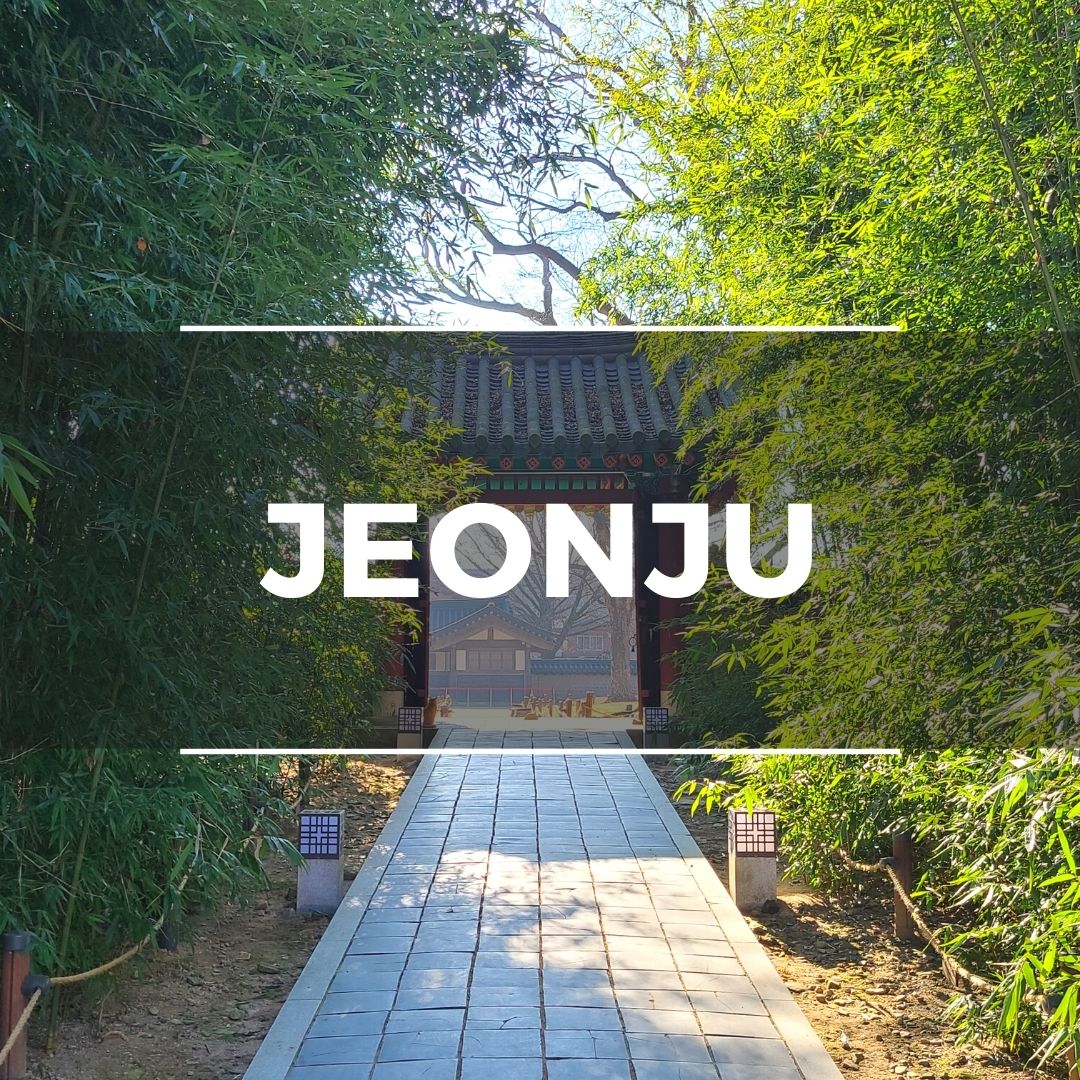
Traditional Korea
Jeonju is famous for its historical and cultural sights, including the sprawling Jeonju Hanok Village, packed with more than 700 traditional hanok houses. Jeonju’s many impressive sights are close to each other and perfect for a day trip from Seoul or Busan. You can even stay overnight in one of the traditional houses.
Jeonju is a tourist hotspot so there are plenty of things to keep travelers entertained and places to experience traditional Korean food and drinks. Be sure to check out the Jeonju bibimbap, one of Korea’s national dishes. Rent hanbok (traditional clothes), take lots of pictures, and see the sights.
This Full Day Tour of Jeonju will show you around the beautiful hanok houses and traditional Korean restaurants, while this 2-Day Tour of Jeonju includes an overnight stay in a hanok and lots of delicious Korean meals.
Here are 10 of the best Jeonju attractions:
- Jeonju Hanok Village
- Gyeonggijeon Shrine & Portrait Museum
- Jeongdon Catholic Church
- Jeonju Hyanggyo Confucian School
- Nambu Traditional Market
- Jaman Mural Village
- Omokdae Viewpoint
- Deokjin Park
- Hanbyeokdang Pavilion
- Taiji-ro & Hyangoyo-gil Shopping Streets
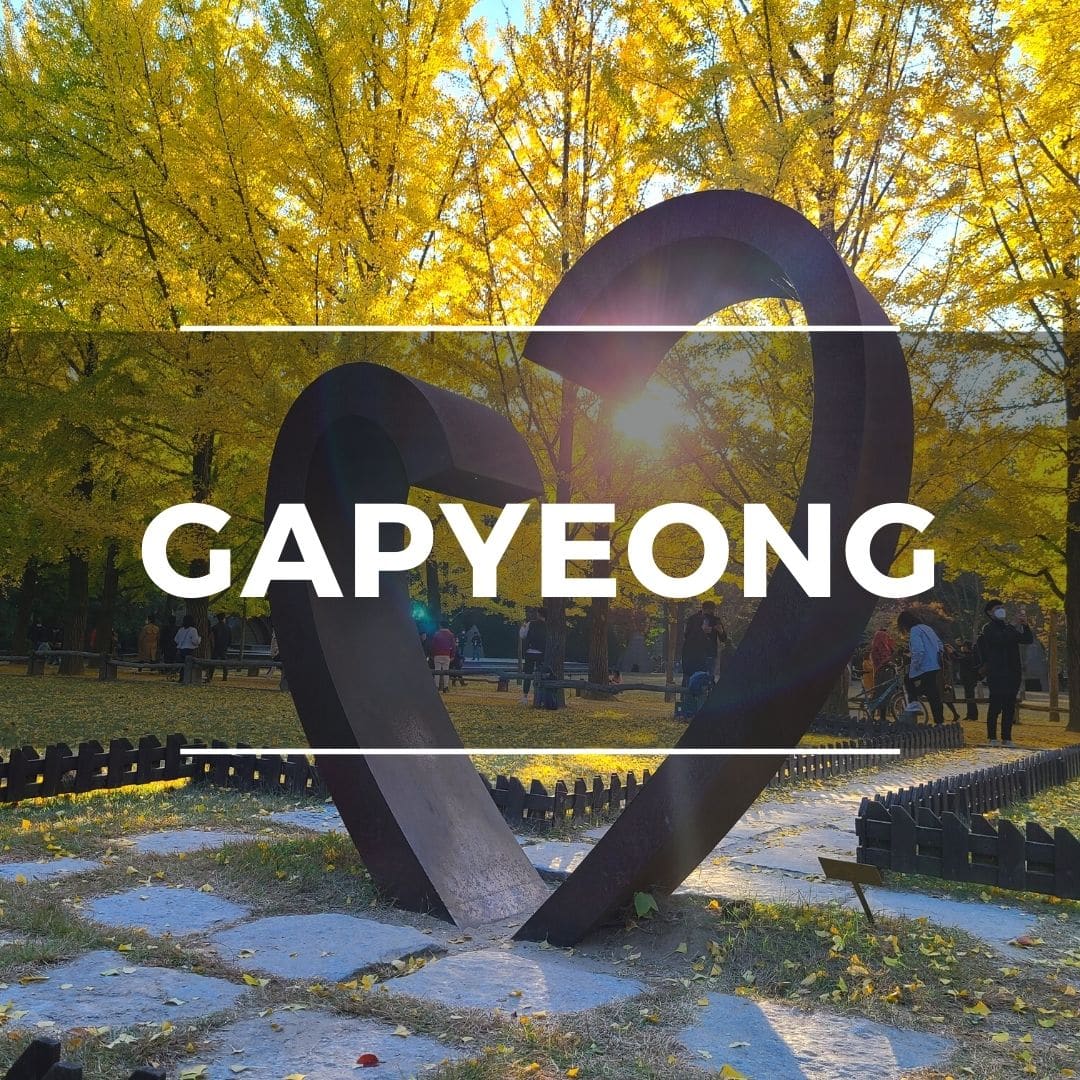
Rural Attractions
Gapyeong County is an area just outside of Seoul that’s home to several interesting attractions celebrating Korean and foreign culture. The lush green hills and blue rivers of Gapyeong make it a great place to immerse in Korean nature.
You’ll find some of the hottest day trip locations here. Explore Gapyeong County on a day trip from Seoul. You can see romantic tree-lined streets and cafes on Nami Island, explore one of Korea’s most beautiful gardens, take a trip to Petite France, and enjoy cycling through the hills on an abandoned railway track.
This Full Day Tour of Gapyeong will show you around Nami Island, Garden of Morning Calm, and the Rail Bike Park.
Here are 10 of the best Gapyeong attractions:
- Nami Island
- Garden of Morning Calm
- Petite France
- Ganchon Rail Bike Park
- Edelweiss Swiss Village
- Cheongpyeong Lake
- Jarasum Island
- Kalbongsan Recreational Forest
- Gapyeong Sledding Hills
- Nami Island Zip Line

There are loads of locations to visit in Korea that make for a perfect day trip from Seoul. Hop on a coach, train, or tour bus in the morning and explore one or more of these unique destinations.
Here are 10 of the best day trips from Seoul to discover on your next journey to Korea:
- DMZ (North Korean Border)
- Suwon Hwaseong Fortress
- Everland Theme Park
- Jeonju Historic City
- Seoraksan National Park
- Korean Folk Village
- Alpaca World
- Gwangmyeong Cave
Most travelers to Korea arrive at Incheon Airport and then travel into Seoul (it’s only 40 minutes away) to begin their journey. Seoul is certainly an incredible place to start traveling, but it definitely shouldn’t be your only destination. Korea has a lot to offer, including a lot of seasonal activities and events that you should take into consideration.
Spring and fall are the best seasons to visit Korea and during these times the traditional cities like Gyeongju and Jeonju look amazing. They’re covered with cherry blossoms or fall foliage and this creates some postcard-like scenes. Gapyeong area is packed full of natural sights to enjoy, so definitely check out these areas.
If you’re visiting during summer, head towards the coastal areas, including the north-east coastal towns of Gangneung & Sokcho, or the south-east coastal areas of Busan and the nearby islands, such as Geoje, Tongyeong, and Yeosu. You’ll find lots of winter activities to enjoy in these areas.
Winter is cold and dry and, ironically, a great time to visit Jeju Island. This semi-tropical island is warmer than the mainland, but still gets snow on the mighty Hallasan Mountain. You can sit on a sunny beach one day and then hike knee-deep in snow the next. Jeju is also famous for its citrus, with thousands of tangerine trees dropping their juicy fruits in early winter.

Where To Stay In Seoul
South Korea is truly a country of contrasts. From the bustling, modern city of Seoul , with cutting-edge designer buildings, VR labs, and AI robots, to peaceful UNESCO World Heritage cities like Jeonju and Gyeongju , there are many unique places to explore. If you’ve decided on Seoul, here are some of the best hotels that are well located and highly reviewed.
Choosing the best destinations to visit in Korea can be a challenge, especially if you don’t know what there is to see. You might not have heard of some of these destinations, which is not surprising. Korea is a country of undiscovered wonders that are waiting to be found.
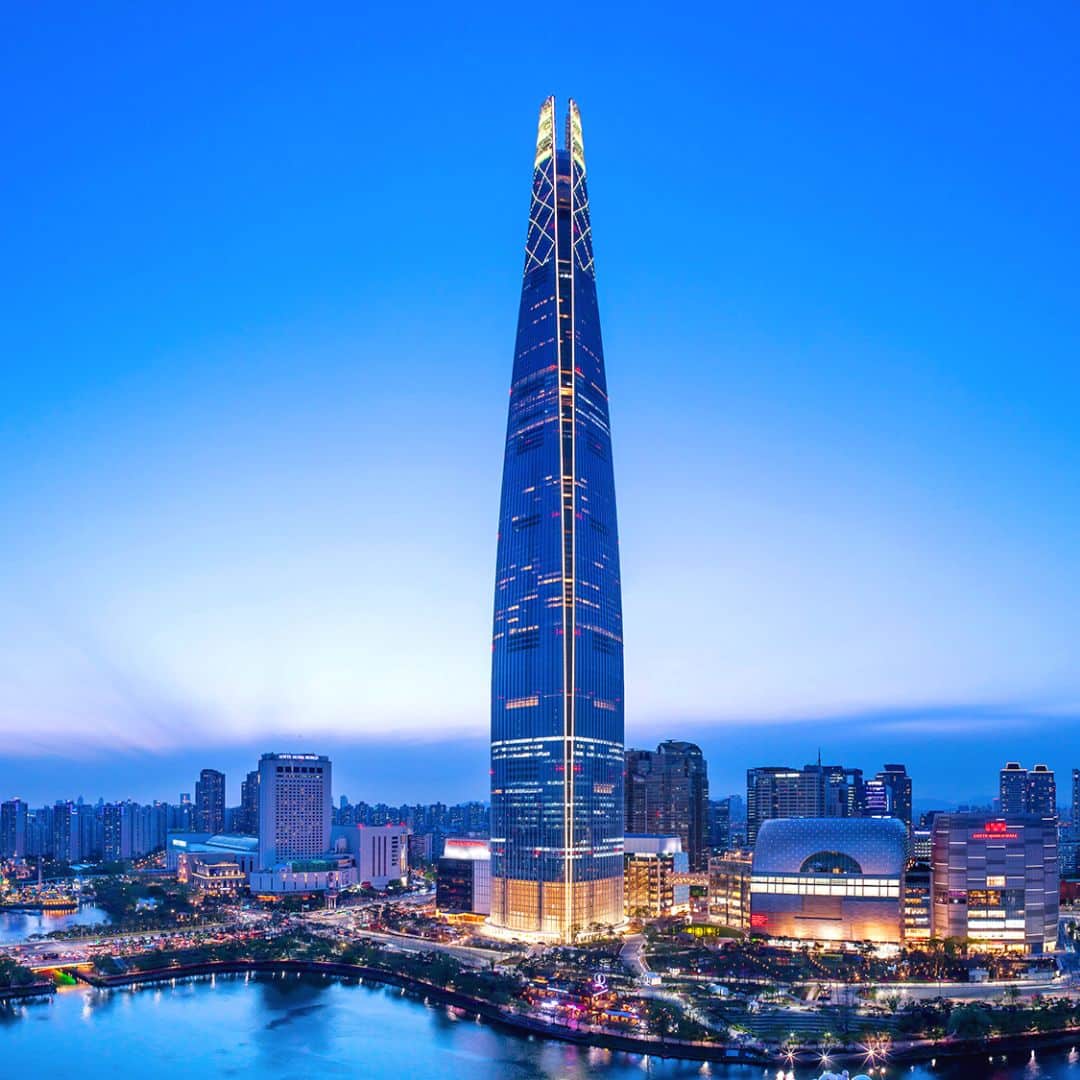
If you want the best Seoul has to offer, these luxury hotels are for you. Located in Seoul’s glitziest neighborhoods, these hotels are within walking distance of Michelin-starred restaurants, chic boutiques, galleries, museums, and the finest shopping experiences available.
Expect nothing but the best in terms of service and style at these luxury hotels. Silky soft sheets, immaculate rooms with the finest fixtures and fittings, and true 5-star service from the hotel staff. These hotels have sports, dining, and entertainment facilities to make you comfortable during your stay.
Airport transfers are available with these hotels, making your journey into and out of Seoul a breeze. Located in popular upmarket districts in Seoul, these neighborhoods have lots of local charm for you to discover, as well as allow easy access to other parts of the city with excellent transport options nearby.
Not only are these beautiful, comfortable hotels inside, but they are also located in some of the most iconic buildings or districts and provide amazing views over some of Seoul’s most interesting districts. The view from the first hotel is worth the cost alone.
Recommended Luxury Hotels In Seoul
Here are 3 of the best luxury hotels in Seoul that we recommend for an unforgettable stay in Korea’s capital:
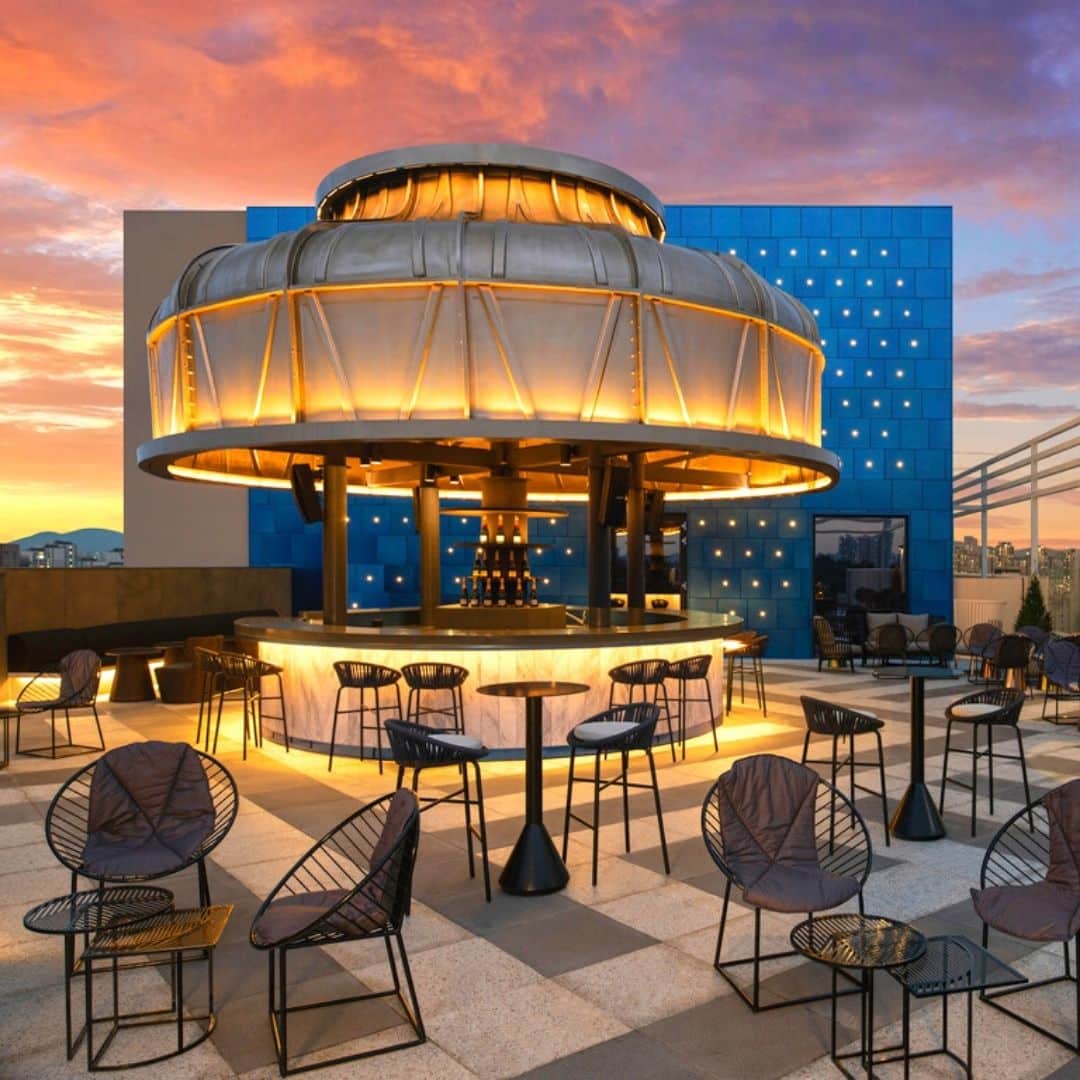
Families. couples and other travelers that want to experience the best of Seoul without breaking the bank can sleep easy with these mid-range hotel recommendations in some of Seoul’s trendy, vibrant districts, including Hongdae, Gangnam, and Myeongdong.
Encounter stylish accommodation in Seoul’s Hongdae districts, which is full of street culture and artistic scenes from the district’s eponymous Hongik University – one of Korea’s leading art centers.
Fashion lovers and shoppers will find lots to love in downtown Gangnam, with its wide streets and glassy storefronts bracketing narrow side streets and hidden delicacies.
Myeongdong is famous for its budget and mid-range accommodation options, including several hotels by the famous Lotte chain – one of Korea’s best mid-range brands.
Whichever mid-range hotel you choose in Seoul, you can be sure you’ll have fantastic city views, convenient subway access, and lots of unique cultural sights, sounds, and tastes to experience.
Recommended Mid-Range Hotels In Seoul
Here are 3 of the best mid-range hotels in Seoul that we recommend for an comfortable stay in Korea’s capital:

Seoul has a wealth of budget accommodation options that will help make your money go further. These hotels are all around $100 or less but offer the comfort and convenience that you’d expect to find in a mid-range hotel. One even has a beautiful rooftop pool.
Although these hotels are cheaper, don’t lower your expectations. You’ll always find great service in Korea. Save on sleeping to spend more on shopping, souvenirs, sights, and all the other fun things there are to do in Seoul.
These budget hotels in Seoul are also in great locations for shopping, enjoying local culture, and seeing the real side of Seoul and Korea. Hongdae offers bargain hunters the chance to get boutique fashion at market prices, Gangnam has plenty of cafes and cheap eats tucked away off the main avenues, and Myeongdong is a budget traveler’s paradise full of $1 street food and bargain souvenirs.
You won’t be disappointed with a night at any of these hotels. If you want to make your budget go further so you can spend more on some of the incredible day trips Seoul has to offer, definitely book a night at one of these hotels.
Recommended Budget Hotels In Seoul
Here are 3 of the best budget hotels in Seoul that we recommend for an affordable stay in Korea’s capital:

Korean Travel Tips
Korea is a unique country with a written language that looks nothing like English, fascinating etiquette rules , and an always busy lifestyle. Travelers may be lost trying to do even the simplest things.
These travel tips include the best options for staying connected, how to use public transportation easily and cheaply, great discount cards that will save you money as you travel, where to exchange money, and how to learn some basic Korean phrases for when you travel.
These essential Korean travel tips have been crafted by experienced travelers who love to save time and money. Only the best quality services and products are recommended here.
Here are our Korea travel essentials that’ll help you get around more easily, save you money, and let you get the most out of your trip.
Plan ahead now and you’ll have fewer troubles on your travels, giving you more time to enjoy your time in Korea.
If you’re traveling to Korea, you’re almost certainly going to want to get access to the internet to help you navigate, translate Korean, or even book tickets to attractions. Korea has one of the world’s best mobile internet and the prices are very reasonable. 5G mobile internet services are available across the country and Korea was one of the first to get the super-fast service. You won’t have problems connecting with a sim card or WiFi router when you travel.
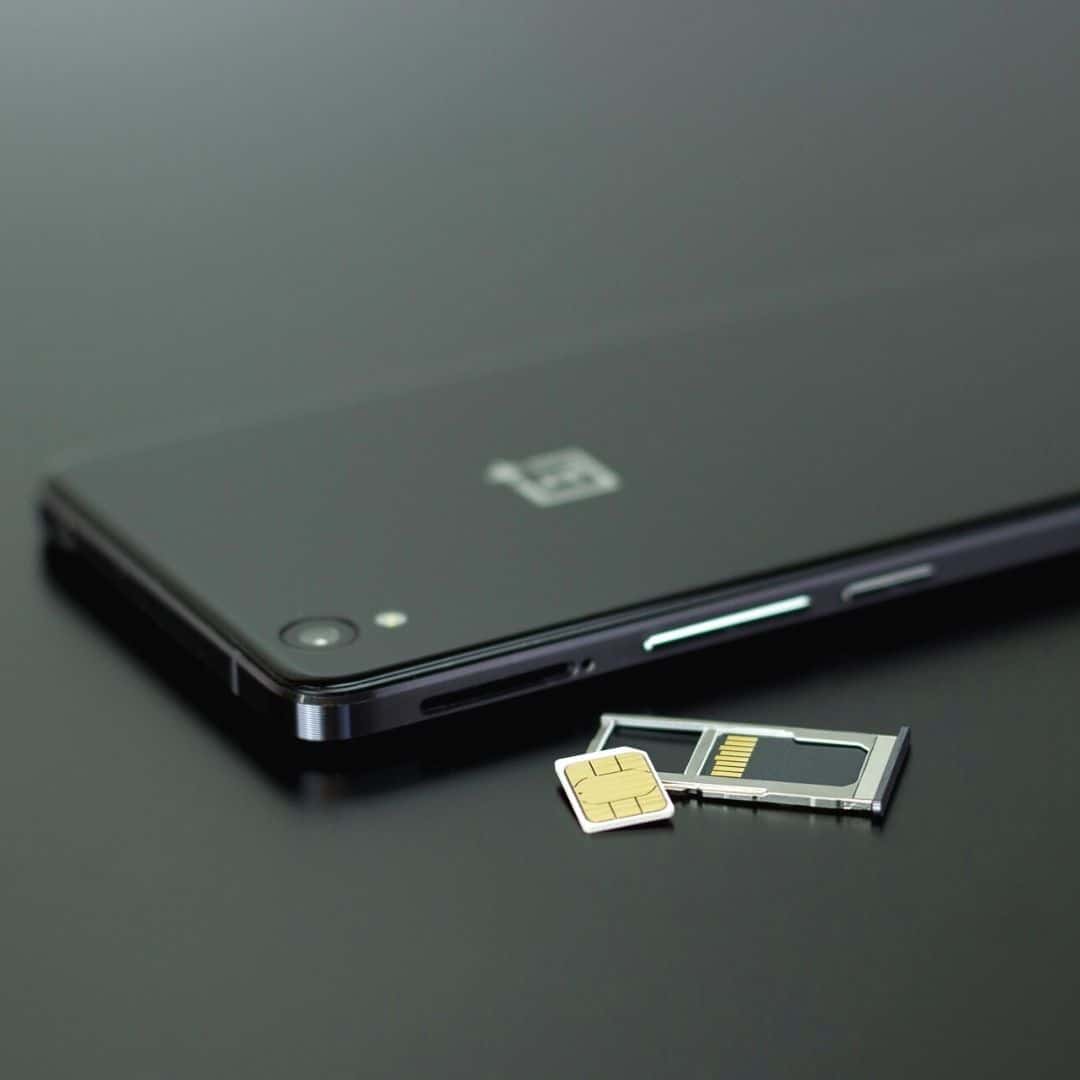
Sim Cards & Data Plans
A Korean sim card is a great way to get access to all your usual cellphone services when you travel to Korea. Sim cards come with data-only packages, or data and phone services combined.
Buying a Korean sim card will give you access to a Korean phone number, which is useful when using Korean apps. If you want to order food online in Korea, you need to have a Korean phone number to complete the order.
Korean Sim Card Costs
Prices start at W5,900 ($5) for a 1-day sim. You can also get 10-day sim cards (W34,700/$28) and 30-day sim cards (64,400/$52). These all come with unlimited data, domestic calls, and texts.
You can purchase a Korean Sim Card From Klook and collect it at the airport. This is a very convenient option as you can use it immediately to help navigate and check in back home.

Portable WiFi Routers
A Korean portable WiFi router will give you access to mobile internet throughout Korea by connecting to WiFi hotspots run by the major phone companies in Korea and comes with great coverage.
The major benefits of a portable WiFi router include a lower cost than a Korean sim card and also the ability to connect up to 3 devices to 1 router. That means that families and groups will be able to share the service.
Korean Portable WiFi Router Costs
The cost of a Korean portable pocket WiFi router is W3,200 ($2.60) per day. You can rent the WiFi router for as many days as you require and pay in advance and pay any excess days when you return it.
You can also purchase a Korean Portable WiFi Router From Klook and collect it at the airport. You can book online before you travel so that it’s guaranteed to be waiting for you.
Should I Get A Sim Card Or WiFi Router In Korea?
Both a sim card and WiFi router are great options for travelers to Korea and will almost guarantee a great reception for mobile internet. The choice between whether you should get a sim card or WiFi router in Korea really comes down to the costs involved and if you need a Korean phone number.
WiFi routers are cheaper and allow you to connect 3 devices, so they’re perfect for families. However, a sim card gives you a Korean phone number, which means you can call people and also register for Korean apps which require a phone number.
Check out our detailed article about the Best Sim Card & Portable WiFi options for traveling to Korea.
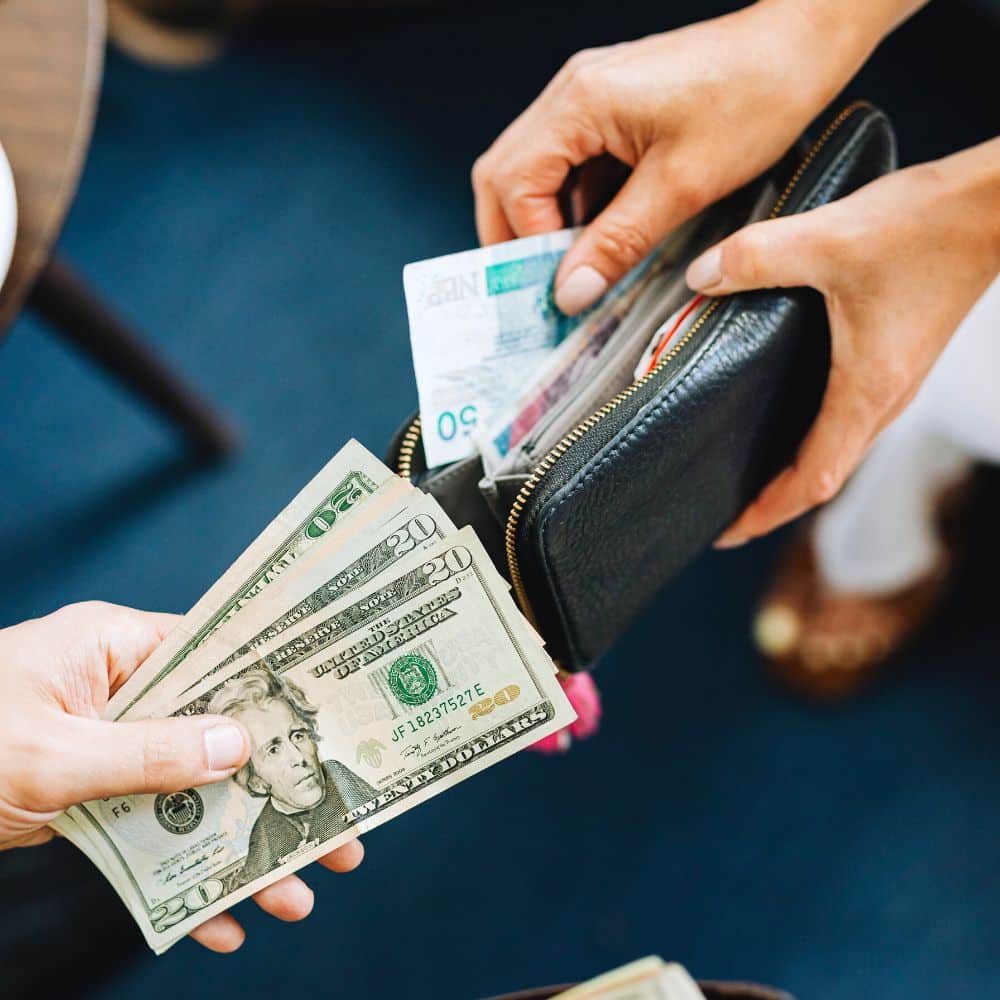
Korea is a safe, modern country and one that has pushed hard for the mass adoption of cards. Almost every location that deals with money is required to accept card payments. This is great news for travelers to Korea as you can use a card to pay for meals out, entrance tickets, trains, and lots more.
Cash is still needed for some things, such as topping up transportation cards like the T-Money Card (more on that soon) and for paying for small things like street food. Please note, as Korea doesn’t have a tipping culture, you don’t need cash for leaving a tip. In fact, if you try to leave a cash tip, it’ll be returned to you in most places.
Read on to find the best tips to avoid getting ripped off when exchanging money and how to pay the lowest fees when you use a card to pay in Korea. Be a smart traveler and save more money for shopping and souvenirs.
Korean Money Exchange Options
Once you arrive in Korea, there are several options for exchanging money. First, you can exchange money at a money changer in tourist areas such as Myeongdong. These money changers used to have the best rates in Seoul.
However, a better option these days is to use the currency exchange machines from WOW Exchange. These machines are located all over Seoul’s most popular tourist spots, stations, and hotels. They allow you to exchange foreign cash directly to Korean won, with better rates than at the airport. You can also use these machines to claim a tax refund for your shopping before heading to the airport. Both options require a passport.
Should I Change Money At The Airport?
Exchanging money at the airport is easy and convenient as you can instantly get cash to use for shopping, transportation, and general use. However, the exchange rate at the airport is usually much worse than you’ll find in other places in Korea, as mentioned previously. If you need cash as soon as you land, withdraw a small amount ($50) and then exchange the rest in Seoul.

Travel Money Cards For Korea
While cash is useful and familiar when traveling, a much better option is to use a travel money card (also known as a currency card). Travel money cards, such as the Wise Travel Money Card, allow you to pay for travel expenses without the need to carry cash or convert money.
A travel money card offers the convenience of using a credit card without high fees that a regular bank could charge. It also allows you to withdraw cash from an ATM without a fee (up to a limit), so you can avoid carrying any cash on the flight or using a money exchange. The exchange rate is the mid-market rate, meaning it’s better than you’ll find even at the money exchanges listed before.
Can I Use My Bank Card In Korea?
Credit cards are widely accepted in Korea. Visa and Mastercard users shouldn’t face a problem, but other cards aren’t as widely accepted. Debit cards and cash withdrawals might not work depending on the bank. Your bank may charge a fee when using it overseas, or give a bad exchange rate. Check with your bank before traveling.
The best option for travel money in Korea is to have a mixture of cash and cards, with a backup credit card just in case. Taking some USD with you is always a good option as you can find plenty of places to exchange it to Korean won and probably at a better rate than you’ll get in the US. If you want to withdraw money in Korea, look for the global ATMs in tourist areas.
Taking a travel money card will be safer, cheaper, and more convenient than relying on your own bank or credit card, too. These cards offer competitive rates and are widely accepted around the world so you can use them to visit other countries, too. If you use a travel money card and it gets lost or stolen, you can freeze the card instantly with the app and not have to worry about losing the balance on the card.
When you visit Korea, you’ll notice that most people pay for goods with a card or payment app, even for small purchases like a bottle of water. Unfortunately, the payment apps that are common in the US, such as Apple Pay or Google Pay, aren’t available in Korea. Korean apps, such as Kakao Pay, require a Korean bank account, and therefore aren’t an option for travelers.
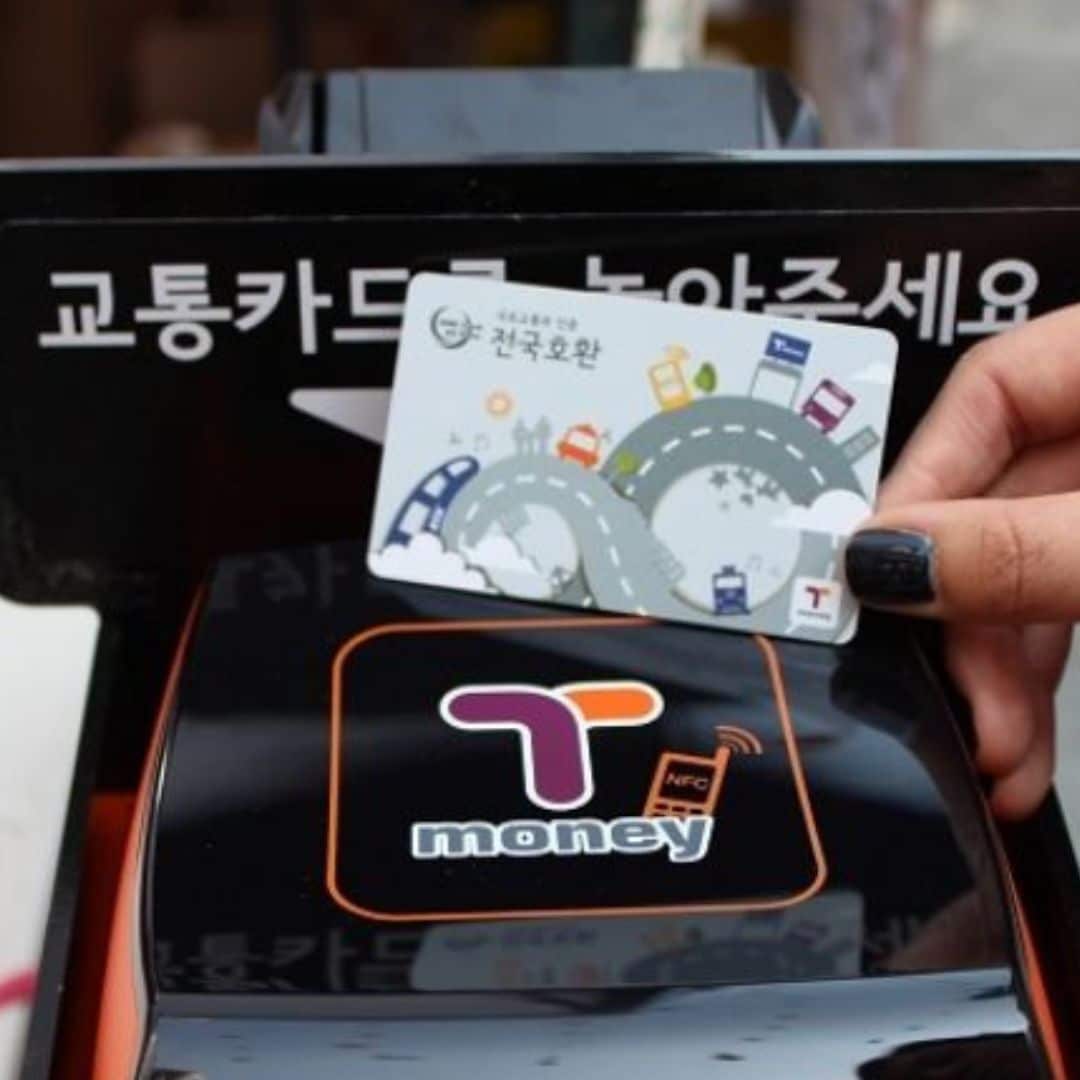
T-Money For Public Transport
The T-Money Card is an essential purchase for every traveler to Korea. The T-Money Card is a transportation card that allows contactless travel on Korea’s buses and subways. Simply buy a T-Money Card, top-up the card, then use it to travel.
Not only is this transportation card really convenient, it also saves you money. You’ll receive a discount on every bus or subway journey when you pay with the T-Money Card. These discounted fares are available in all cities across Korea, not just Seoul.
This isn’t the only use of the T-Money Card. You can also use to buy a coffee from Starbucks, get lunch in McDonald’s, shop for Korean cosmetics, and even to watch a baseball game. It’s a very useful card that can be used anywhere you see the T-Money Card.
You can get the T-Money Card in Korea from subway stations and at certain transport centers, including Seoul Station and Incheon Airport. The card costs 2,500 KRW. You can buy the card with a credit card, but to top-up the card, you need to use cash. If you buy a Discover Seoul Pass, this card includes the T-Money functions.
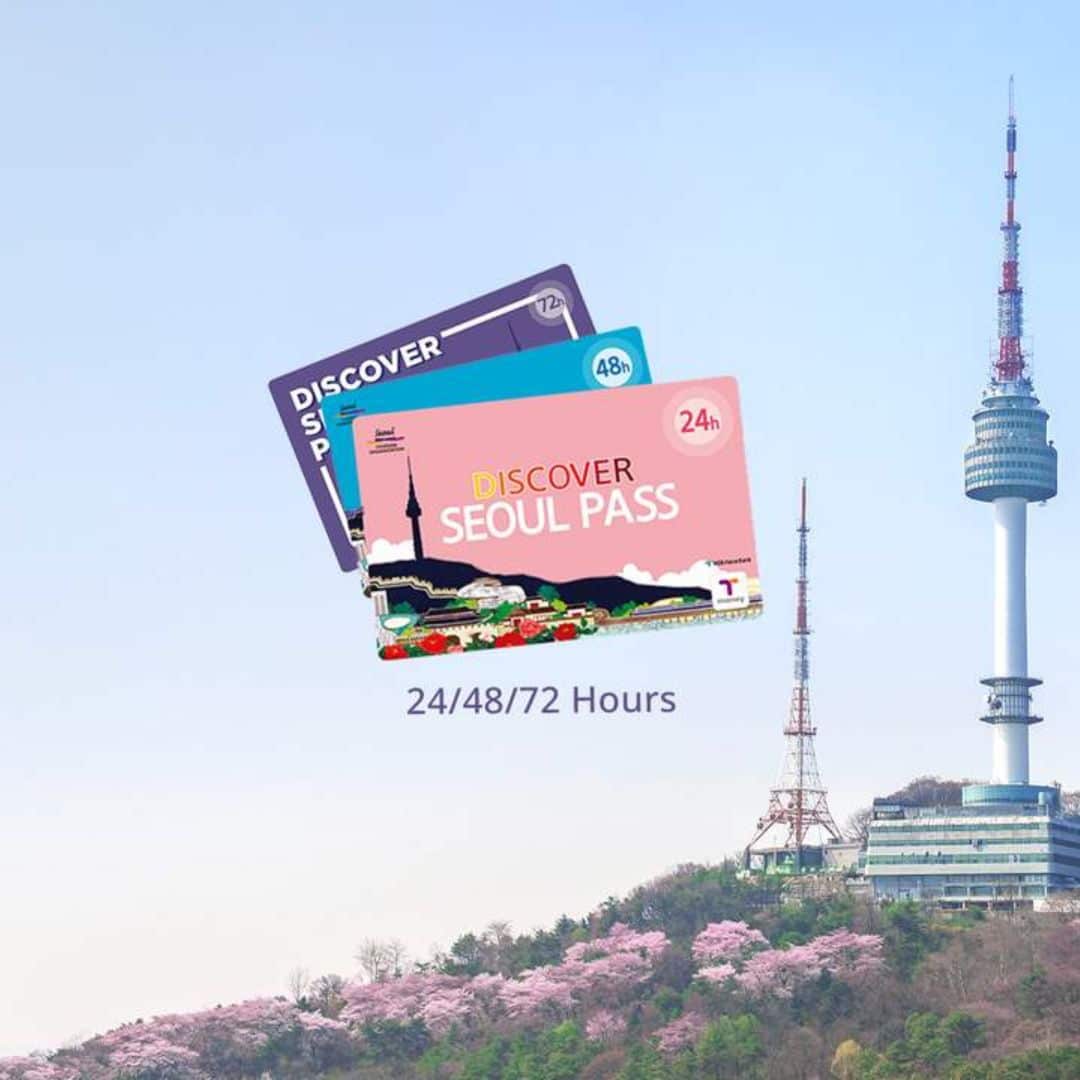
Save With The Discover Seoul Pass
Travelers to Seoul have a lot of options for incredible attractions to enjoy and experience. However, tourists, especially families, can find that the cost of these attractions quickly add up, especially when you are visiting many locations in a short time.
A great way to save money when you travel in Seoul is to buy a Discover Seoul Pass – a special card that offers you big savings on some of Seoul’s top attractions, as well as other benefits.
If you plan to visit Seoul’s Royal Palaces, N Seoul Tower, Lotte World Adventure Theme Park, the COEX Aquarium, Alive Museum, Seoul Zoo, or other premium attractions, you can gain free entry when you purchase a Discover Seoul Pass.
Not only that, you can also get a free river cruise, free hanbok rental, free ride on the Airport Express from Incheon Airport to Seoul, free City Tour Bus Ride, free T-Money Card and lots more.
The Discover Seoul Pass is valid for 24 | 48 | 72 hours and is valid from the moment you first use it until that many hours later.

Things To See & Do In Korea
If you want to build your own itinerary for South Korea, then this section of the South Korea Travel Guide will provide the building blocks you need to craft the perfect trip.
South Korea is a country packed with famous landmarks and sights, unique culture – modern & historical, family-fun activities, outdoor adventures, cozy cafe districts, and natural wonders. There’s more to do in Korea than you could imagine and it’s impossible to explore it all in one trip. Try to plan your itinerary by cities and locations. For example, plan your day in Seoul stay by district.
Here are some of the best things to see and do in South Korea, broken down into different themes so you can find things that interest you the most. The location of each of these attractions is included, too, so you can create a city by city itinerary, seeing the best South Korea has to offer.
These attractions are available all year round so whenever you go to Korea, you can enjoy them. There are plenty of things to see and do in Korea that only happen during certain seasons. Check out the Season Guide in this South Korea Travel Guide for more information about Korean festivals and seasonal events.
Here are 10 of the best Korean landmarks:
- Lotte World Tower (Seoul)
- Bukchon Hanok Village (Seoul)
- Nami Island (Gapyeong)
- Banwol ‘Purple Island’ (West Coast)
- N Seoul Tower (Seoul)
- Dongdaemun Design Plaza (Seoul)
- Seoraksan National Park (Gangwon Province)
- Hwaseong Fortress (Suwon)
- Cheonggyecheon Stream (Seoul)
- Gamcheon Cultural Village (Busan)
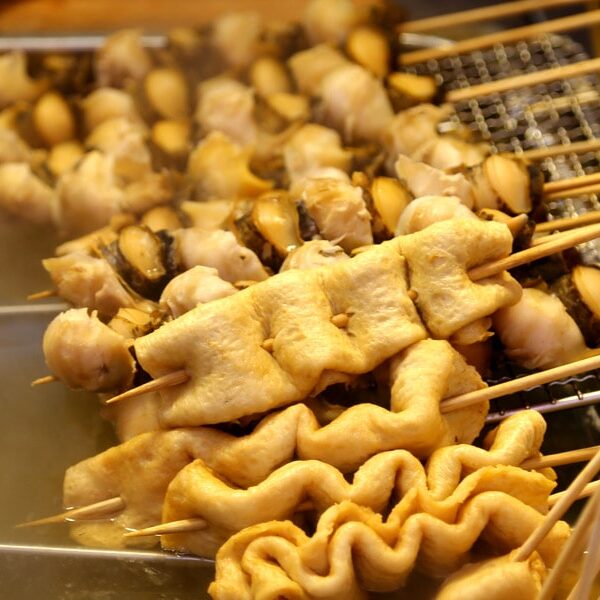
Why travel to a diverse country such as Korea and not embrace the local culture? Here are 10 of the best unique Korean experiences you can only enjoy fully in Korea. Be brave, try something new and create lasting memories of your Korean adventure.
Here are 10 of the best uniquely Korean experiences:
- Wear Traditional Korean Hanbok (Royal Palaces)
- Sing In A Korean Noraebang (Everywhere)
- Sleep In A Korean Hanok House (Hanok Villages)
- Visit The Kimchi Museum (Seoul)
- Eat Street Food (Traditional Markets)
- Experience A Korean Temple Stay (National Parks)
- Drink Makgeolli – Korean Rice Wine (Everywhere)
- Visit The World’s Most Dangerous Border – The DMZ
- Relax In A Korean Sauna (Everywhere)
- Visit A Korean Green Tea Field (Boseong, Jeju)

Here are 10 of the best Korean historic sights:
- Gyeongbokgung Palace (Seoul)
- The Secret Garden (Seoul)
- Bulguksa Temple (Gyeongju)
- Jeonju Hanok Village (Jeonju)
- Seoul Fortress Walls (Seoul)
- Haedong Yonggungsa Temple (Busan)
- Andong Hahoe Folk Village (Andong)
- Gyeongju Historic Area (Gyeongju)
- Baekje Historic Area (Gongju, Buyeo)
- Jangsaengpo Whale Museum (Ulsan)

Here are 10 of the best modern K-Culture spots:
- K-Pop Headquarters (Seoul)
- HYBE Insight (Seoul)
- COEX Artium (Seoul)
- K-Style Hub (Seoul)
- Hongdae Shopping Street (Seoul)
- Hallyu K-Star Road (Seoul)
- Asia Culture Center (Gwangju)
- Busan International Film Festival Square (Busan)
- MBC World Theme Park (Seoul)
As you’ll see, there’s just so much to see and do in Korea. You could spend a whole week in Seoul and not run out of exciting activities to do and sights to explore. Our advice is to try to avoid planning to do too many things in one day and adding in plenty of free time.
There’ll be many random things that catch your eye, such as a curious side street, or your nose, like the delicious smells from a food stall. Make sure you’ve got flexibility in your schedule to investigate these surprises and to take a rest if you need to – walking and traveling for days on end can get tiring.
Korea comes alive at night and markets and city streets are often best explored after the sun goes down. Drab concrete buildings come alive with neon signs, lanterns, and electric lights and are quite a sight to be seen. Visit popular tourist attractions such as the royal palaces and hanok villages during the morning as they’ll be less crowded.
If you plan to visit the Secret Garden in Changdeokgung Palace (you really should!), tickets are available on the day and sell out fast. Getting to these places early can guarantee you get tickets, see the sights unobstructed, and have time in the evening to soak up the night life and culture.
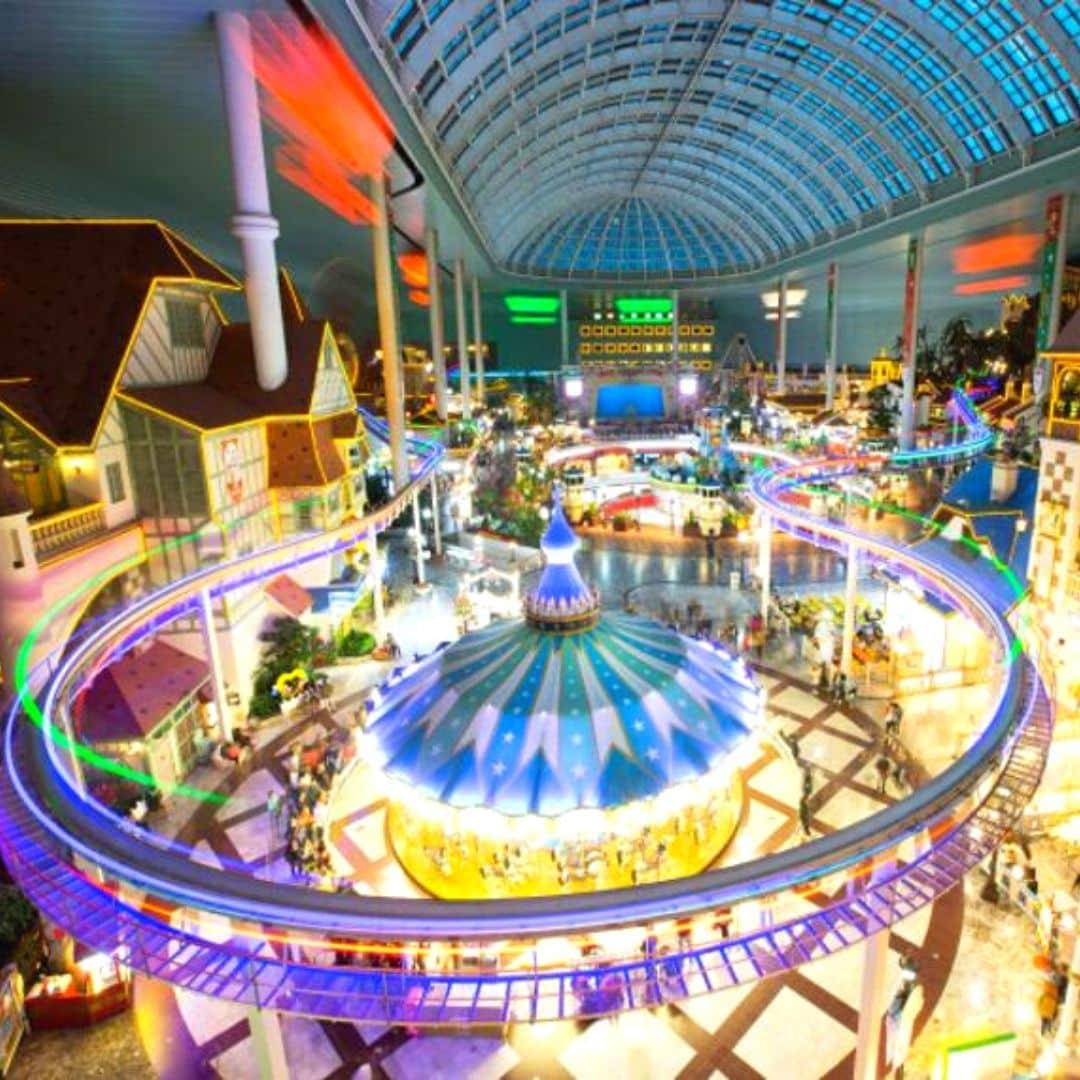
Here are the 10 best family-friendly activities in Korea:
- Nami Island & Garden of Morning Calm (Gapyeong)
- Seoul Grand Park & Zoo (Seoul)
- Lotte World Adventure (Seoul, Busan)
- Alive Museum & Dynamic Maze (Seoul)
- Seoul Children’s Grand Park (Seoul)
- Seoul Children’s Museum (Seoul)
- Everland & Caribbean Bay Theme Parks (Near Seoul)
- Sea Life Busan Aquarium
- Jeju Dinosaur Island (Jeju)
- Alpaca World (Gangwon Province)
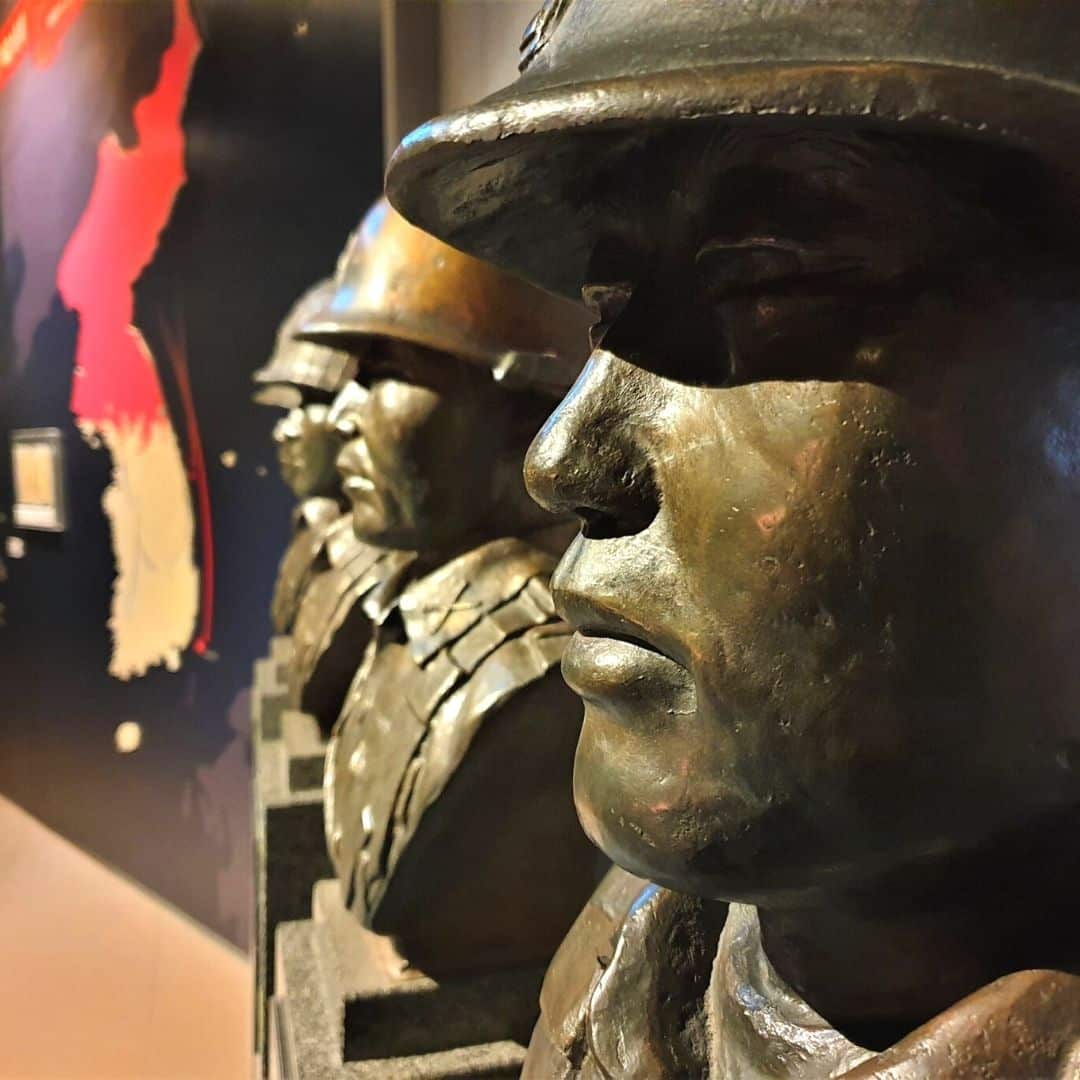
Here are the 10 best museums & galleries in Korea:
- National Museum of Korea (Seoul)
- Seoul Museum of Art (Seoul)
- Gyeongju National Museum (Gyeongju)
- War Memorial of Korea (Seoul)
- National Folk Museum of Korea (Seoul)
- National Maritime Museum (Busan)
- Seodaemun Prison History Museum (Seoul)
- Seoul Museum of History (Seoul)
- Museum Kimchikan (Seoul)
- Daegu Art Museum (Daegu)

Here are the 10 best cafe areas in Korea:
- Ikseondong Hanok Village (Seoul)
- Gyeongui Line Hongdae (Seoul)
- Samcheondong Cafe Street (Seoul)
- Jeonpo Cafe Street (Busan)
- Hwangnidan-Gil (Gyeongju)
- Gangneung Coffee Street (Gangneung)
- Sinsa-Dong / Garosugil Road (Seoul)
- Jukjeon Cafe Street (Seoul)
- Hwaseong Haenggung Area (Suwon)
- Kim Kwang Seok Gil Street (Daegu)

Here are 10 of the best Korean markets and shopping areas:
- Gwangjang Market (Seoul)
- Myeongdong Market Area (Seoul)
- Jagalchi Fish Market (Busan)
- Centum City Mall (Busan)
- IFC Mall (Seoul)
- Starfield COEX Mall (Seoul)
- Nambu Market (Jeonju)
- Seomyeong Underground Shopping Center (Busan)
- Seogwipo Maeil Olle Market (Jeju)

Here are 10 of the best natural sights in Korea:
- Hallasan Mountain (Jeju)
- Jirisan National Park (Jeollanam Provice)
- Seoraksan National Park (Gyeonggi Province)
- Seongsan Ilchulbong Sunrise Peak (Jeju)
- Damyang Juknokwon Bamboo Forest (Damyang)
- Boseong Green Tea Plantation (Boseong)
- Haeundae Beach (Busan)
- Udo Island (Jeju)
- Hwaamdonggul Cave (Gangwon Province)

Travel Itinerary For Korea
When planning a travel itinerary for South Korea, it’s best to think about what kind of experience you want when you travel to South Korea and build your itinerary from that. What kind of traveler are you and what do you want to take away from your Korea trip? Are you planning a trip for yourself, for your family, or as a romantic escape?
Do you want to learn about traditional Korean culture and history? Are you visiting to immerse yourself in modern Korean culture and maybe meet your idols? Are you planning to get out into Korea’s mountains to hike and join a Buddhist Temple Stay? Or are you going to eat, drink, shop, and make the most of Korea’s discounted goods? Or all of the above?
This section of this South Korea Travel Guide will offer some of the best one-week and two-week itineraries for South Korea. These itineraries are rough guides, created to help you begin planning your trip. Feel free to pick and choose the parts from them that you like to create your own travel itinerary for South Korea. We’ll be adding more great itineraries soon, be sure to check back for the latest ideas.
Classic 1 Week Itinerary For Korea: Seoul, Busan, Gyeongju
This is one of the most popular of the 1-week itineraries for South Korea and will take you to the most famous and interesting places that are top of most travelers’ South Korea bucket lists. Starting in Seoul, Korea’s capital, you’ll explore the best sights in this city before taking a day trip out to the lovely Gapyeong County to get a breath of fresh Korean countryside air.
From day 4, zip across the whole of Korea on the high-speed KTX train and explore Korea’s second city, Busan. See coastal temples, fish markets, wide beaches, and more in Busan before taking a day trip to Korea’s historic UNESCO World Heritage City, Gyeongju. On the last day, it’s time to return to Seoul to pack your bags full of the best souvenirs and snacks and say farewell in the highest part of the city.

Afternoon : Dressed in your hanbok, enjoy more traditional Seoul with a walk around the narrow streets of the Bukchon Hanok Village. Visit traditional Korean teahouses, galleries, markets, and more.
Evening : Check out the stalls and shops of artsy Insadong, contemplate Jeogyesa Temple, and take an evening stroll along the Cheonggyecheon Stream before dining in Myeongdong or the Jonggak Avenue of Youth. This Full Day Tour of Seoul will show you some of the hottest spots in the city, while this Customized Private Tour of Seoul will allow you to choose where to go.
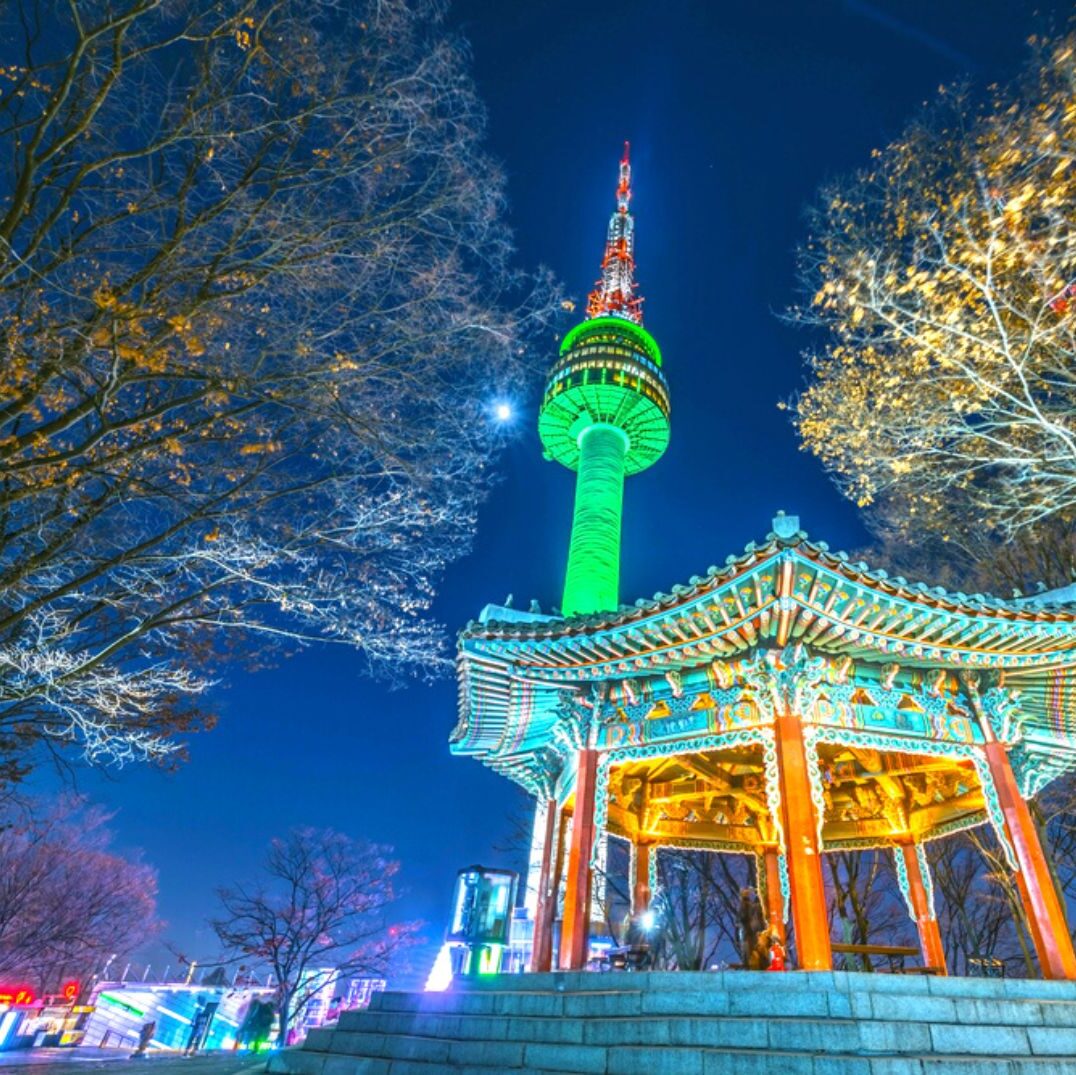
Afternoon : Head back to central Seoul and witness the bustling sights and delicious smells of Seoul’s traditional Gwangjang and Dongdaemun Markets. Try delectable Korean street foods here.
Evening : Take the Namsam Cable Car to the top of Namsan Mountain and watch the sunset from N Seoul Tower. See some of Seoul’s fortress walls before heading back down to go late-night shopping at Myeongdong Market.

Afternoon : Zip line or sail over to Nami Island for impressive nature, bike rides, leafy walks, and cozy cafes. See popular scenes from K-dramas and even some wild animals, like deer and rabbits.
Evening : Pedal your way along an abandoned railway at the Gangchon Rail Bike Park before heading back to Seoul for fine dining in Gangnam’s Apgujeong Rodeo district.
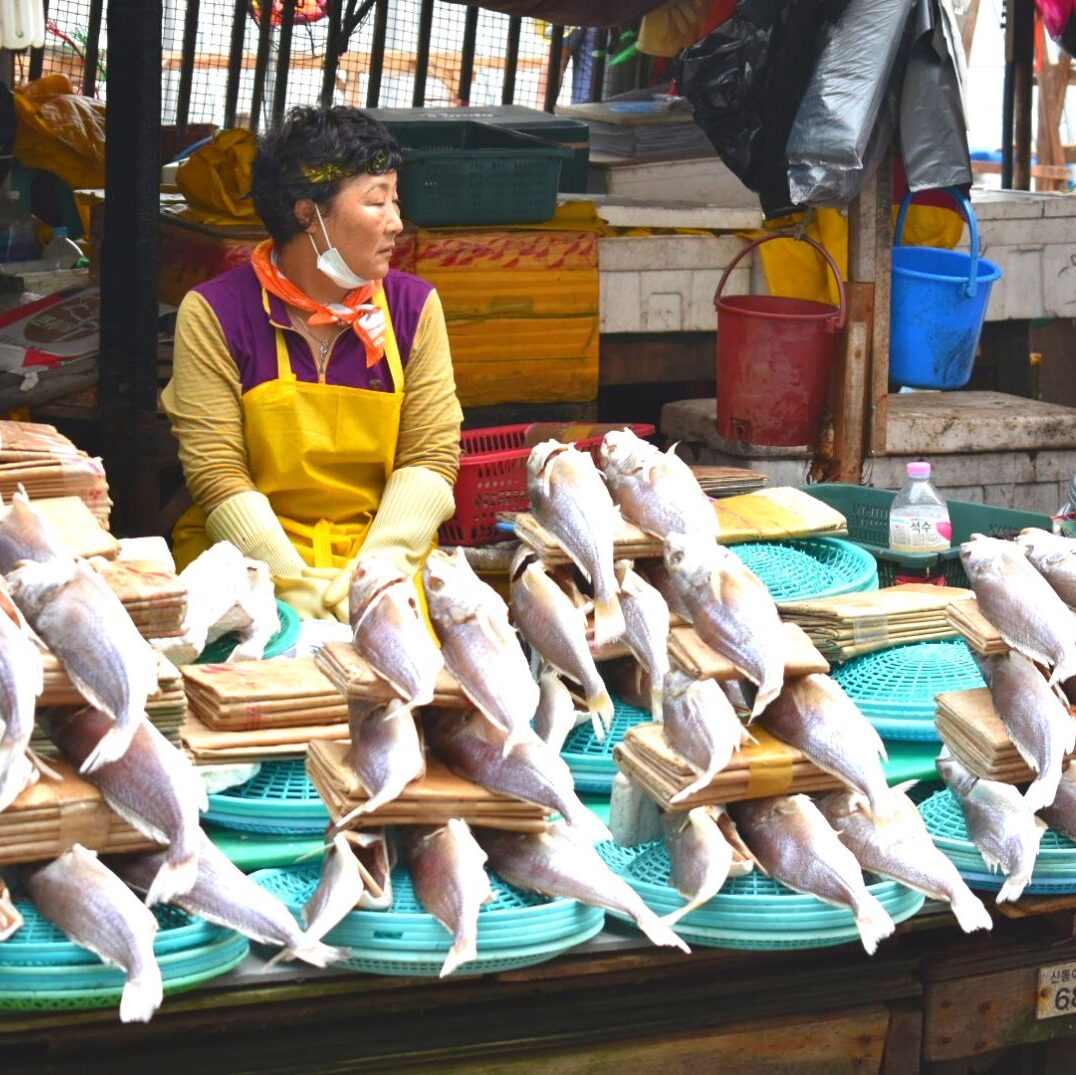
Afternoon : Head to the Nampo-dong near Busan Station and visit Jagalchi Market for a fresh seafood lunch. Then explore cosy Bosu-dong Book Alley or take a taxi to the Huinnyeoul Culture Village.
Evening : Take the subway up to Haeundae Beach for Busan’s best night-scenes. Grab dinner overlooking the beach, or at one of the market stalls. If you’re feeling brave, visit BUSAN X the SKY to see breathtaking views over the coast and city.

Afternoon : Head to the Gyeongju Gyochon Traditional Village for a traditional meal and to see the stunning Woljeonggyo Bridge. Gyeongju National Museum is nearby, too.
Evening : See the tranquil night views of Wolji Pond where palace buildings reflect perfectly in still waters. Stop at Hwangnidan-gil area for dinner and drinks before returning to Busan.
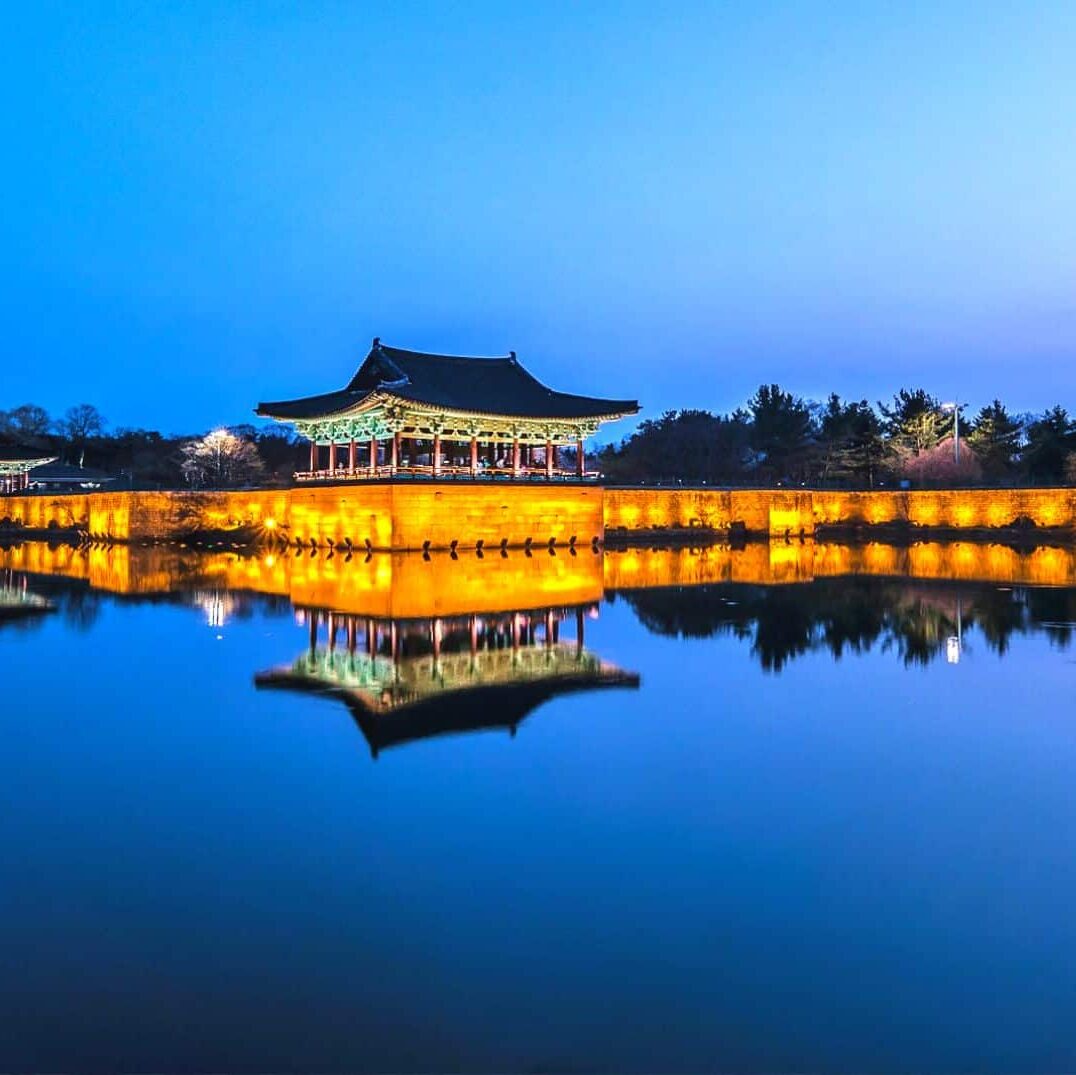
Afternoon : Explore the artistic shopping streets of Hongdae for last minute souvenirs and gifts for yourself. Take a break in one of the unique animal or artsy cafes.
Evening : Either take a night cruise along the Han River from Yeouido Hangang Park or dine in style at the Lotte World Tower in Jamsil, the world’s 6th tallest building. Both offer great night views of Seoul and unforgettable memories to take home.

Korean Seasons Guide
The best time to visit South Korea is during the warm spring or fall seasons. The weather is mild and clear, there’s a range of festivals and seasonal activities to enjoy, and you can travel to Korea comfortably.
The best months to visit are April, May, September, and October. These months are all during the Korean school semester, so there won’t be as many local travelers around during the weekdays. However, expect the weekends to be busy as people leave the cities to travel within Korea.
Large public holidays, including Chuseok (mid-autumn festival) in September / October) and Buddha’s Birthday (May), provides travelers with the opportunity to experience Korean culture and celebrations. These holidays change each year based on the lunar calendar.
Korean Weather & Climate
South Korea is a country that experiences four very distinct seasons, with temperatures ranging from 100 Fahrenheit in the summer to below 0 Fahrenheit in the winter. Each of South Korea’s seasons brings opportunities to see unique natural views and enjoy the different climates in Korea.
Spring has some of the gentlest weather, with light rain and a quick jump in temperature to the 60s and 70s by late March. Summer begins with the rainy season in late June and becomes extremely humid and hot throughout July and August before cooling again in September.
Fall has the best weather in Korea, with many warm, sunny days. Cold winter weather appears very quickly in mid-November and the first snow usually appears by late November. Winter is dry and sunny with the lowest chance of rainfall but is also very cold. Snow isn’t constant, but can fall for several weeks on and off during winter.
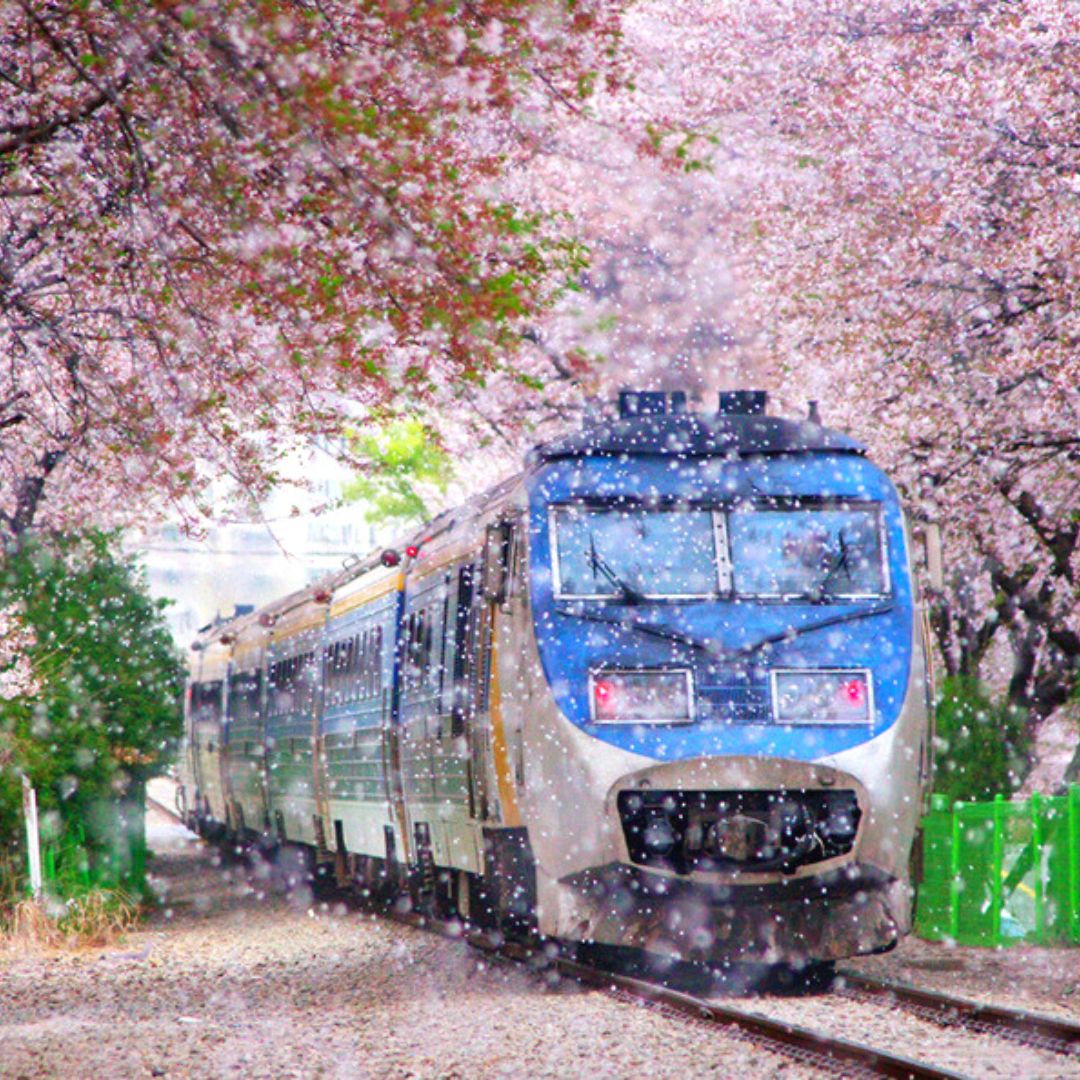
Visiting in spring offers the chance to see beautiful cherry blossoms stretch across the country, as well as many other spring flowers that brighten up Korea after a cold winter.
Spring starts in late March with the awakening of the cherry blossoms and ends in early June with the start of the rainy season. South Korea is a country with a close connection to nature, which can be witnessed in the many spring festivals and celebrations that happen throughout the year.
Some of the best spring festivals include the Jinhae Cherry Blossom Festival, Damyang Bamboo Forest Festival, Yeon Deung Hoe Lotus Lantern Festival, Jindo Sea Parting Festival, and Boseong Green Tea Plantation Festival.

The weather in summer is perfect for getting outside and relaxing on one of Korea’s many beaches. Some of the best activities include spending a weekend camping or glamping by the beach, hiking in shaded valleys in the national parks, and water sports such as surfing, kayaking, and scuba diving.
Unfortunately, the heat may put off some travelers, and high humidity makes it uncomfortable to move around too much. Fortunately, Korea is a modern country with lots of air-conditioning and ways to deal with the hot weather, including delicious summer dishes.
Cool down with a bowl of Korean bingsu (shaved ice dessert) or a cool latte in one of the many cozy Korean cafes in popular beach destinations.

Travelers to Korea in the fall are treated to spectacular fall foliage creeping far and wide. You can see it falling on palace grounds, sprawled on mountains in national parks, and along city streets.
The start of the fall foliage season in Korea coincides with the end of the hot and humid summer, with clear skies and cool weather, making it the perfect time to travel in Korea. Like spring, the fall season in Korea is one of the festivals and celebrations.
The Chuseok holidays in late September / early October are the biggest public holidays of the year, with cultural events held in popular tourist destinations. There’s also a range of cultural festivals, such as the Andong Mask Festival, Baekje Culture Festival, Jinju Namdang Yudeung Lantern Festival, Jeonju Bibimbap Festival, and the Seoul Kimchi Festival.

Winter, like summer, has more extreme weather than spring and fall, with temperatures often in the 20s and 30s and below. This season, however, is also one of the best for travelers who want to see clear, blue skies and experience good weather.
Winter is the driest season and it very rarely rains. If you don’t mind the cold weather, it’s perfect for traveling around South Korea. One of the biggest draws during winter is the chance to see snowy Korean landscapes, from snow-bedecked royal palaces to frosty peaks atop Korea’s many mountains.
Winter sports are popular in Korea, with ski and snowboard resorts aplenty. Winter also offers the chance for family fun with winter attractions including sledding, winter illuminations, and Christmas parades.

Cost To Travel To Korea
The cost to travel in South Korea largely depends on your personal style of travel. You can travel on a low budget in Korea, for under $50 per day, or you could also travel for 10 times that amount if you wished to.
Food costs range from a few dollars for a bowl of jajang (black soybean) noodles to hundreds for premium hanwoo (Korean beef) steak. The same applies to accommodation, with budget hostels costing $10 per night and premium 5 stars hotels costing hundreds.
Most travelers to Korea will already know what they want to prioritize their spending on. Some travel to Korea to eat, others to shop, and many more to experience the unique culture and history that Korea has to offer.
The costs in this section of our South Korea Travel Guide are based on the latest costs in Korea from this year. Examples of different costs have been covered to give you an idea of what to expect when you try to budget.
Please note, these prices are based on traveling in Seoul during non-peak times. Prices may be higher in peak times, which include cherry blossom season (Apr) and fall foliage season (Oct). Popular tourist cities, such as Gyeongju and Jeonju, may also have higher prices on weekends.
How Much Does It Cost To Travel In South Korea?
Travelers may find they want to spend more on hotels and less on eating out, or vice-versa, so don’t feel like you have to only follow the costs for one section. This is only a guideline to help you plan based on your own personal preferences.
To make it easier to figure out your expected costs to travel in Korea, this South Korea Travel Guide has broken down the costs into 3 different categories. These categories loosely fit 3 different types of travelers, as described below:
- Accommodation: $200+ per night, per room (double)
Korea has a wide range of luxurious hotel options, including rooms in the Lotte World Tower, historic hanok houses, and glamping for those who want to escape to the countryside.
- Food & Drink: $100+ per day, per person
It’s easy to spend a lot on food and drink in Korea as there are so many delectable restaurants. Fresh seafood, Korean steak, or the finest foreign foods are all available.
- Transportation: $20+ per day, per person
Taxis and transportation are relatively cheap in Korea. A taxi journey across Seoul can cost less than $20 for 30 minutes and even the 1st class options on Korea’s high-speed trains are under $100 for the longest journey (Seoul to Busan).
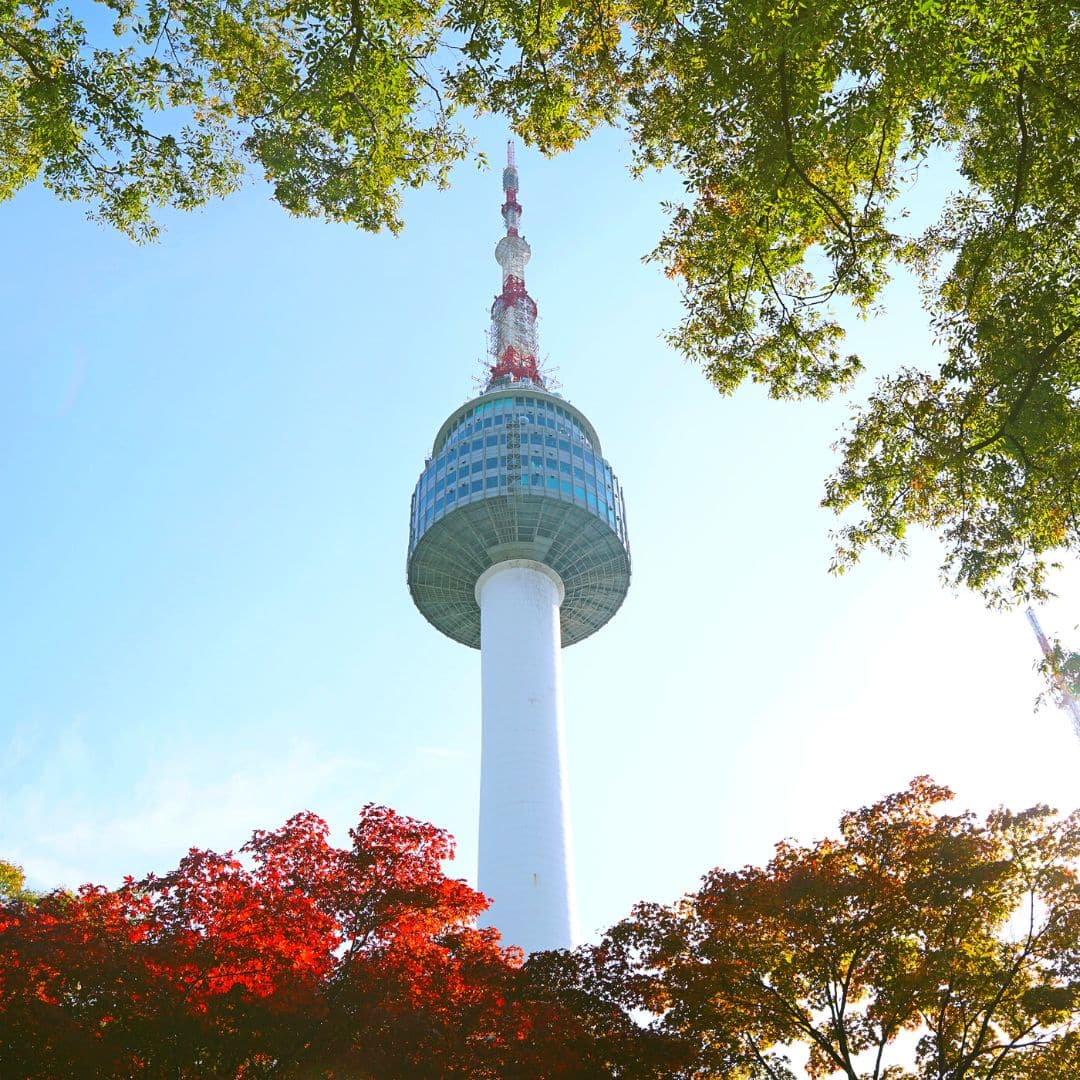
- Accommodation: $100 ~ $200 per night, per room (double)
You can book 4-star hotels in Seoul for very reasonable prices and enjoy both comfort and lower prices than you’d find at home. Korea has a wide range of comfortable mid-priced hotels.
- Food & Drink: $50+ per day, per person
With all-you-can-eat Korean restaurants that serve unlimited Korean BBQ and other dishes for under $20 or $30 per person, it’s easy to enjoy the best food Korea has to offer without breaking the bank.
- Transportation: up to $15 per day, per person
Use the subway and buses to get around the big cities and trains to travel further around Korea without breaking the bank. You can even splash out on a taxi and pay only a few dollars per person when traveling as a group for a few dollars extra.
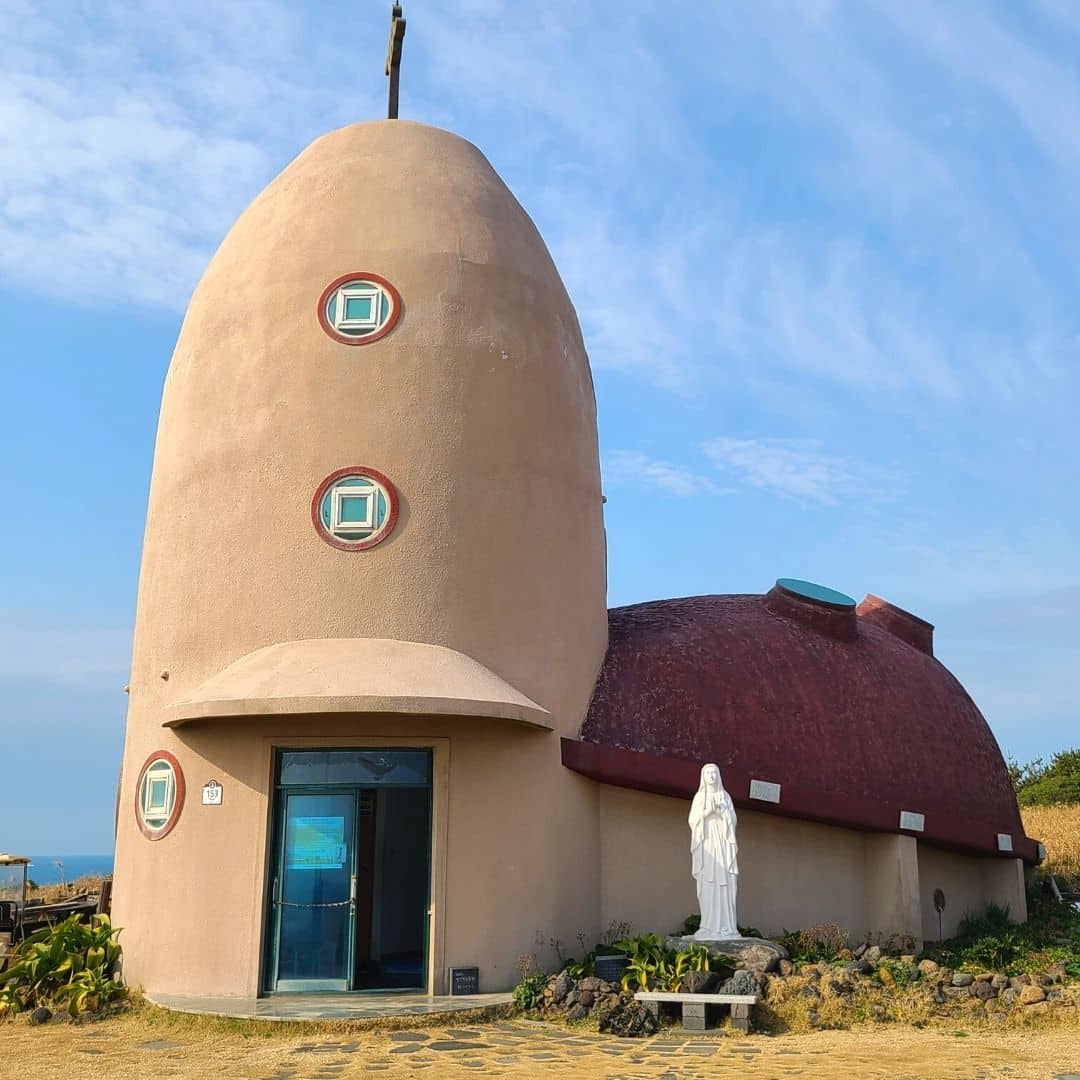
- Accommodation: up to $100 per night, per room (double)
Hostels and guesthouses can be found for under $50 per night and are perfect for somewhere to rest and recharge. If that’s all you need, save money here and spend it elsewhere.
- Food & Drink: $20 – $30 per day, per person
If you budget well and stick to street food, free hotel breakfasts, and convenience store foods, you can eat well and still have enough to splurge on good food for dinner.
- Transportation: up to $10 per day, per person
Walking and buses are cheap and convenient ways to travel around Korea’s biggest cities. Traveling from city to city is also cheap, with intercity buses costing less than $10 for 1-2 hour journeys.

Further Costs To Travel In South Korea
Besides these everyday costs to travel in South Korea, there are other costs that you’ll need to cover from time to time. These costs include internet & phone access, day trips, activities, souvenirs, travel insurance, and flights. These costs will be broken down into low and high-end costs that you can expect to pay in Korea.

Museums and galleries offer unique (and authentic) Korean souvenirs such as pottery, painting, tea & soju sets, and more. If you want something a bit more special, head to the underground markets near Gwangjang Market in Seoul and get your own handmade hanbok, which you can get posted back home to save luggage space.
- Small Souvenirs: $5+
- Korean Cosmetics: $5+
- Korean Artworks: $10+
- Korean Tea (box of): $10 to $20
- Korean Soju Set: $10 to $20
- Korean Handcrafts: $10+
- Tailored Hanbok: $200+
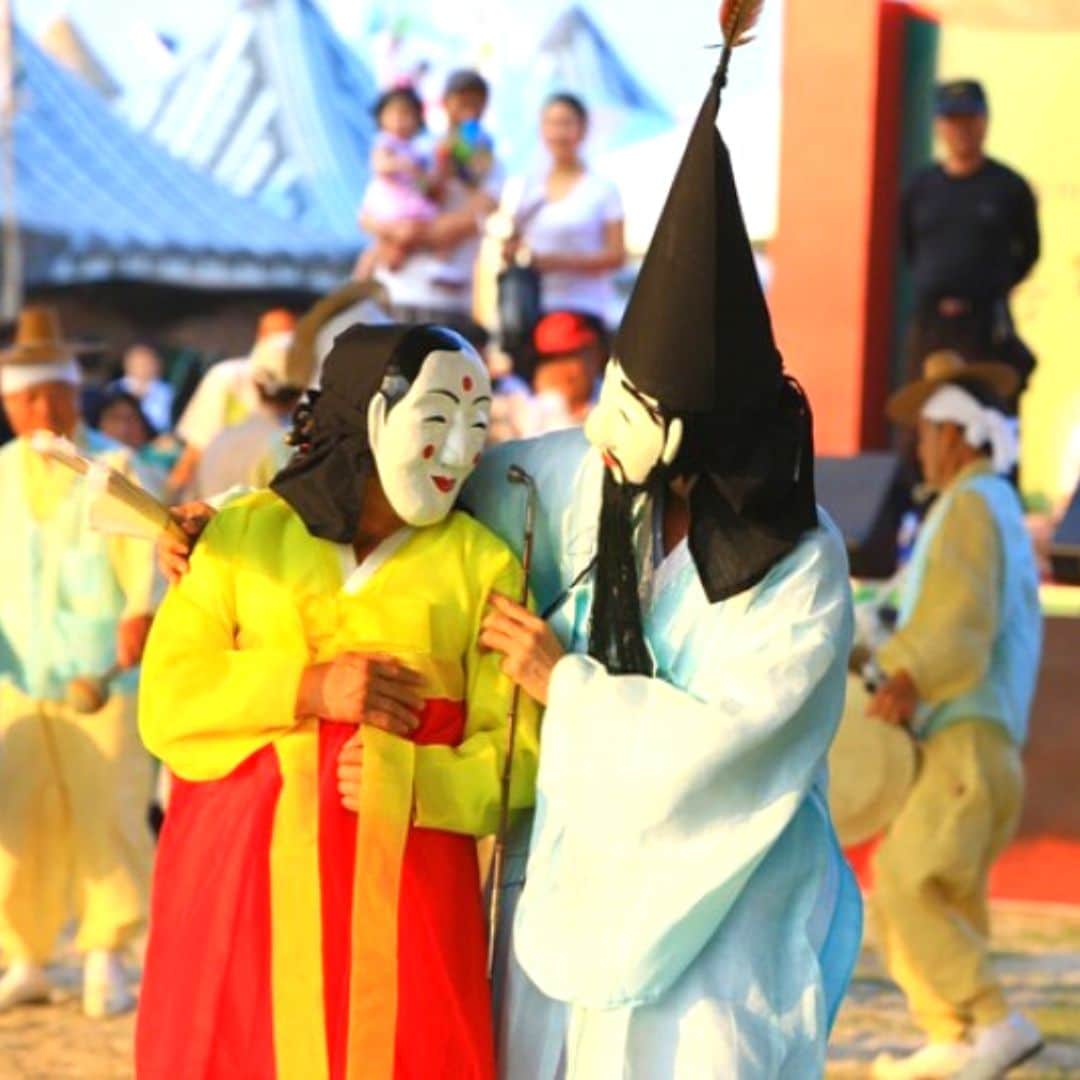
The day trip prices quoted below are the prices you can expect to pay with a reputable tour company like Klook or Trazy . Hiring a private guide will be a lot more expensive and might come to $200+ per day.
Please note: The prices quoted below are estimates and may change depending on the season or tour services.
- DMZ Tour – $50 to $120
- Nami Island Area – $40 to $70
- Everland Theme Park – $30 to $50
- Jeonju Hanok Village – $50 to $70
- Korean Folk Village – $50 to $60
- Seoraksan Mountain – $70 to $150
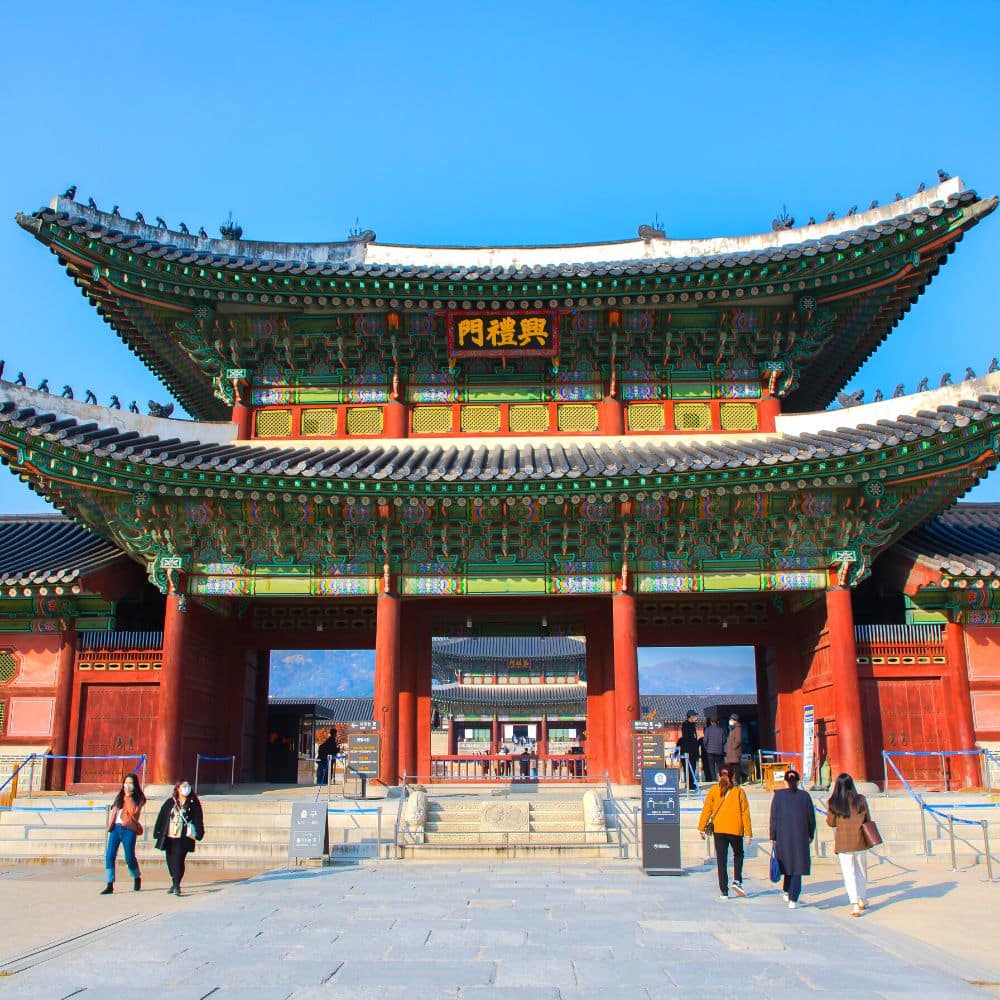
As mentioned earlier in this South Korea Travel Guide, buying a Discover Seoul Pass is a great way to save money on Seoul’s premium attractions.
- Royal Palaces – $3
- N Seoul Tower – $10
- Hanbok Rental – $10+
- Seoul City Tour Bus – $10
- Han River Cruise – $15 to $30
- Seoul Sky Observatory – $30 to $50
- Aquariums – $20 to $30
- Seoul Zoo & Seoul Grand Park $10
- Amusement Parks – $30 to $40
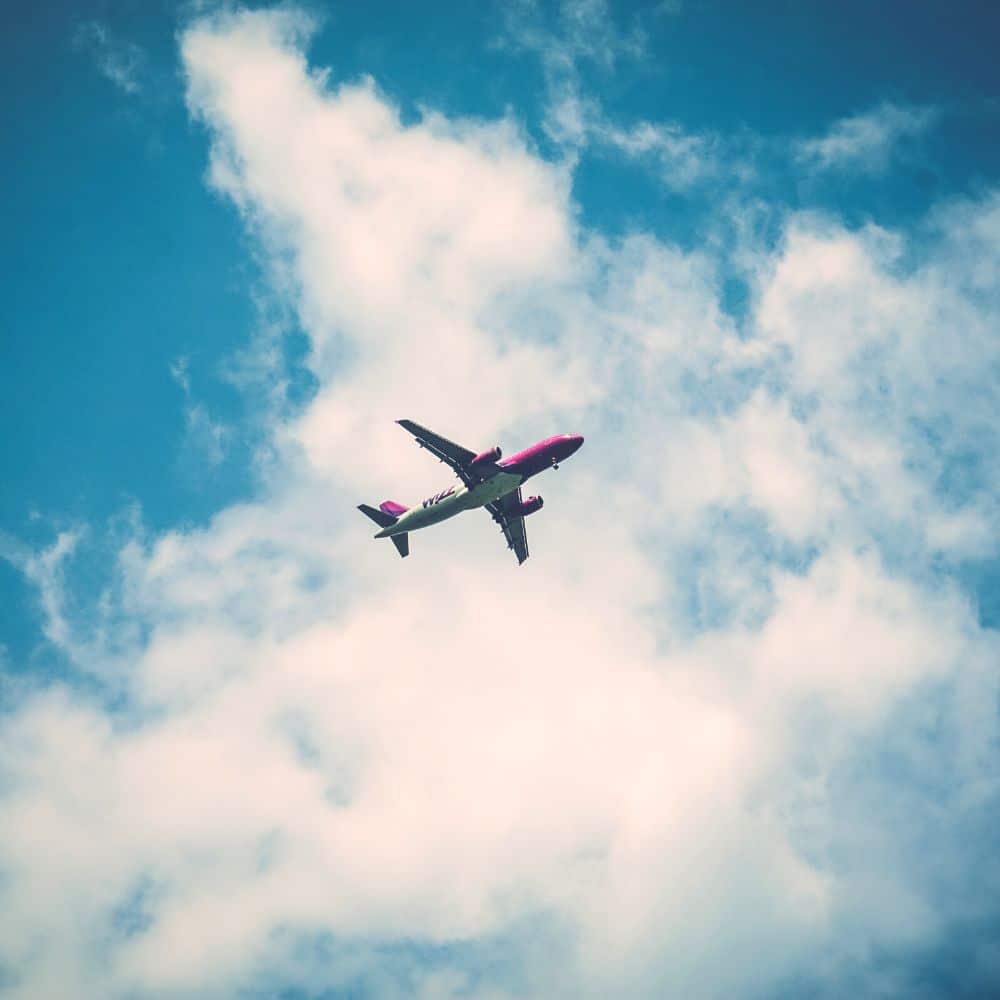
The cost to fly to Korea is more than twice the normal price right now. Fortunately, Korea ended the restrictions on the number of flights into the country from June 2022 and flight costs and availability should be improved in the near future.
Best of Korea recommends Skyscanner and Expedia for the best flight deals to Korea.

Why Travel To South Korea?
In recent years, travelers from around the world have been increasingly drawn to South Korea. The country is a must-see destination in Asia, with more than 17 million travelers in 2019. After reading this South Korea Travel Guide, you’ll understand what draws so many people to the Land of The Morning Calm, as Korea is also known.
There are myriad reasons why people visit Korea. Many come to experience life in a unique country, packed with historical and cultural sights that you won’t find elsewhere in the world. In the afternoon you can walk through a royal palace dressed in hanbok (traditional Korean clothes), sip green tea in a hanok (traditional Korean house), and pass Buddhist monks walking peacefully through an ancient temple.
Modern South Korean culture is conquering the world, with chart-topping acts that include BTS and Black Pink, Oscar-winning movies like Parasite, and phenomenally successful TV shows like Squid Game. This brings in legions of fans flocking to shooting locations and film sets to relive their favorite K-Culture moments. Some lucky travelers even get to catch sight of their favorite K-Stars walking around Gangnam, a hotspot for Korea’s most famous citizens.
Not only is Korea a beautiful country, it’s a country that will make you beautiful, with some of the world’s best fashion and beauty shops. Korea is famous for its K-Beauty products and is a beauty and fashion shoppers paradise. From the street fashions of Hongdae, to the luxurious fashion malls of Gangnam, and the wall-to-wall malls with discount clothes in Dongdaemun, you’re guaranteed to find something you can’t resist at a great price. If you prefer a cultural shopping experience, there are traditional markets all over Korea, where you can experience street food, buy novel gifts, and see how locals live and socialize.
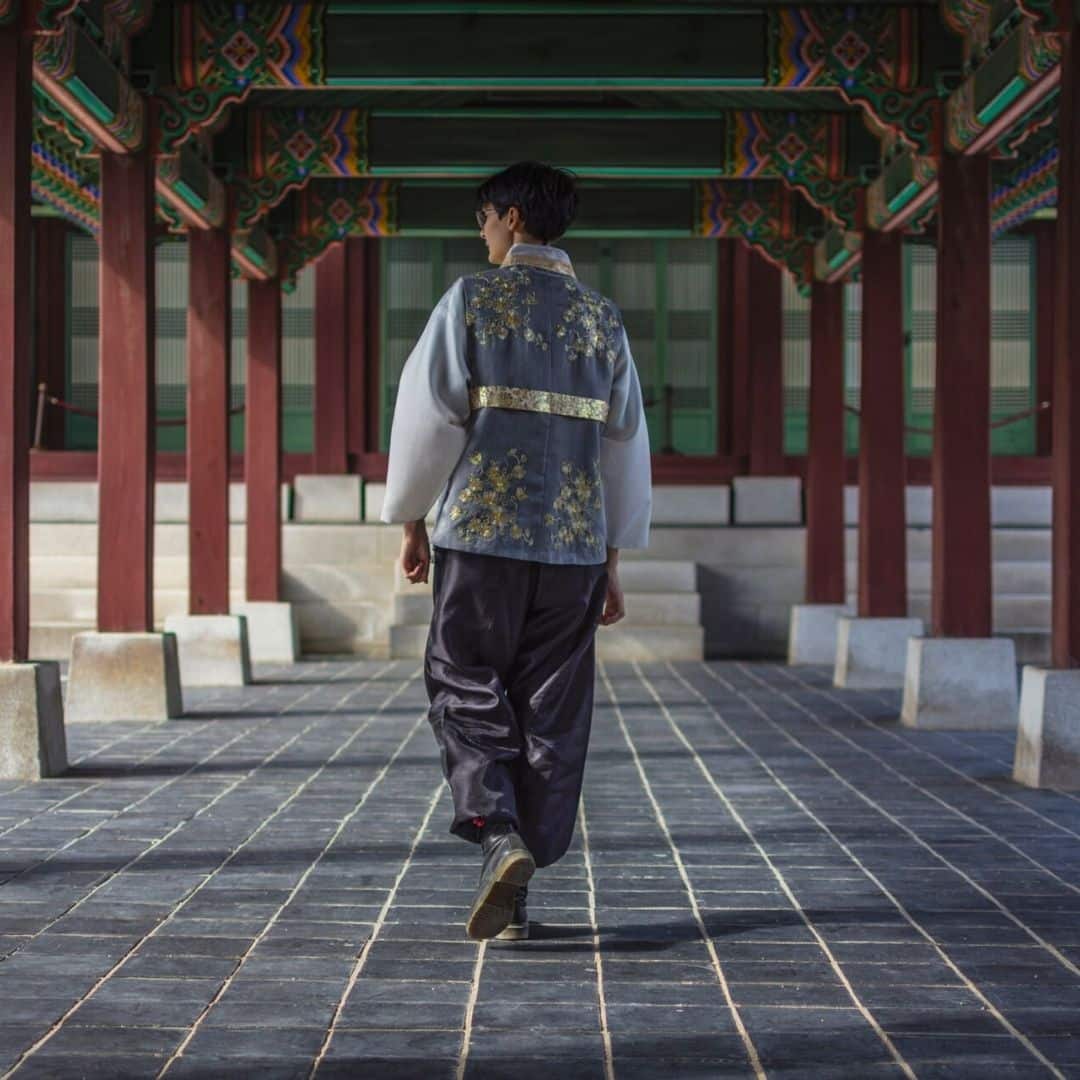
There’s so much more to South Korea than what you’ll find in the cities, however. South Korea, a country that’s 70% mountainous with coasts on three sides, offers so much to nature and adventure lovers. Hiking, South Korea’s national pastime, is a popular way to see more of the Korean countryside, looking down over rice fields, forested valleys, and pockets of urbanization. Skydiving, parasailing, scuba diving, water sports, cycling, rock climbing, white water rafting, and lots more are on offer and very reasonably priced. South Korea is a great place to enjoy the great outdoors.
The real jewel in South Korea’s natural crown, however, has to be Jeju Island – one of the New 7 Wonders of the Natural World. Explore lava caves, hike to the peak of the central dormant volcano (Hallasan Mountain), trek around the rugged coast, relax on a sandy beach in a modern cafe, and even try your hand at horse riding.
Whatever your reason to travel to South Korea, you’re sure to find more and more reasons to return again and again. Let this South Korea Travel Guide whet your appetite for your first trip, inspire you to plan a follow-up trip, and guide you to the best things to see and do in South Korea.

South Korea Travel Guide FAQs
Not sure about the South Korea travel restrictions and want to know more about visas, vaccinations, and what the rules are? This next section covers some of the most frequently asked questions about traveling to Korea now. If you have more questions that aren’t covered below, feel free to write to us on the Best of Korea Facebook page.
Do I need a visa to travel to South Korea?
US citizens and tourists from 111 other countries, including Canada and Mexico, don’t need a visa to travel to South Korea. The US government and South Korea have a visa-free travel arrangement and tourists can stay for up to 90 days.
What happens when I arrive in South Korea?
From September 2022 onwards it is no longer necessary to provide any vaccination status or take any PCR or RAT tests. A mandatory health check will be required, but this is only a simple form you can fill in on arrival.
What happens if I get a positive PCR result?
If you test positive for COVID-19 while in Korea, you will need to quarantine for 7 days at government facilities. Travelers who break the quarantine rules are subject to deportation or fines.
Can I travel to Korea if I'm unvaccinated?
Yes, you can still travel to South Korea if you’re unvaccinated. South Korea no longer restricts travel based on vaccination status (as of October 2022).
However, if a traveler (vaccinated or unvaccinated) tests positive for COVID-19 in Korea, they will have to self-quarantine until negative.
South Korea is a dynamic and culturally rich country that deserves a place on everyone’s travel bucket list. Known for its stunning blend of tradition and modernity, Korea features futuristic technology, bustling markets, and a thriving pop culture scene. Perhaps most importantly, visitors can expect a high level of safety and cleanliness while exploring the country and savoring its delicious cuisine.
This South Korea Travel Guide shows you where to go, what to see, and when to travel. Start your journey with itinerary ideas and pre-travel tips, the best day trips, and lots more essential Korean travel advice. Let’s go!
LATEST KOREA TRAVEL UPDATES
How to travel to korea, best destinations in korea, where to stay in seoul, korean travel tips, things to see & do, travel itineraries for korea, korean season guide, cost to travel to korea, further costs to korea, why travel to korea now, south korea travel faqs.
6/1/23 From June 1st, 2023, there is no longer any mandatory quarantine for COVID-infected people in Korea – both locals and travellers. The Korean government now recommends that infected people showing symptoms should self-isolate (voluntarily) for 5 days.
4/1/23 From April 1st, 2023, travelers from the USA and 21 other countries no longer need to apply for the K-ETA to travel to Korea. This will run until 31st December, 2024 and is designed to make it easier to travel to Korea.
3/20/23 From March 20th, 2023, the indoor mask mandate has been removed for public transport, including buses, trains, subway, taxis, and flights. The only remaining mask mandate is for medical facilities, including hospitals, care homes, and pharmacies.
How To Travel To Korea
Current Travel Restrictions For South Korea 2023
If you’re suspected of infection when you arrive (high temperature, feverish signs), you may be asked to take a PCR test. PCR tests are now free for travelers suspected of being COVID-19 positive within the first 3 days of arrival. This South Korea Travel Guide is regularly updated with the latest Korean travel restrictions.
Requirements To Travel To Korea
Here’s a simple 2-step guide about how to travel to Korea right now. Most restrictions have been lifted so travel to Korea is easier than ever. This applies to travelers from the US, Canada, and many other countries . As mentioned, it doesn’t matter whether you’re vaccinated or not.
Check the Korean Embassy if you’re not sure in either situation.
- When you travel to Korea, you will be asked to complete a self-check health questionnaire to show you’re not sick. You can do this when you arrive or complete it before you depart on the Q-Code website .
- You don’t need to do any testing before you fly, but it is a good idea to take a self-test to make sure you’re safe. If you’re infected in Korea, it’s necessary to do 7 days self-quarantine. You don’t need to bring copies of your vaccination records but printing a copy of the K-ETA is recommended.
No, travelers from the USA don’t need a tourist visa to enter South Korea. You can visit for up to 90 days visa-free. However, you must apply for the K-ETA before traveling and upload your travel plans and hotel details.
Here are 6 of the best destinations in Korea that you absolutely must visit, as well as some of the sights you’ll want to check out while you’re there. We’ll be bringing you lots more detailed destination guides in the future, so be sure to visit again soon

This Full Day Tour of Seoul will show you some of the hottest spots in the city, while this Customized Private Tour of Seoul will allow you to choose where to go.

Korea is a unique country with a written language that looks nothing like English, interesting Korean Cultural And Etiquette Rules , and an always busy lifestyle. Travelers may be lost trying to do even the simplest things.
If you’re traveling to Korea, you’re almost certainly going to want to get access to the internet to help you navigate, translate Korean, or even book tickets to attractions. Korea has one of the world’s best mobile internet and the prices are very reasonable. 5G mobile internet services are available across the country and Korea was one of the first to get the super-fast service. You won’t have problems connecting with a sim card or WiFi router when you travel
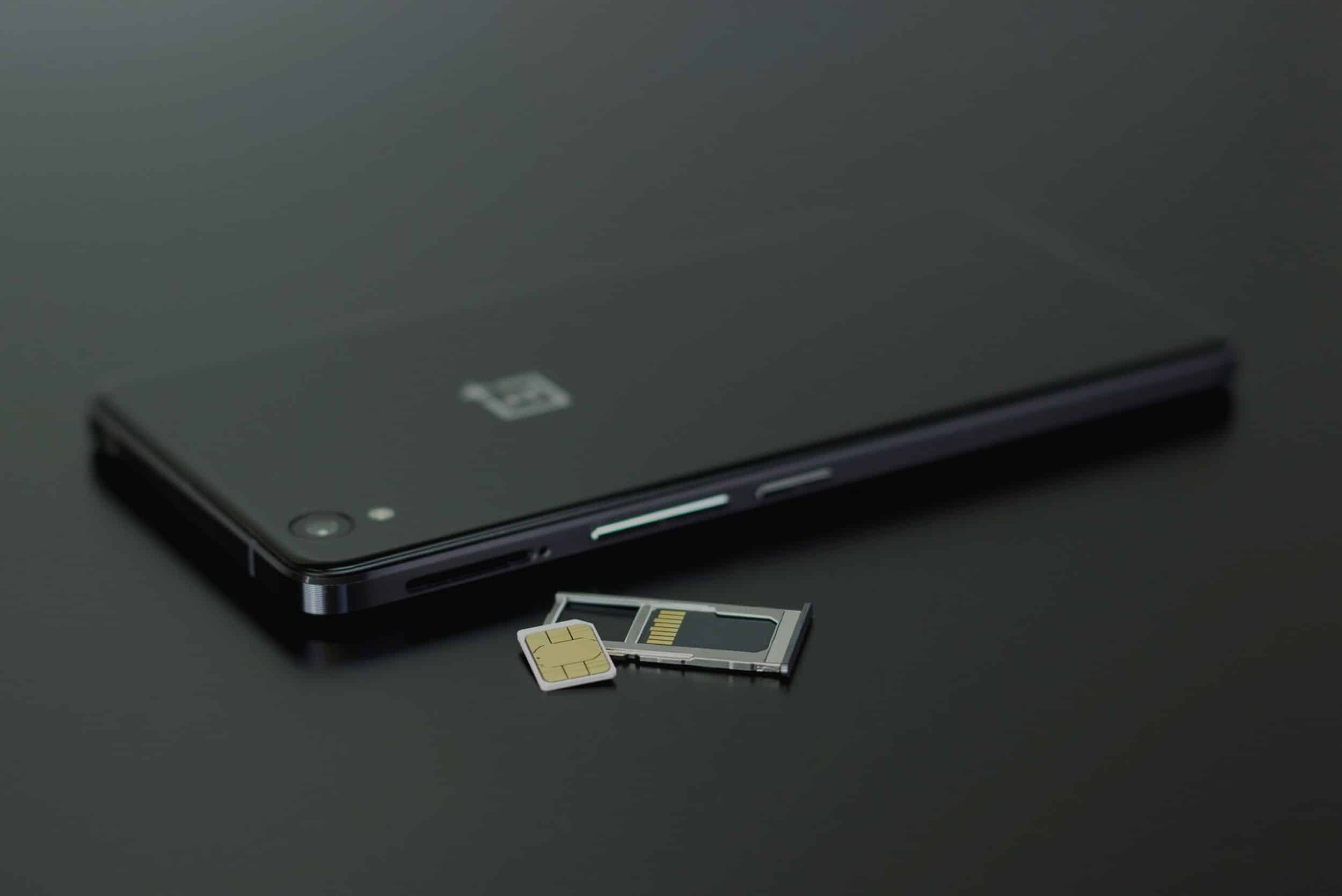
Traveling to any country involves potential scams, bad exchange rates, mistakes, and confusion when it comes to dealing with foreign currency. Fortunately, travelers to Korea have a wide range of options for travel money both before and while they travel.

South Korea is a country packed with famous landmarks and sights, unique culture – modern & historical, family-fun activities, outdoor adventures, cozy cafe districts, and natural wonders. There’s more to do in Korea than you could imagine and it’s impossible to explore it all in one trip. Try to plan your itinerary by cities and locations. For example, plan your day in Seoul and stay by the district.
Here are some of the best things to see and do in South Korea, broken down into different themes so you can find things that interest you the most. The location of each of these attractions is included, too, so you can create a city-by-city itinerary, seeing the best South Korea has to offer.
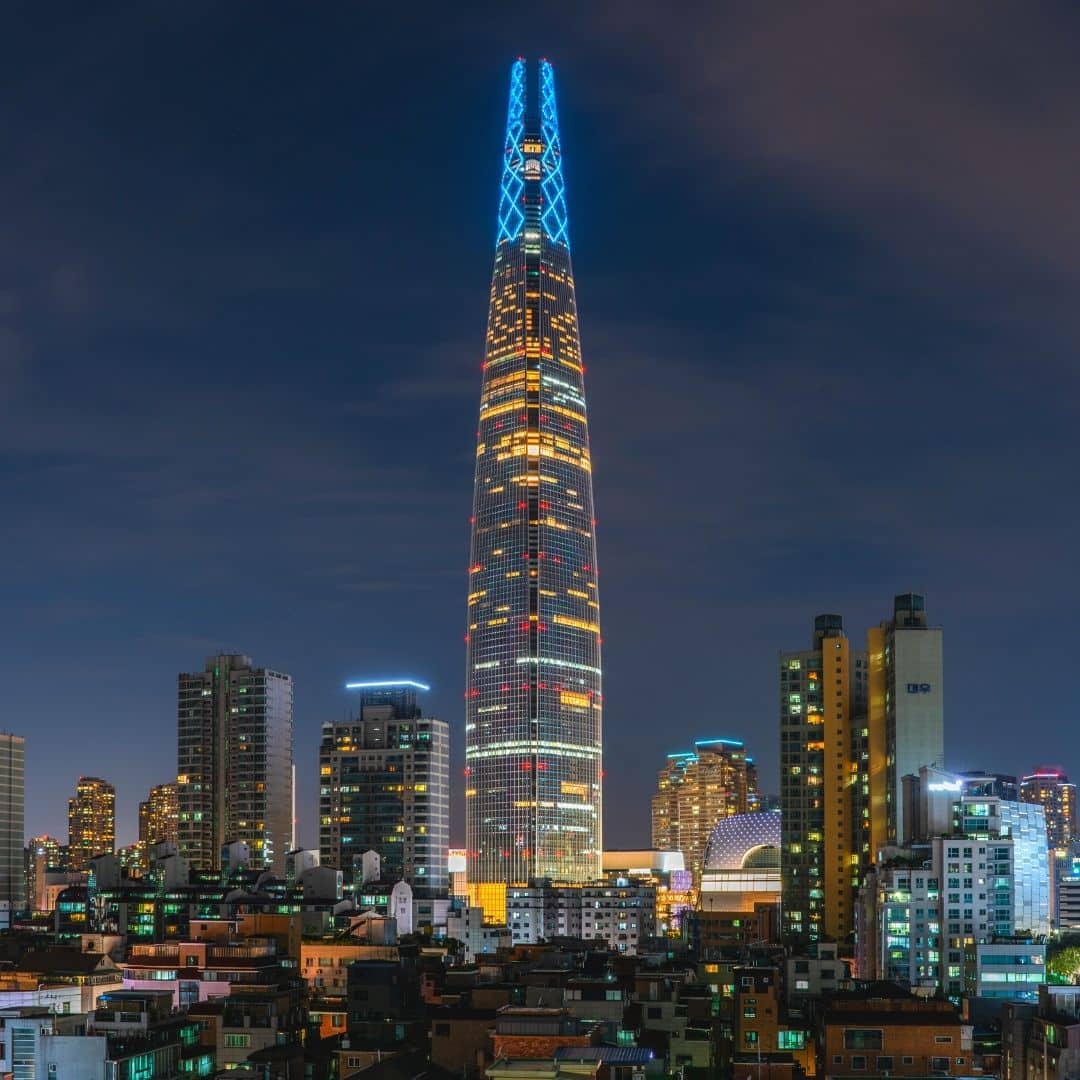
Any South Korea Travel Guide would be incomplete without thee top landmarks & famous areas in Korea. These unmissable Korean attractions offer some of the best sights in Korea, showing you Korean history, culture, design, and sense of humor.

Learning about Korea’s past is not only enjoyable, it’ll also open your eyes to how modern Korean culture has evolved. Witness the majesty of grand palaces and the humble Buddhist temples and gain an insight into life in Korea with these fascination historical sights.

Are you a fan of Korean culture? Then check out these 10 modern K-Culture locations in Korea. Whether you’re ARMY or an arthouse cinema fan, you’ll love these sights. K-Drama fans, check out these K-Drama Filming Spots in Seoul .

If you’re traveling to Korea with your family, you don’t need to worry about the kids getting bored. There are plenty of family-fun attractions in Korea to keep them amused and to show them what Korea’s really like.

Culture lovers will find no shortage of places to learn about Korean, Asian, and world history & culture. Korea has a rich history and displays this through a range of museums. Learn about traditional life, Korean wars, the democracy struggles, and even kimchi .

Once a land of teahouses, Korea has now fully embraced coffee culture. Korea’s late-night culture makes cafes a great place to gather and chat. The rise of social media has also led to hundreds of insta-worthy cafes with photogenic decor, unusual coffee designs, and delicious desserts.

Many people travel to Korea just to shop, thanks to the low prices, haggling in the markets, and good quality items. From traditional markets to high-end designer goods, there’s somewhere to shop for everyone. Be sure to try authentic Korean street foods in the markets, too.

Korea is a country surrounded by sea on 3 sides and 70% mountainous, giving it a wealth of natural beauty. Besides Korean cherry blossoms , flowers, and fall foliage, there are sculpted gardens, shimmering ponds, riverside parks, and a volcano to see.

Morning : Explore Seoul’s historic royal palaces starting with Gyeongbokgung or Changdeokgung Palace in central Seoul. You get free entry if you’re wearing a Korean hanbok, so be sure to pick one up from the rental shops outside.
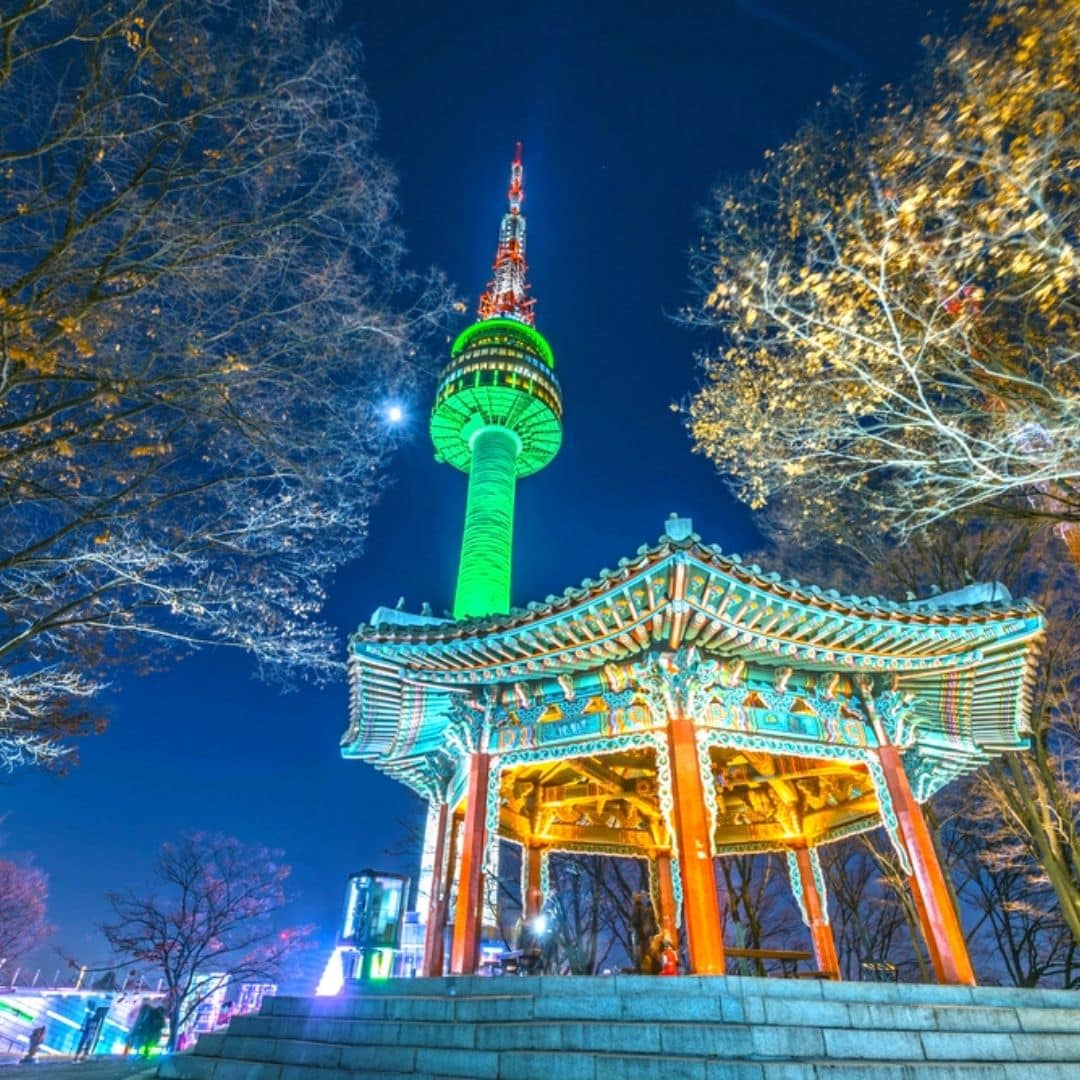
Morning : Learn about Korea’s history at the National Museum or War Memorial in Yeongsan. These fascinating museums have interactive exhibits and feature 1000’s of years of Korean history.

Morning : Take a day trip from Seoul to explore Gapyeong County. See the wonders of the Garden of Morning Calm and its idyllic nature. This is one of the most beautiful gardens in Korea.

Morning : Grab an early breakfast at Seoul Station and ride the high-speed KTX train directly to Seoul. It takes less than 4 hours and rides past rice fields, mountains, and the Korean countryside.

Morning : Take a day trip to the UNESCO World Heritage City of Gyeongju and roam the Gyeongju Historic Area. See Daereungwon Tomb Complex and Cheomseongdae Observatory.

Morning : Pack your bags and ride the KTX back to Seoul. Head to Hongdae for street food snacks or Michelin-starred delights in famous restaurants.

March to May

June To August

September to November

December to February
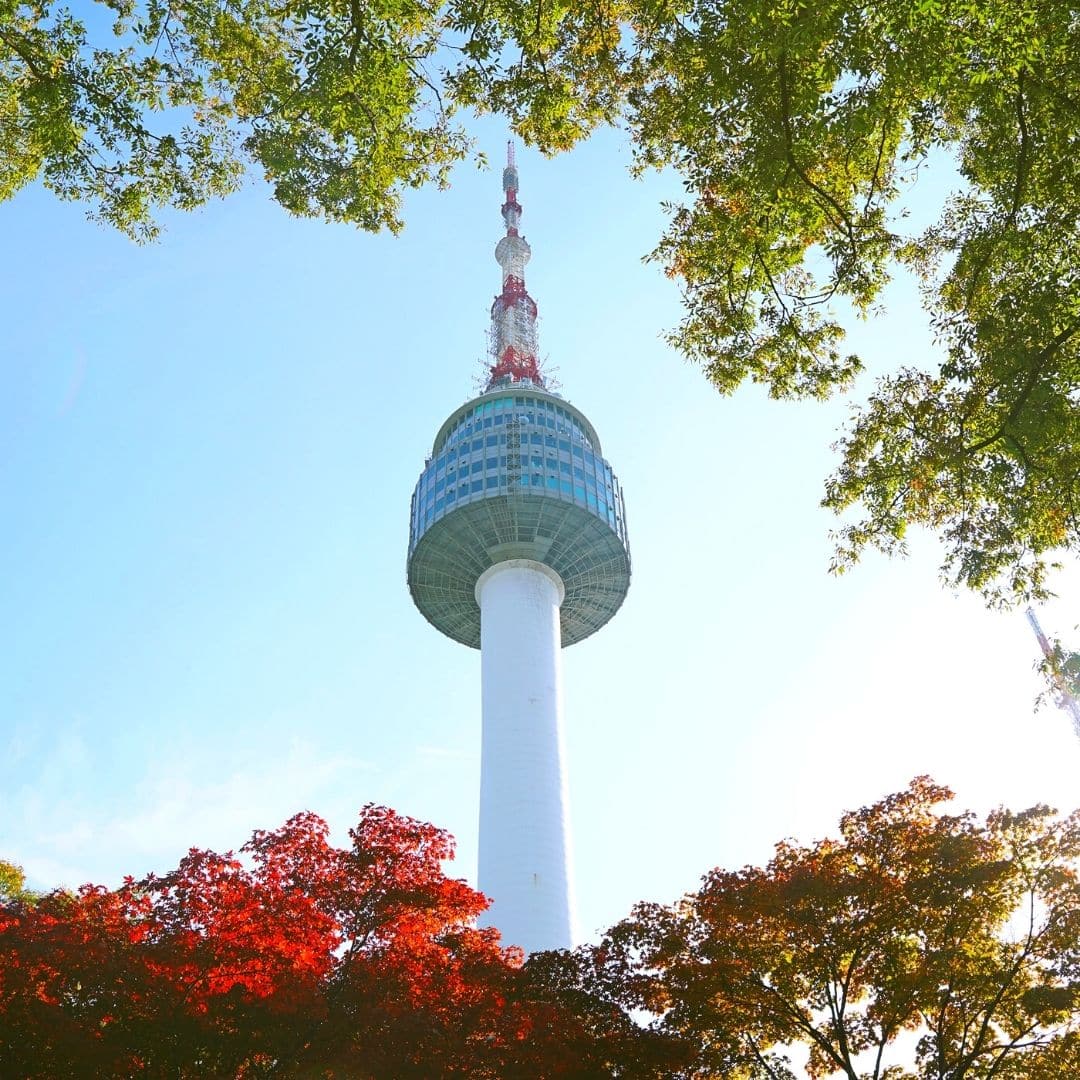
Korean Souvenir Costs
The best places to buy souvenirs in Korea are in the traditional markets and tourist areas. Insadong in Seoul has a lot of art and souvenir shops, as do the market streets around Bukchon Hanok Village. Hongdae offers lots of bargain snacks and souvenirs to take home.

Day Trip Costs From Seoul
A day trip from Seoul is a must to see a different side of Korea from what you’ll experience in the capital. Taking a day trip is a great chance to experience Korea’s countryside, nature, and hard-to-reach cultural attractions.

Korean Activity Costs
Seoul and other Korean cities have so much to offer to tourists. From historical palaces to exciting theme parks and attractions, it’s easy to have fun, explore, and discover more about Korea’s history.

Flight Costs To Korea
Flight costs depend on which airports you’re traveling from. A flight from Los Angeles to Incheon Airport (Korea’s main airport) costs around $1370 right now. Flight costs vary depending on the season and time of day.
Welcome to Best of Korea!
Please Sign Up for Updates
We hate spam. You can unsubscribe anytime.
실시간 주요 뉴스 PUSH 알림서비스를 구독할 수 있습니다.

korea joongAng daily
Home > culture > food & travel.

VisitKorea launches travel itinerary app for travelers to Korea

VisitKorea, a tourism information service platform operated by the Korea Tourism Organization (KTO), on July 5 revamped its website and its mobile application, offering new services to help travelers to Korea better plan their trips and navigate the country during their stay.
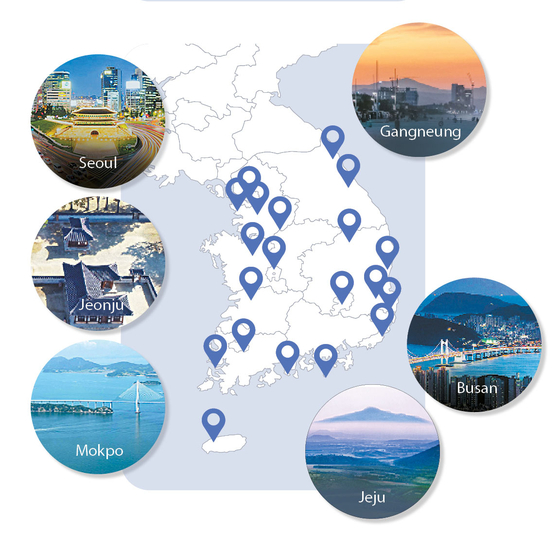
Ojukheon House in Gangneung [JOONGANG PHOTO]
![travel connect korea Arte Museum Valley Gangneung [JOONGANG PHOTO]](https://koreajoongangdaily.joins.com/data/photo/2023/07/20/89f8b893-c31f-4658-9fee-de610832e5dc.jpg)
Arte Museum Valley Gangneung [JOONGANG PHOTO]
![travel connect korea Gangneung Coffee Street [JOONGANG PHOTO]](https://koreajoongangdaily.joins.com/data/photo/2023/07/20/7b3aab6d-fb97-4b18-9478-aaeb6c229ef0.jpg)
Gangneung Coffee Street [JOONGANG PHOTO]

More in Food & Travel
Korea's cherry blossoms — in pictures
Chef Cho Hee-sook finds the balance between tradition and modernity in hansik
7 in 10 non-Koreans fond of Korean culture as 'K-pop' stays on top: Survey
Inspire Arena to stage 'Alice in Wonderland' circus in May
K-food workshop serves a taste of tradition to a global audience
Related Stories
Travelers between Singapore and Korea to be exempt from quarantine
Incoming tourists surge 218 percent in July on year
Embrace the season at these favorite fall locations
Travel apps awarded for ingenuity
Korea Tourism Organization names virtual human its new ambassador
You might also like

To write comments, please log in to one of the accounts.
Standards Board Policy (0/250자)

- Skip to primary navigation
- Skip to main content
- Skip to primary sidebar

17 South Korea Travel Tips (From a Longtime Resident)
Last Updated: Nov 12, 2023 by Max · This post may contain affiliate links · 2 Comments
When I first came to Korea, I made the mistake of thinking that I could just wing it and survive in a totally different culture without almost any preparation. Within my first week, I’d read every article on South Korea travel tips available on the internet.
It was embarrassing coming to Korea without knowing how to do the simplest of things by myself, so I went into observation and Korean language study mode. In the meanwhile, I definitely looked ignorant making mistakes I could have easily avoided had I prepared myself beforehand.
For instance, one of the biggest mistakes I ever made was wearing tank tops to school my first few weeks as an English teacher. In the US, it’s nothing to comment on. But in Korea? I was embarrassingly pulled aside at a school assembly and told I was making other teachers uncomfortable, yet I’d been dressing the same for weeks and nobody had said a word. I was mortified.
A smaller error I made during my first week was in assuming that you can just say anything in any way in Korea. But due to Confucian social conventions, there are important levels of formality I should have been mindful of.
Imagine how offended my teacher looked when I replied “ Annyeong ” without the “ haseyo !” It was such an embarrassing moment that, again, I could have avoided had I read some Korea cultural tips before arriving.
We don’t want you to offend the locals, so to ensure that you do not make the same mistakes I did, I made a list of my top South Korea travel tips to help you on your trip.
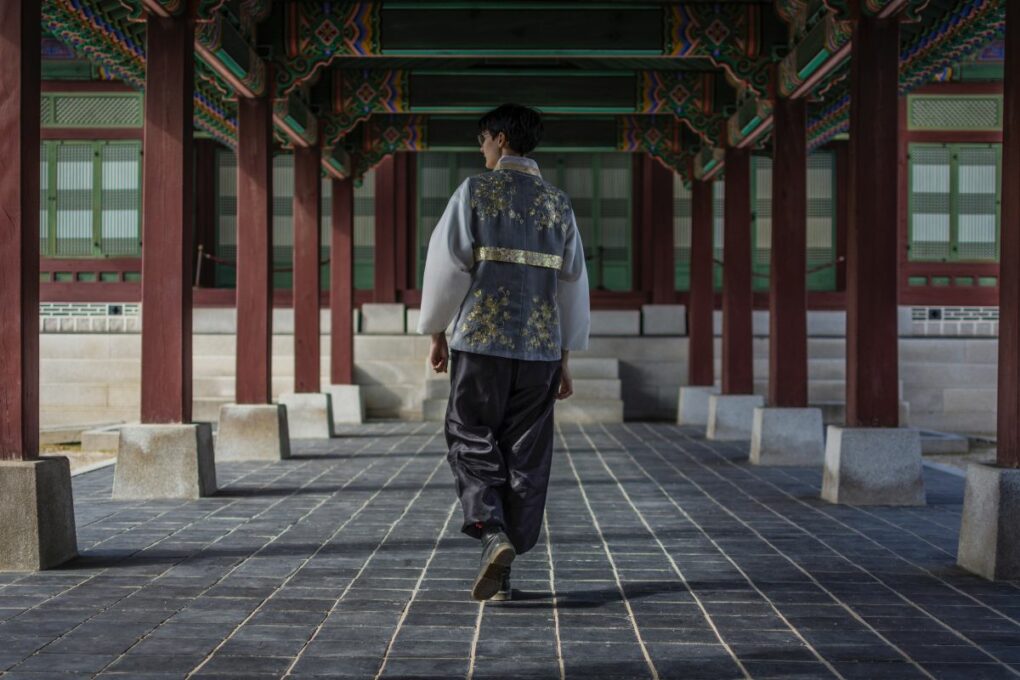
Basics of Travel in South Korea
What to know before visiting korea (tips from locals).
Visa: Most travelers will need a K-ETA ( Korean Electronic Travel Authorization ), applied for at least 72 hours before departure. If you needed a visa before, you'll need a K-ETA now. Note that from April 1, 2023, to December 31, 2024, passport holders from 22 countries, including the US, UK, Canada, and several EU nations, can visit visa-free – no K-ETA required!
Currency: South Korean won ( KRW or ₩ )
Arrival in Korea: all international flights arrive at Incheon Airport (ICN), one of the best-rated airports in the world. It usually takes about 1 hour to get through security & pick up checked bags.
Getting Around: Korea has an extensive & reliable public transport system. A refillable T-Money card is your ticket to buses and trains across the country; you can buy and refill yout TMoney card at any subways station or convenience store in Korea.
Internet & SIM Cards: Rent a Wi-Fi egg or purchase a prepaid SIM card at the airport, available for up to one month of connection.
Travel Insurance: always recommended, though some credit card companies offers limited coverage when booking.
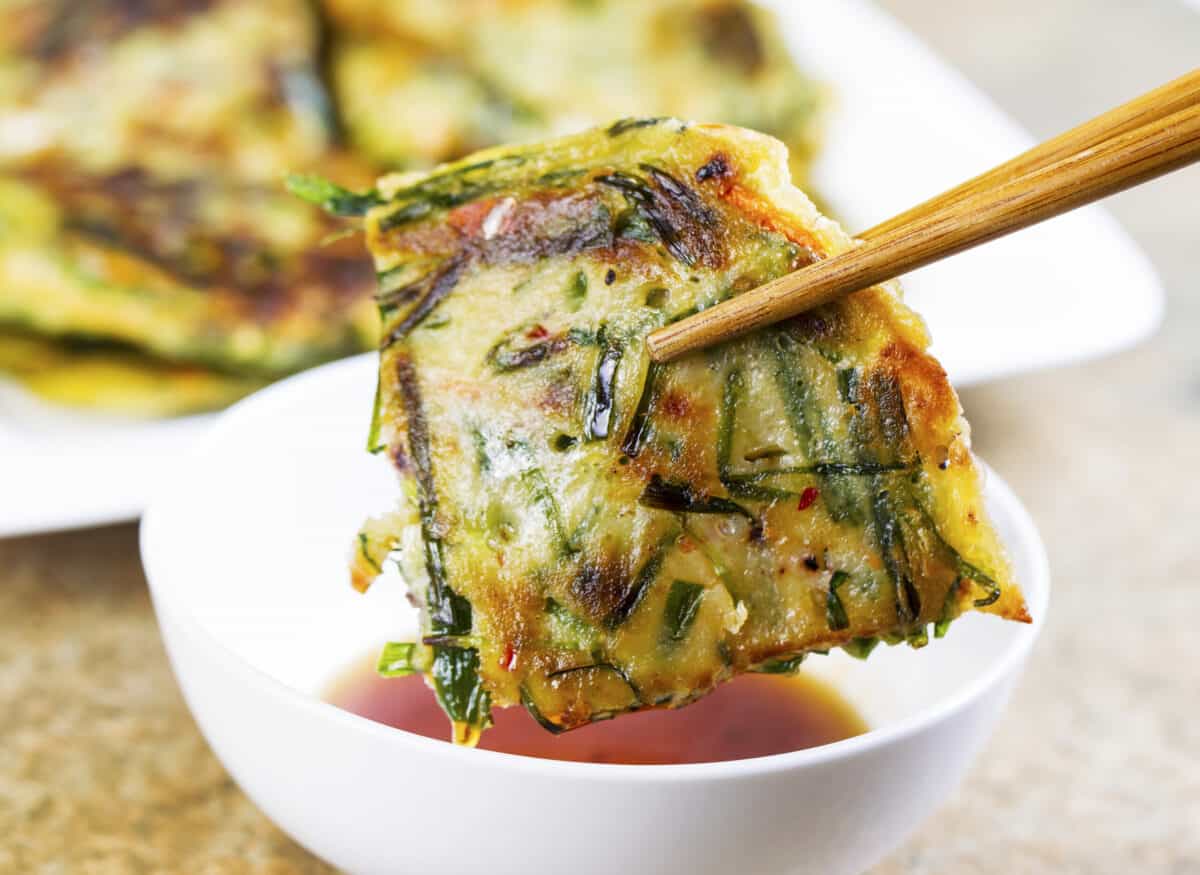
Asking about your age is okay
You might feel offended if a Korean person suddenly asks about your age, but this is a totally normal thing to them. Refusing to answer this question also gives them great stress, because then they don’t know how to properly address you; there’s an explicit social hierarchy in Korea.
So as much as this question might make you uncomfortable, understand that this is their custom, and they primarily use it to learn how they should talk to you.
Know the proper honorifics to use
The worst thing about conversing with people is that you don’t know whether you’re using the right honorifics, and there’s always a chance you might use the wrong one.
Even if you’re speaking with them in English, there are different ways to address someone depending on their status (usually relative to yours). So if you’re unsure where you might fall in the hierarchy, you can prepare yourself with this guide on how to properly address people in Korea first.
Don’t forget to bow!
One of the things I’ve learned here in Korea is that: “when in doubt, bow.” Koreans bow whenever they greet, thank, and even apologize. Sometimes I wonder if I’m bowing too much, or if I’m bowing lower than I should.
But Koreans don’t really expect you to bow at all, especially if it’s totally obvious that you are not from their culture, but it’s still respectful and appreciated if you try.
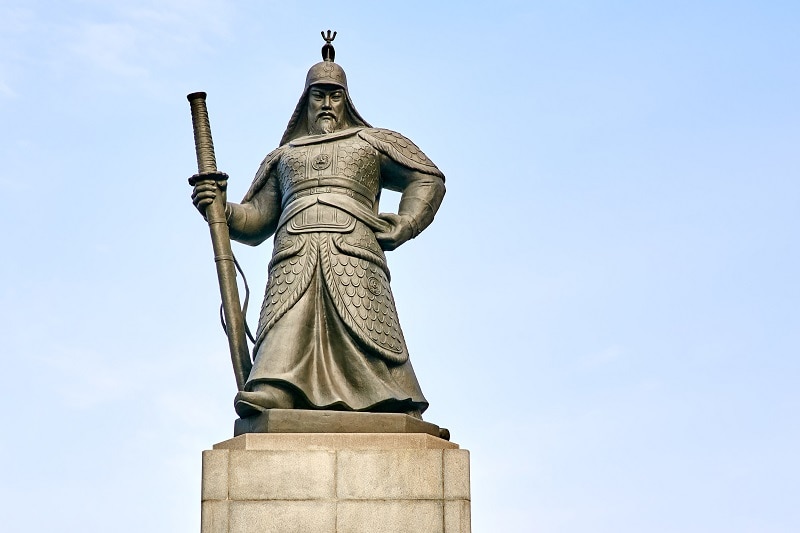
Remove your shoes as soon as you enter a home
One fascinating thing about Korean homes is the existence of the ondol system, or the traditional method of keeping their floors warm. This is why Koreans find winters tolerable and comfortable; their feet are never cold.
The issue with Westerners is that they oftentimes forget this, and they walk into places with their shoes on, leaving grimy bits of dust and pebbles that sully the pristine floors. But shoes are not acceptable in most Korean homes or restaurants, so if you are not comfortable with exposing your bare feet, at least keep your socks on.
Koreans eat from the same bowl
You might think this is unhygienic, but in Korea, this is absolutely normal. Sharing is a massive part of the culture, and if you do not participate in this custom, they may take it personally. Also, while we’re talking about bowls – never lift it up while eating!
Your bowl should stay in front of you at all times, which is why you generally see Koreans stoop over their bowls and scoop food using a soup spoon.
Never stick chopsticks in your food
While sticking our chopsticks in a bowl of rice is not really a big deal to us, to them it’s an insensitive act. This is because it replicates a jesa , or a funeral ritual that Koreans do to offer food to the dead.
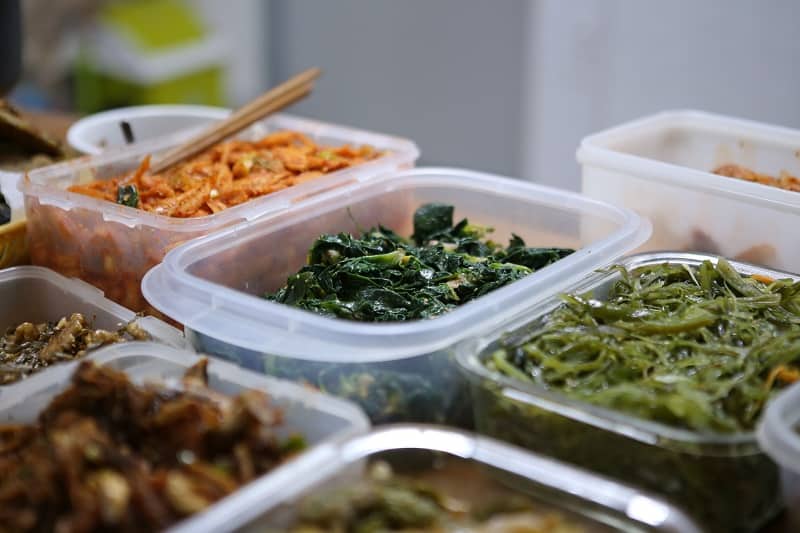
The eldest eats first
Koreans love to eat together, but remember that age matters in Korea, so if the eldest person is not ready to eat yet, you really have to wait.
Also, the seating arrangement when eating is also different in Korea, but my trick here is to wait for everyone else to be seated and then wait for their gesture to tell me where to sit. Works like a charm.
Even if it’s too spicy for you to handle, don’t blow your nose at the table
Koreans are known for their spicy food, and we have a tendency to sniffle if we are not used to it. But Koreans find it rude to blow your nose at the table (and you don’t want to send your snot to the food ), so as much as possible, hold it in or excuse yourself to the bathroom. That way you can blow as much as you want without getting flak for it.
If you’re drinking with the elderly, turn your head away when taking a shot
There are so many drinking rules in Korea , and one thing you have to keep in mind is always to mind the seniority. If you have to clink glasses with somebody older than you, make sure your glass is slightly lower than theirs. Then you turn away and take the shot, not looking back until you’re all done.
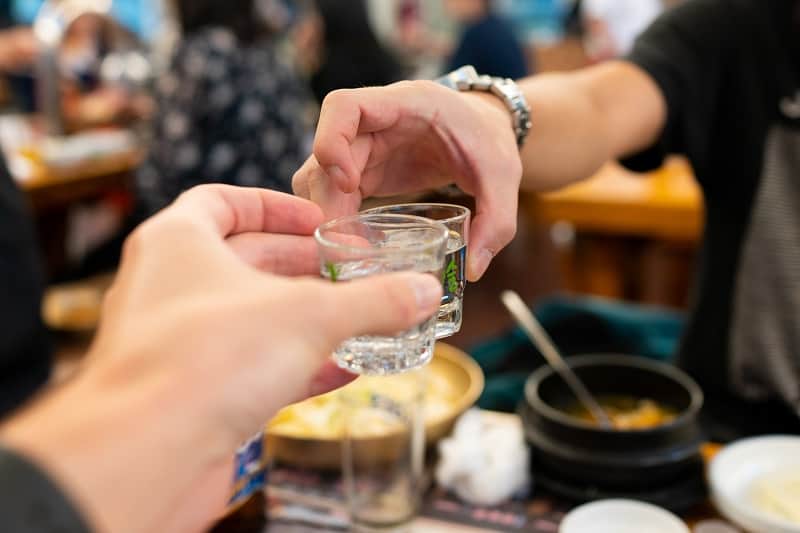
Don’t pour your own drink
You should never serve drinks to yourself in Korea, though if you’re the youngest, you should pour for everyone else. Instead, you should wait until someone pours it for you, and always receive it with both hands.
You should also keep a lookout for whether those who are older than you need a refill, and when you pour, never forget to use both hands.
Don’t tip in Korea!
Koreans do not like it when you tip, as it imbalances a careful power dynamic between customers and proprietors. In Korea, they hold the strong belief that the customer is King, and that they should uphold the highest quality of standards whenever they serve you.
So if you find yourself impressed by someone’s service, just thank them and leave a nice review in Kakao Maps (and offer them a compliment, if you can!).
Writing people’s names in red ink is a big no-no
Koreans love receiving handwritten letters, and if you want to show your gratitude and appreciation for a new friend, a helpful Korean tip would be to avoid red ink. You’ll actually rarely see red ink pens for sale in Korea, because writing names in red ink is believed to bring death upon the person whose name was written.
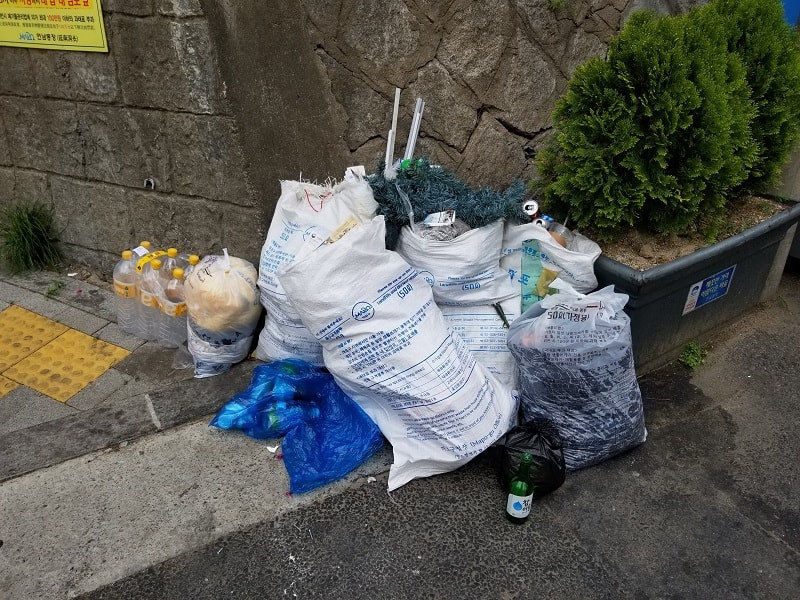
Don’t be part of the problem: toss your trash properly
Korea has a serious littering problem. Even if there are clear, established rules on how to properly segregate trash, you’ll still see bottles, plastic cups, and cigarette butts on the side of the road across the country.
What you can do, however, is to bring your trash with you wherever you go, and throw it in proper bins in the public spaces.
Don’t give gifts in fours
Giving gifts is a big thing in Korea. People seem to love exchanging things as a sign of appreciation, hence Teacher’s Day, Single’s Day, and White Day (all gift-giving holidays). However, if you give them something that comes in a set of 4, they might freeze for a moment, as the number four is inherently connected to death in Korea.
This is because this number sounds a lot like death in their language, so avoid this unlucky number by choosing just one thoughtful gift. There are plenty of places where you can buy gifts in Korea !
Take the time to appreciate a business card
While in Korea, you’ll likely encounter interesting people, many of whom may offer you a business card. This is a common way to non-threateningly try to connect with foreigners, so remember to receive it with both hands.
Then make an effort to at least appreciate the fine details of it before storing it; rushing to pocket these things often rubs them the wrong way.
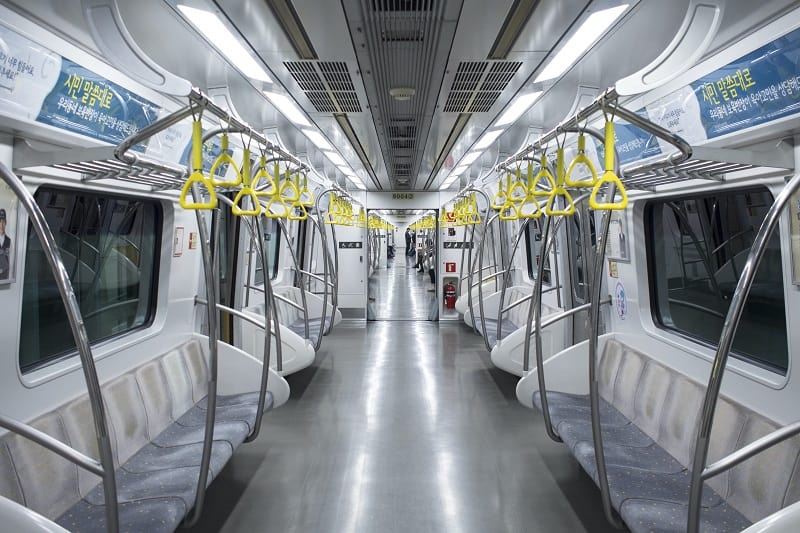
Don’t cross your legs in the presence of other people
This is another custom I never knew was rude, since I grew up being told as a woman that I should keep my legs crossed if I don’t want to look improper. In Korea, however, crossing your legs is a sign of disrespect, though foreigners sometimes get a pass.
If you have to sit across from somebody and you’re wearing a skirt that’s too short for your liking, instead of crossing your legs, aim to straighten your posture and keep your hands on your lap.
Shoving is okay
I know this is something that may confuse you, because in most cultures, shoving is rude. But in Korea they don’t like getting held back or blocked.
So if people shove you in Korea, they may do it with such force that it throws you off balance – but here’s the rub: if you get mad, people will think you’re making a scene. This is totally normal behavior to most Koreans, especially from the elderly, but this fact took me years to accept.
Now that you’ve seen all my most important Korea tips, I hope that my advice will help keep you away from trouble and speed up your acclimating process.
More South Korea
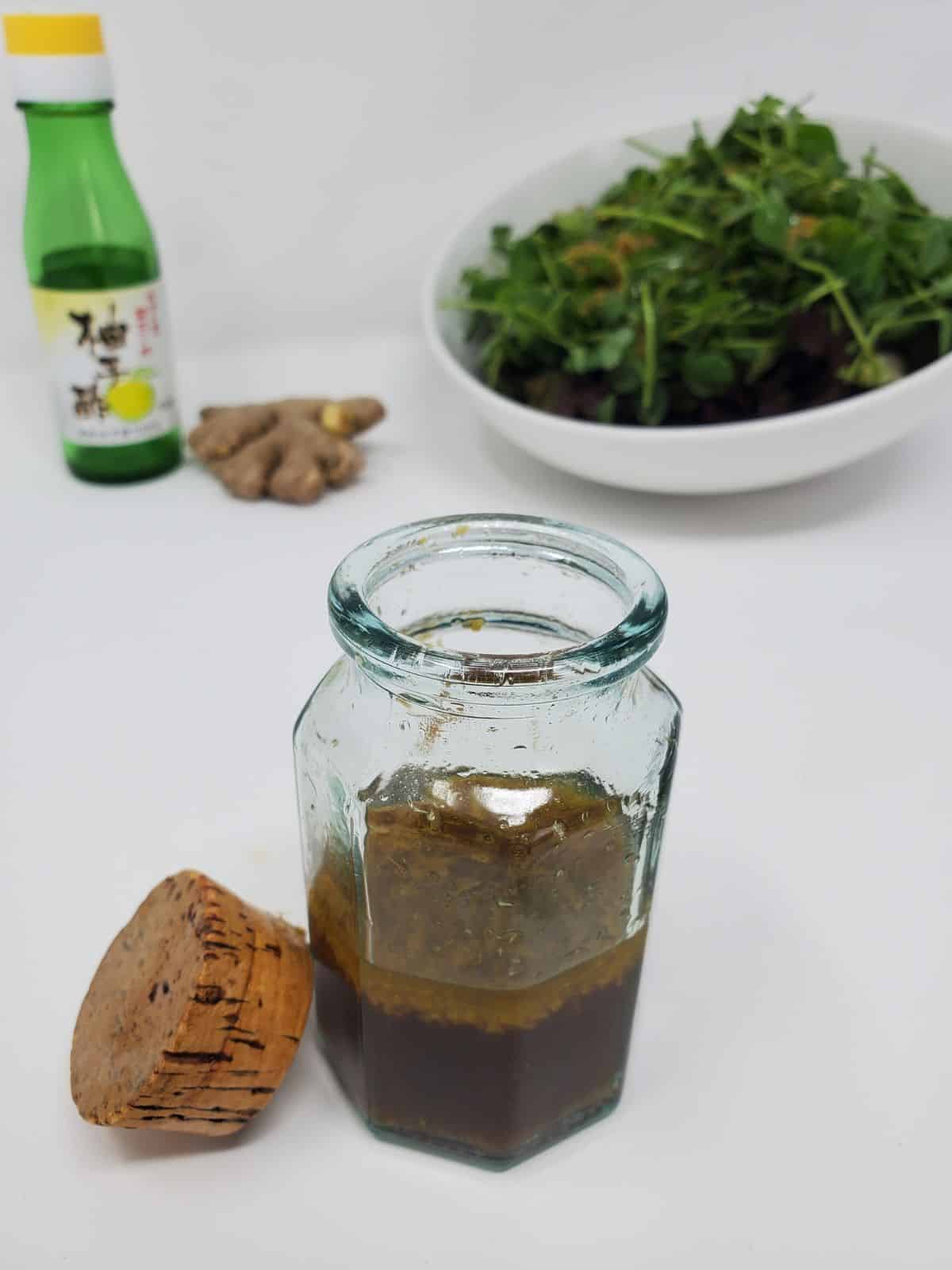
Sharing is caring!
Reader Interactions
Max Ritchie says
October 01, 2022 at 8:23 pm
Hi Max, I'm a Max as well and love all things Korean. I'm planning a trip early next year and will concentrate just on Seoul (as I'll be back). I found your information very helpful and will keep reading. I'm planning the trip alone and I'm a very active 73yr old female, if i fitted the criteria I would have loved to teach english there so I could experience the country more fully than just a trip.
regards max
October 01, 2022 at 8:48 pm
Awww thanks, Max! I'm glad you've found it helpful, and please let me know if you have any questions. My mom (an active 69-year old, herself!) had a similar sentiment when she came to visit me in Korea for the first time. I hope you have a wonderful trip!
Leave a Reply Cancel reply
Your email address will not be published. Required fields are marked *
This site uses Akismet to reduce spam. Learn how your comment data is processed .
We’re sorry, this site is currently experiencing technical difficulties. Please try again in a few moments. Exception: request blocked
- Top Recommendation
- Shows & Concerts
- Sightseeing tickets & passes
- Airport transfer
- Private Driver
- 1 Day Tours
- Multi-day tours
- Wifi, SIM card
- Around Seoul
- Chungcheong-do
- Family-friendly
- Nature & Adventure
- History & Culture
- Food & Shopping
- Kpop & Kdrama
- Beauty & Relaxation
- Sports & Wellness
- Under USD $50
- USD $50~USD $100
- Above USD $100
- Private Tour

Visiting South Korea – SIM Card or Pocket WiFi (WiFi Egg)?
There are so many options when it comes to SIM Card and Pocket WiFi (WiFi Egg) in South Korea!
Which suits you best? 🧐
From making calls to just wanting the fastest data possible so we can post and share our Korea travel experiences and photos with our family and friends back home. Let’s go through a couple of the main questions everyone has when it comes to selecting the perfect SIM Card or Pocket WiFi (WiFi Egg) for you to stay connected when in Korea! 😀

1. Don’t want to pick-up or queue in line?
KoreaTravelEas recommend “eSIM”
Sometimes it is a little troublesome when it comes to picking up a SIM Card or Pocket WiFi (WiFi Egg) in the airport or in a convenience store. Some have problems locating the pick-up location and sometimes your arrival time might not match the pick-up location working hours. We have the perfect solution for you who just want to arrive at ease and use the WiFi right away.
eSIM is the latest way to enjoy unlimited data in South Korea. If you own the latest mobile phones like iPhone (11,12, SE, etc.), Samsung (Note 20+, Galaxy S20, Fold, etc.), Google (Pixel 3, 4, etc.) you will be able to enjoy this eSIM. No need to purchase a physical SIM card or carry around a pocket WiFi (WiFi Egg)!
All you need to do is purchase the eSIM product and activate the QR code. No need to line up in the airport or wait for deliveries, just enjoy unlimited 4G/LTE data the moment you arrived in Korea. At KoreaTravelEasy we have multiple eSIM plans from 3 days to 1 month! You can also share your data with your friends and enjoy it together!

eSIM Card: the easiest way to have unlimited data in Korea! Do you own a latest-generation phone that supports eSIM? Then, if you need unlimited data in South Korea, an eSIM card is the easiest way to get it! After the purchase, you will receive the activation QR code directly in your mailbox, and you…

2. Need a Korean phone number?
KoreaTravelEasy recommends “Gold SIM Card”
For business purposes or when you need to make local phone calls or send out a message from time to time, a Korean phone number might be very helpful at times. With certain membership signup or if you would like to use Korean apps having a Korean phone number really ease the complication.
An all-in-one SIM Card would be the best for data, phone calls, and messages. You can choose between a Blue SIM Card (make calls) or Gold SIM Card (receive calls). The Blue SIM Card will be good for travelers who want unlimited data, local calls (100 minutes), and local texts (100 messages). The Gold SIM Card is good for travelers who just want unlimited data and to receive calls.

Book Gold SIM Card Unlimited 4G/LTE Prepaid Data Sim Card + Unlimited receiving calls & SMS Text Messages! You will get a Korean phone number!
3. Staying long-term?
KoreaTravelEasy recommends “SKT Pocket WiFi Egg Router” & “monthly Prepaid SIM Card”
If you are staying long-term and don’t need a Korean phone number, the SKT Pocket WiFi Egg Router would be the best! Unlimited data and also the unlimited speed for more than a month. If you are staying more than 10 days, this is the cheaper and better option for Pocket WiFi (WiFi Egg).

Get internet access anywhere you go in Korea: Rent a 4G LTE pocket mobile Wifi Egg Router! Book now !
If you are staying longer and need a Korean phone number, the monthly Prepaid SIM Card would be best for you. This monthly Prepaid SIM Card provides you unlimited data, local calls, and also text messages! Having a Korean phone number for a long-term stay could be beneficial as you can sign up for discount cards, Korean apps, e-commerce, etc.

Stay connected when you come to Korea with this Premium Unlimited 4G/LTE Prepaid Data Sim Card + Local Voice + SMS! You will get a Korean phone number!
4. Most Popular SIM Card or Pocket WiFi?
KoreaTravelEasy recommends “Prepaid Data SIM Card” & “Pocket WiFi Egg Router”
The most popular SIM Card among travelers is the Prepaid Data SIM Card with updated speed. 4G/LTE full speed for 3GD per day! You can search for information quickly and also upload any images or videos fast if needed. Unlimited data and hotspots are available for you to share with your friends and family.

Getting a sim card is no longer complicated using Korea's largest network company KT (Olleh)! Discounted unlimited 4G/LTE prepaid data sim card! BOOK NOW!
The most popular Pocket WiFi among travelers is the Pocket WiFi Egg Router. For short-term travelers, this would be ideal as it is cheaper than a SIM Card and multiple devices are able to stay connected with the Pocket WiFi. A portable battery charger also comes with the Pocket WiFi Egg Router so you don’t have to worry about the battery life!

There are many more SIM Card and Pocket WiFi (WiFi Egg) available in South Korea. Depending on your needs we recommend the above SIM Card and Pocket WiFi. If you have any other different needs when it comes to selecting a SIM Card and Pocket WiFi let us know and we will recommend the best and most suitable one for you. You can drop us an email here at [email protected] or click the link below to learn more 🤓
Click here to find out more about SIM Card and Pocket WiFi (WiFi Egg) products .
Follow us on Instagram and Facebook for more information and news about traveling in South Korea.
Leave a Reply Cancel reply
You must be logged in to post a comment.
Blog search
- Blog In French
Recent Posts
- Best of K-Pop Concerts in Korea 2024 (USA AWARDS, Baeksang Arts Awards, Seoul Festa, INK, BOF and so on)
- 2024 BOF – Busan One Asia Festival BIG CONCERT package (8 June) is coming – 1st LINE UP released !
- 2024 Baeksang Arts Awards 60th is coming on 7th May, 2024 (백상예술대상)
- SIM Card, eSIM card, portable WiFi Router… how to easily get them in Korea?
- 5 best spots to see the cherry blossoms in Seoul
Recent Comments
- Constantin-Cătălin CĂLĂRAȘU on Pocket Wifi Egg Router Rental With 4G LTE Unlimited Data in Korea
- Hajnalka Hargita on Pocket Wifi Egg Router Rental With 4G LTE Unlimited Data in Korea
- Eric Law on Pocket Wifi Egg Router Rental With 4G LTE Unlimited Data in Korea
- Cristino Carbonell on Pocket Wifi Egg Router Rental With 4G LTE Unlimited Data in Korea
- fahri hazer on Around Seoul Tour – PRIVATE Car and Driver – Nami island, Paju DMZ and all around Seoul (Tour Guide option)
- February 2024
- December 2023
- November 2023
- October 2023
- September 2023
- August 2023
- February 2023
- January 2022
- December 2021
- August 2021
- February 2021
- January 2021
- December 2020
- November 2020
- September 2020
- August 2020
- January 2020
- December 2019
- November 2019
- October 2019
- September 2019
- February 2019
- January 2019
- December 2018
- November 2018
- October 2018
- September 2018
- August 2018
- February 2018
- January 2018
- December 2017
- November 2017
- October 2017
- August 2017
- February 2017
- December 2016
- November 2016
- October 2016
- September 2016
- August 2016
This Coupon will be send to email you entered.
We’re in Myanmar right now and it’s SO epic… click here to follow along on Instagram.
- Meet the Team
- Work with Us
- Czech Republic
- Netherlands
- Switzerland
- Scandinavia
- Philippines
- South Korea
- New Zealand
- South Africa
- Budget Travel
- Work & Travel
- The Broke Backpacker Manifesto
- Travel Resources
- How to Travel on $10/day
Home » Asia » South Korea » 26 South Korea Travel Tips You Need to Know! • 2024
26 South Korea Travel Tips You Need to Know! • 2024
South Korea is a tiny country that punches way above its weight in a number of arenas, and that extends to being one of Asia’s greatest travel spots!
The land of KBBQ, the world’s fastest internet speeds, futuristic cities, and a breathtaking mix of ancient and modern, this is one of the best countries in Asia to travel in, and yet it’s criminally underrated.
I spent a few years calling this country home, and I’ve created the ultimate Korea travel guide to help you navigate your way through this gem of northeast Asia.
Whether you’re a first-time traveler or a return visitor, here’s a list of 26 South Korea travel tips you need to know before stepping off the plane!
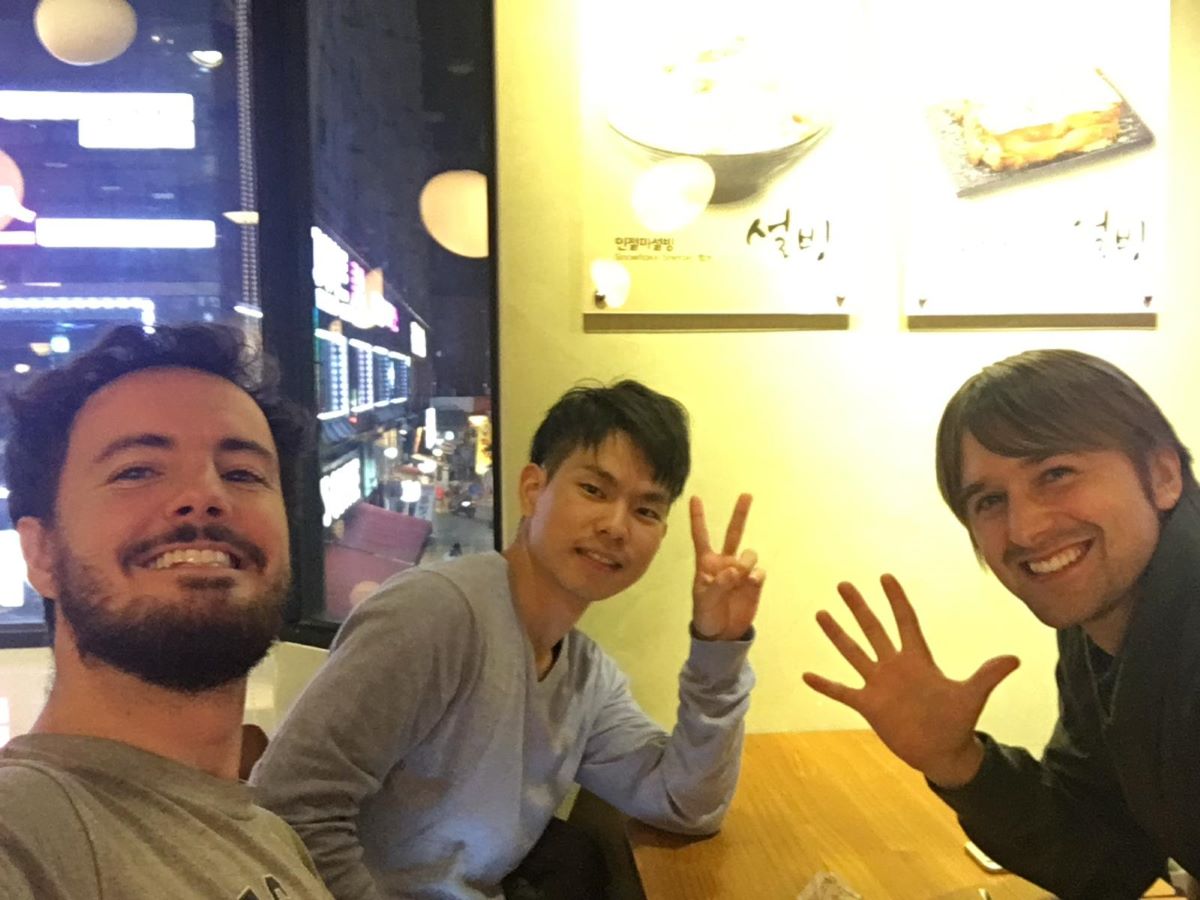
26 EPIC South Korea Travel Tips
After years of living and traveling in South Korea , here are some of the most important tips I’ve learned along the way!
1. Download These Apps!
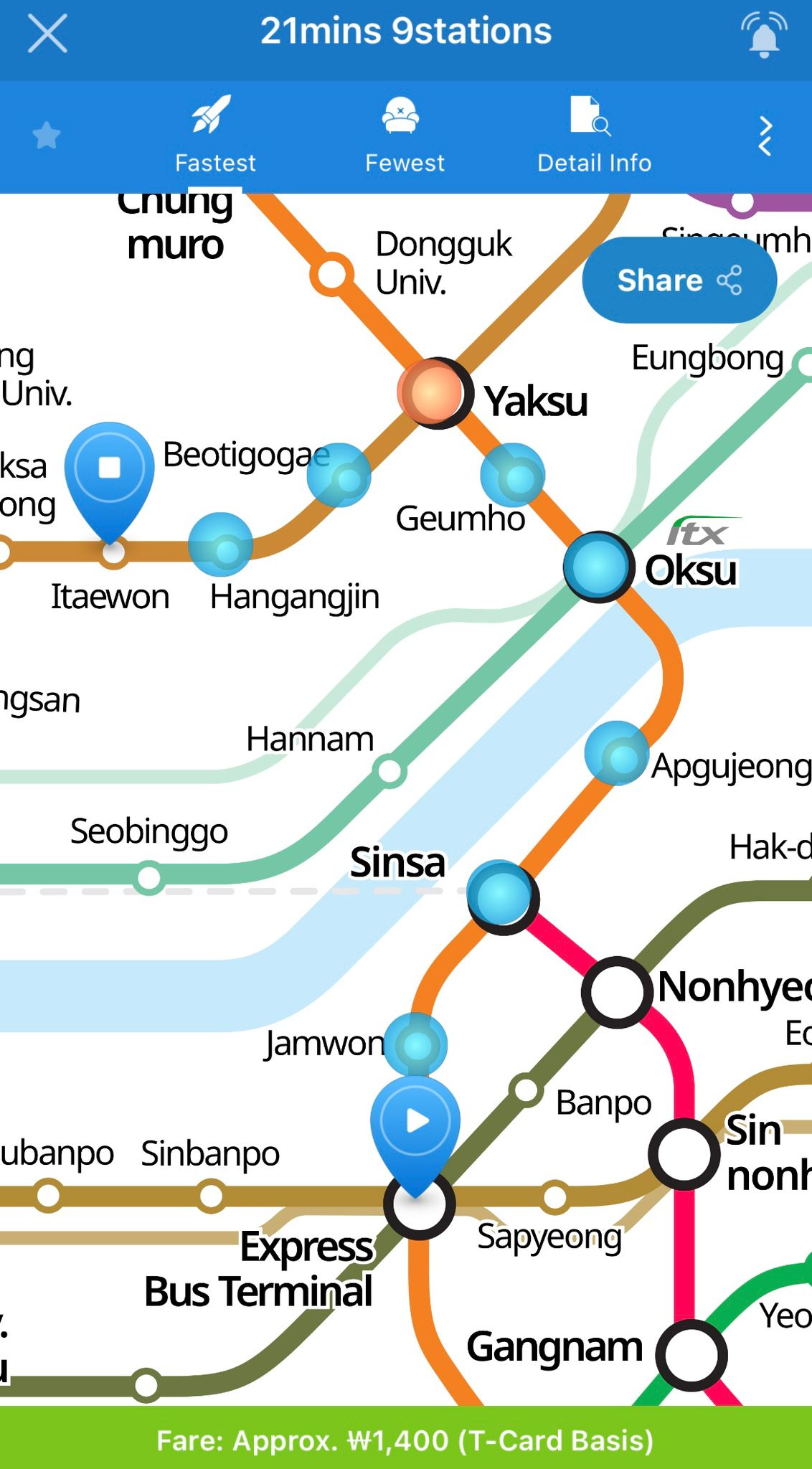
South Korea is one of the most tech-savvy societies on the planet, and you’re going to need to keep up. These apps are just a few of the essentials you want to have to make your trip to South Korea the unforgettable experience it should be.
Subway Korea
Not the most exciting app to download but crucial all the same, this is going to make your time in Seoul so much easier.
With a full, interactive map of Seoul’s ( Korea’s capital city ) absolutely sprawling subway system, Subway Korea tells you exactly which station you need to begin and end at, which stations to transfer at, and how long it’s going to take you from start to finish.
You can find this on the App Store for both Android and iPhone, and a companion app exists for Busan’s smaller (but still pretty big!) subway system.
When it comes to Korean, Google Translate can give you some hilariously bad translations and while that’s always entertaining, you’re going to need to be able to communicate with more than just hand gestures!
That’s why you need to download Papago . It serves many languages and its Korean translations are far better than Google’s, so this is going to make traveling to South Korea for the first time go much smoother.
You can get around places in Seoul with only English, but beyond that you’re going to need some help which makes Papago a must-download.
In my experience, Google Maps isn’t too helpful in Korea, and that’s why you’ve got to download Kakao Maps!
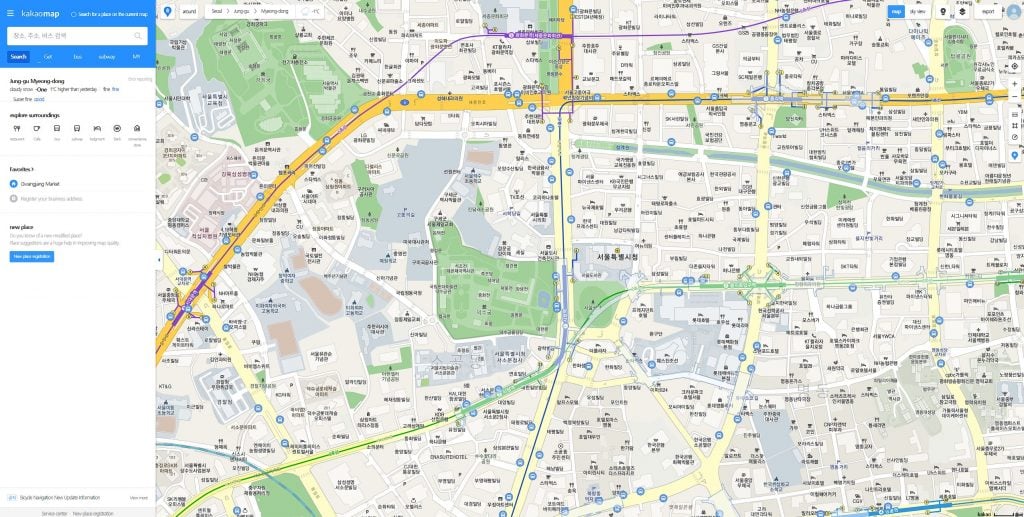
An app made by a Korean company, Kakao Maps is going to provide you with a level of detail, precision, and helpfulness that Google Maps simply can’t deliver.
Whether you’re exploring the city or out in Korea’s gorgeous countryside, this app is the best option for navigating the country.
2. Learn Some Basic Korean Phrases
Having a solid translation app is all well and good, but it’s also important to memorize a few basic phrases in Korean just in case your phone doesn’t come through for you.
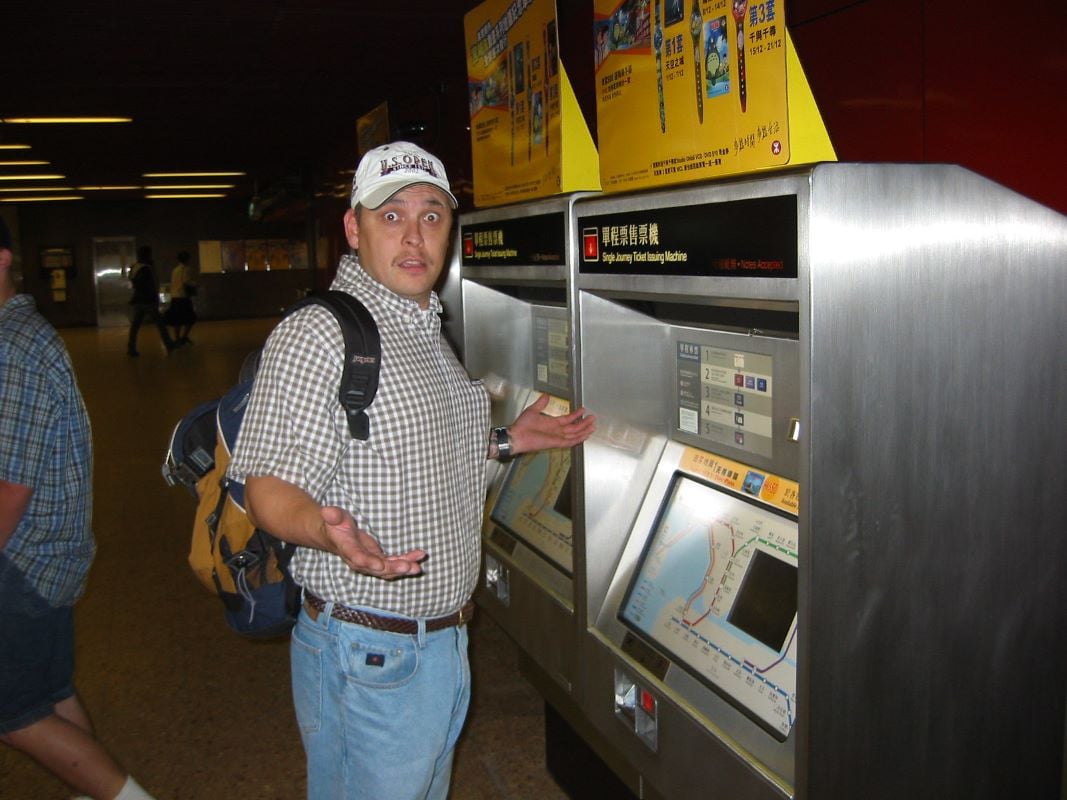
Anyeong Hasaeyeo – Hello
(You might have heard anyeong as meaning “hello” in Korean before and while that’s true, it’s important to say the full phrase because shortening it to anyeong can be seen as disrespectful.)
Kamsamnida – Thank you
Kohn Bae! – Cheers!
Odi / Odi…? – where / where is…?
Hwajangshil – Bathroom
3. Explore the Dramatic East Coast
Staying in Seoul is great, but the country has SO much more to offer.
Korea’s east coast in particular flies far under the radar for most foreigners and isn’t visited nearly enough. But I can attest that it’s easily one of the most epic regions in Korea!
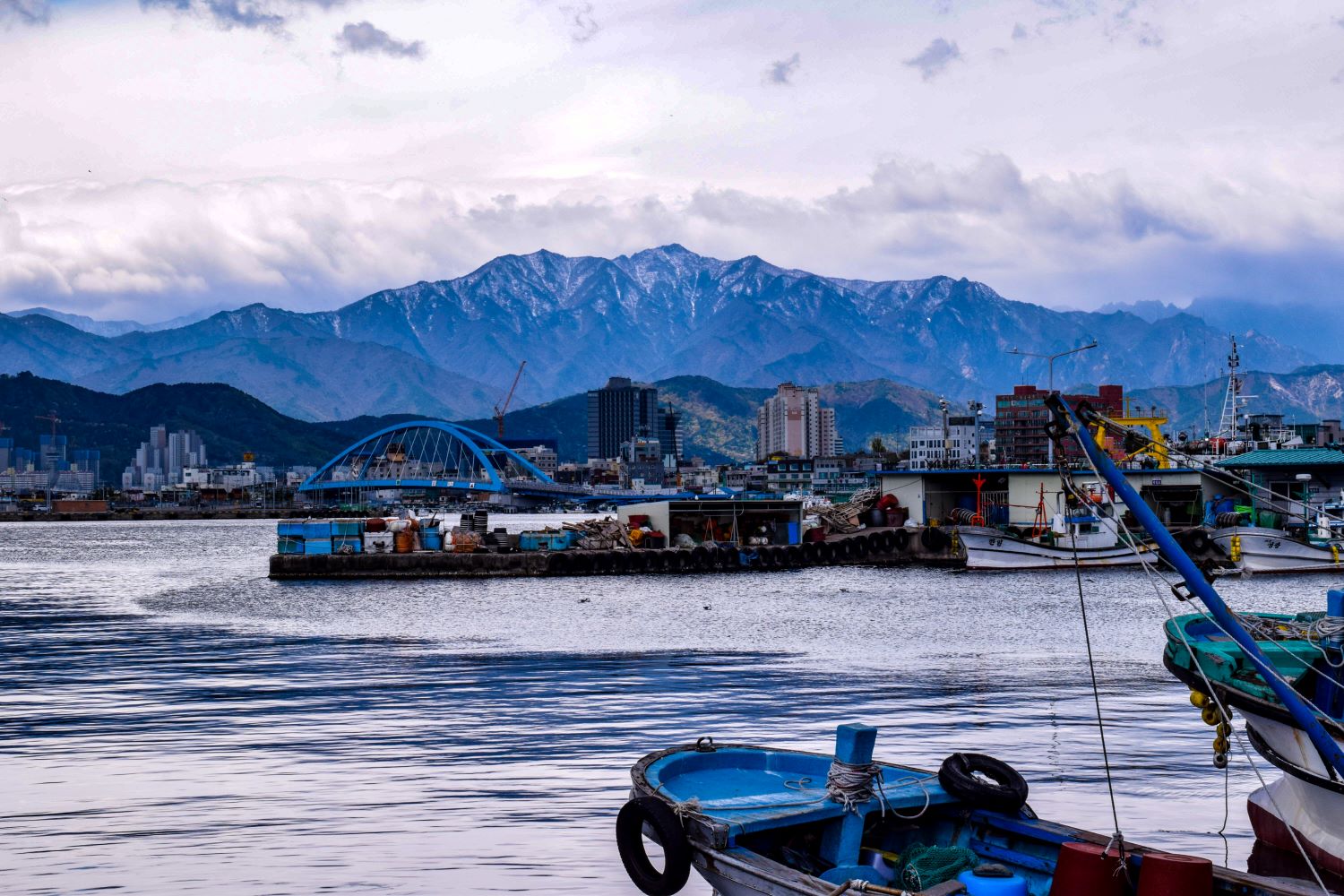
With tall, jagged peaks rising straight out of the sea, the east coast is the perfect place for travelers looking to escape Korea’s ultramodern cities and get out to explore the country’s natural wonders.
The east coast holds some of Korea’s best hiking spots, and Seoraksan National Park in particular is a favorite of mine, especially during winter and spring.
4. Korea is a Shopper’s Mecca
If you’re keen on shopping for the latest fashion or newest tech, South Korea is pretty much unbeatable.
Between Shinsegae, Lotte World, and a TON more, Korea has limitless options for shoppers of all stripes.
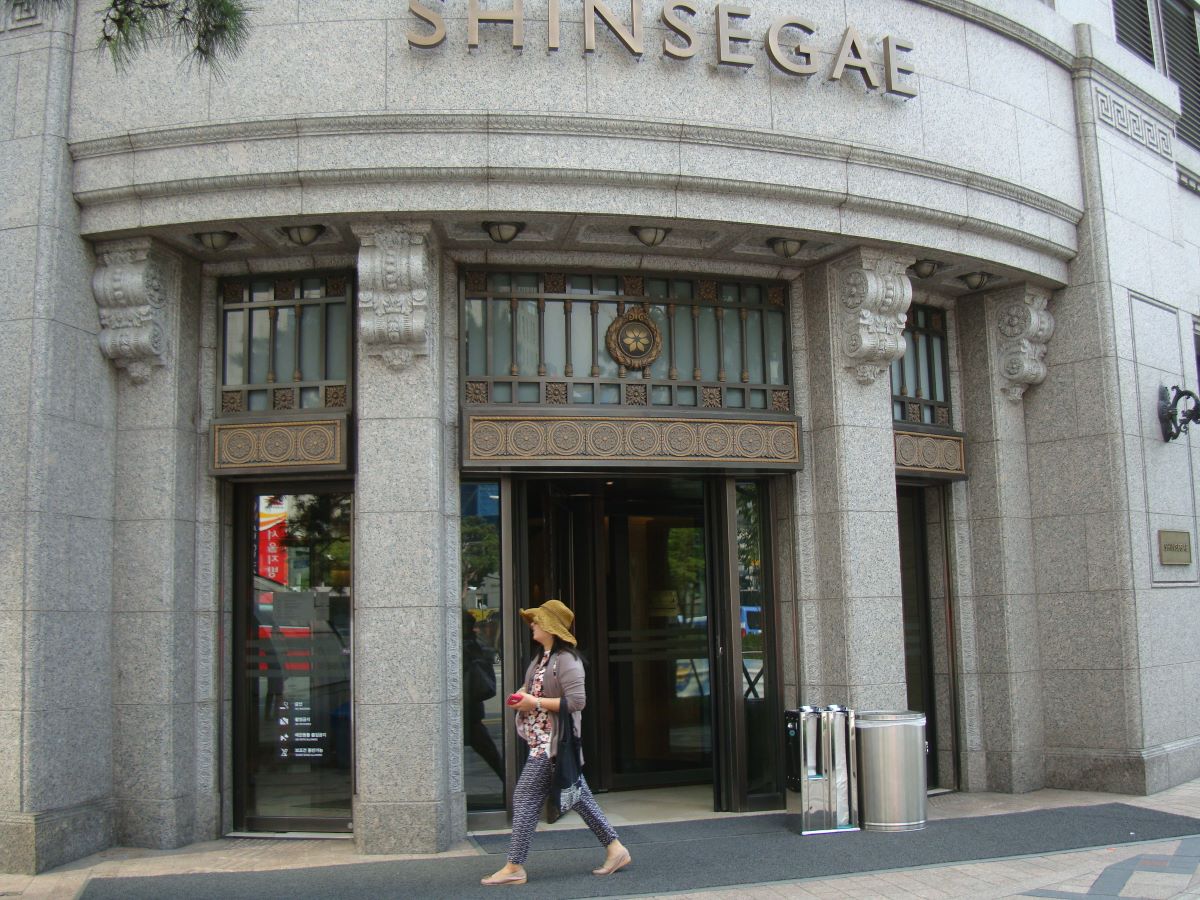
Shinsegae and Lotte are two absolutely massive department store chains in Korea that house countless stores within their walls, and there are so many more on top of those two to choose from and explore.
Your choices really are infinite.
The one thing you need to keep in mind though is that you should be prepared to spend.
Korea is not a cheap country in general, and that extends to its shopping scene. If you’re going to buy a higher-end item here, be ready to shell out a lot of cash.
5. Avoid Drinking Tap Water
Sadly, Korea isn’t a place where you can drink the tap water worry-free. While many places in the countryside have springs with fresh water straight from the mountains, you will need to have a filtered water bottle for your trip!
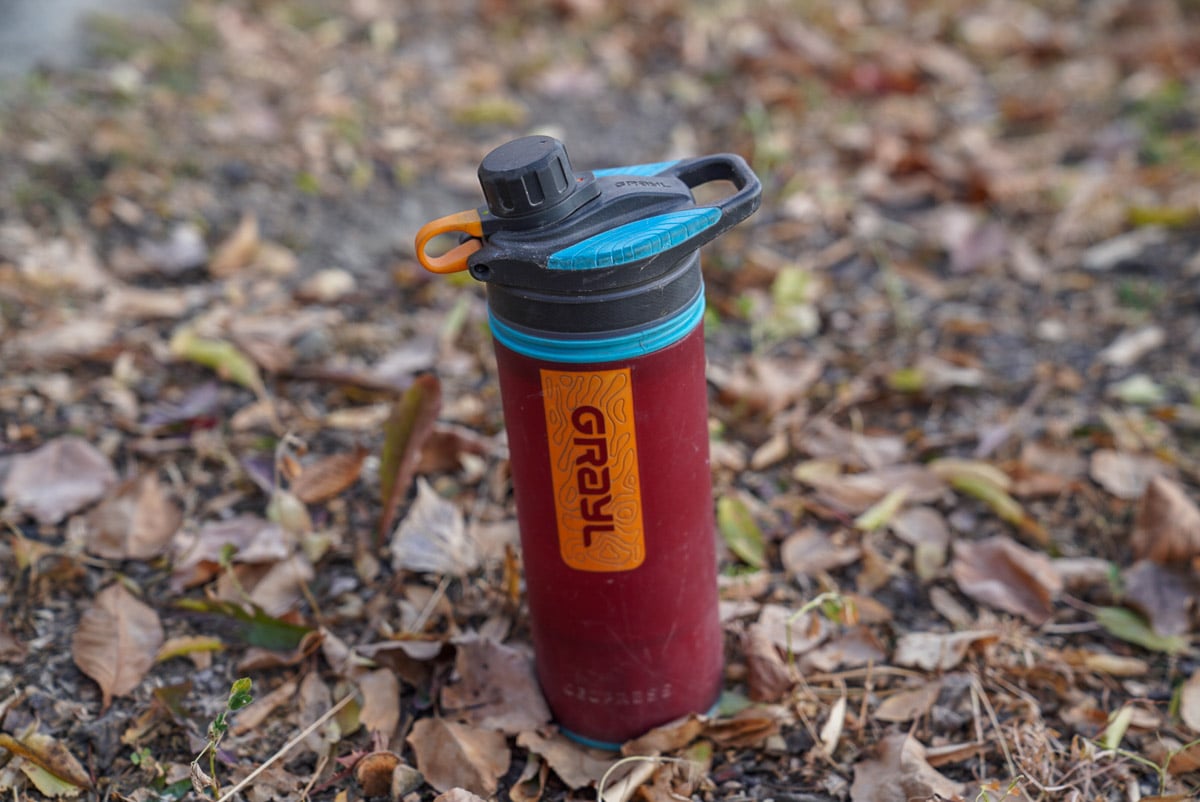
That’s why we strongly recommend you invest your hard-earned cash in getting a Grayl Filtration Bottle to accompany you on your travels!
It’s a reusable, zero-waste system that allows you to drink water from pretty much anywhere and in the long run, will save you countless dollars that you would have otherwise spent on water bottles, filters, and purification tablets.

Drink water from ANYWHERE. The Grayl Geopress is the worlds leading filtered water bottle protecting you from all manner of waterborne nasties.
Single-use plastic bottles are a MASSIVE threat to marine life. Be a part of the solution and travel with a filter water bottle. Save money and the environment!
We’ve tested the Geopress rigorously from the icy heights of Pakistan to the tropical jungles of Bali, and can confirm: it’s the best water bottle you’ll ever buy!
6. Learn How to Get Around in South Korea
Nearly every corner of South Korea is connected by an intricate web of trains and buses that link large cities like Seoul and Busan in the south with the tiny villages and hamlets in the countryside.
Public transportation in Korea is fantastic: it’s reliable, clean, convenient, and always on time!
Even if you’re waiting at a bus stop in the middle of nowhere, if the schedule says a bus arrives at 8:30, it will be there at 8:30, give or take a few minutes.
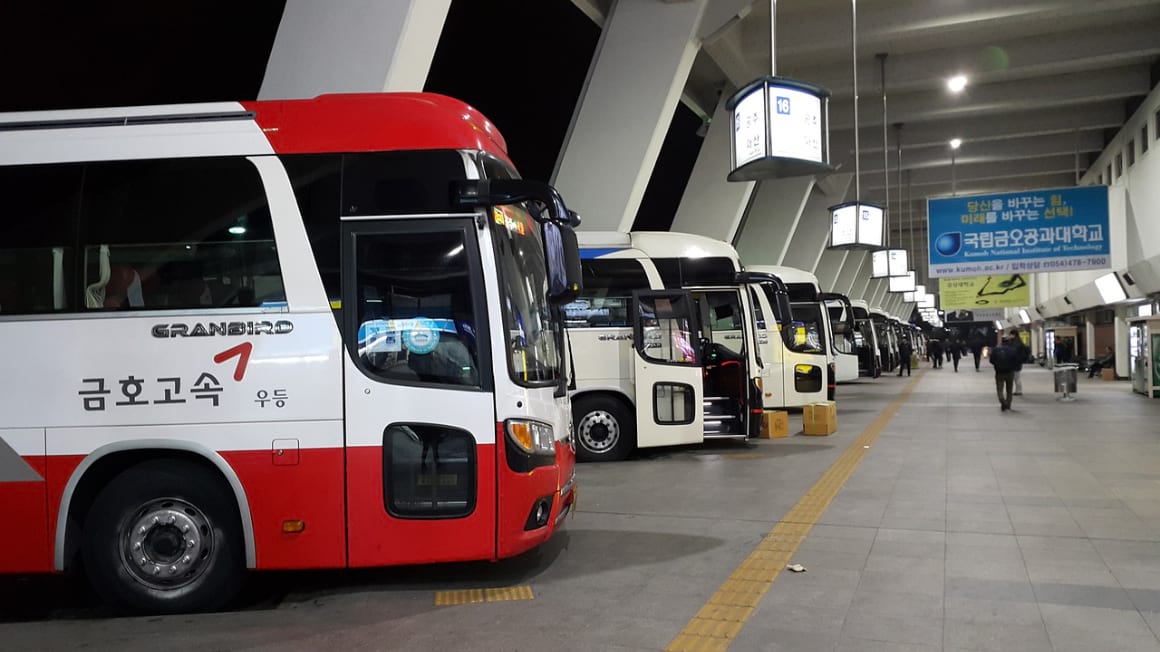
On that note, if you’ve got a bus or train ticket departing at a certain time, make sure you’re there early because you will get left behind if you’re not there on time!
That brings me to one of the most important points of this piece: I highly recommend that you do NOT rent a car or motorbike in Korea if you’re considering it.
While the roads are modern, impressive feats of engineering, drivers here can often be very unpredictable and that can lead to some dangerous situations on the road if you’re not used to it.
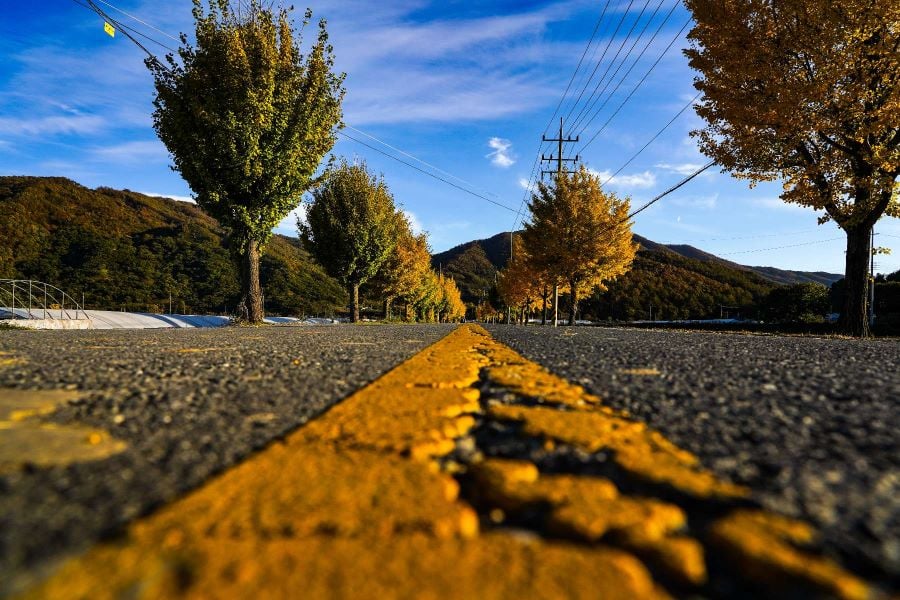
A one-hour motorbike ride between two cities in Korea felt longer and scarier to me than a nine-hour ride on Pakistan’s Karakoram Highway, and anyone who’s made that trip can tell you how much that statement means!
It’s for that reason that I think you should avoid getting your own wheels in Korea, and that risk combined with the excellent public transportation system makes any rentals a needless expense.
When going between different cities, you can use Trip.com to book your train or bus tickets.
Remember to book in advance because if you show up and try to buy the ticket the day of your intended departure, there’s a good chance you’ll be out of luck.
Simple Seoul Travel Tips You Need to Know
Whether you’re traveling to South Korea for the first time or coming back for more, you’ll be spending a ton of time in Seoul so it’s good to know how to stay on top of things when exploring this behemoth of a city!
7. Invest in a Month-Long Tmoney Card
You’ll probably be using public transportation a lot, so it’s best to invest your money where it counts to get the most bang for your buck.
Bus and train fares in Korea are cheap anyway (about one dollar or less per ride), but the government just launched a new transit card option which allows passengers to spend $49 for a one-month pass and get unlimited access to Seoul’s huge network of trains and buses, as well as public bicycle rentals.
The card is rechargeable, so if you plan on staying in Korea for longer than a month, this is a great option to make your Seoul itinerary easier to execute.
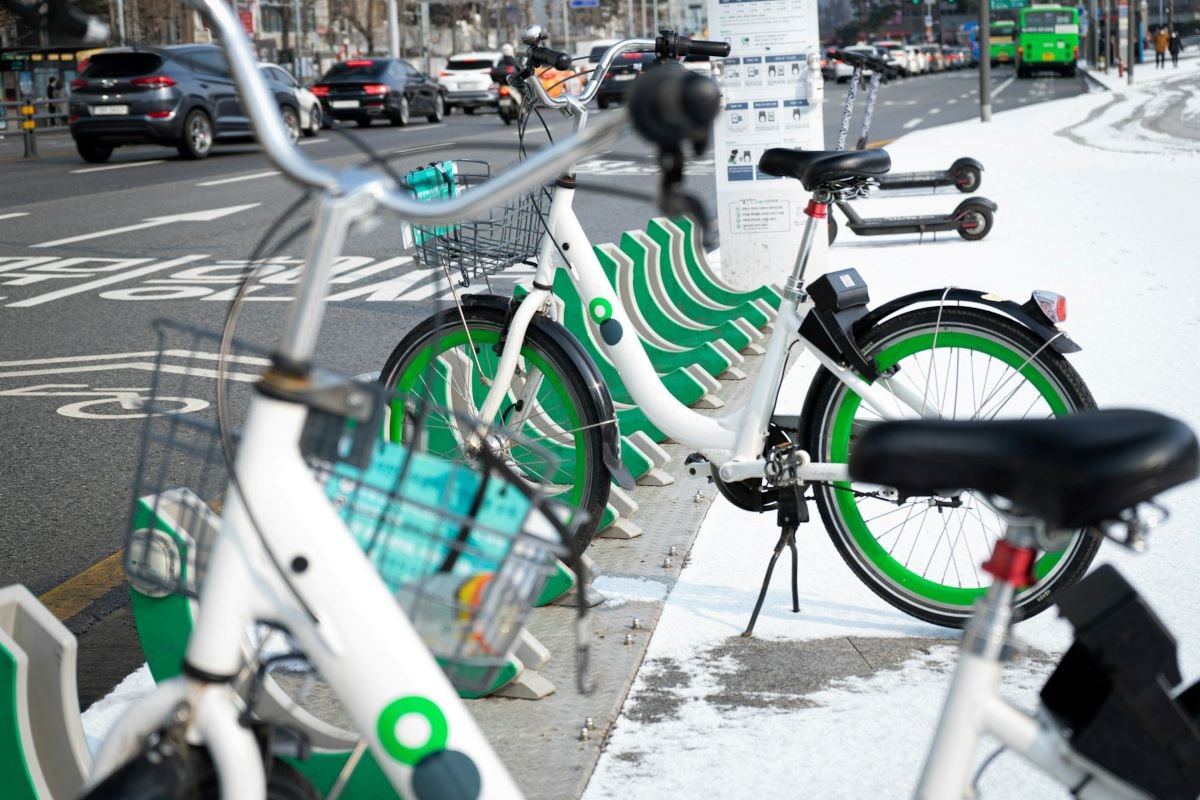
You can get one at any major subway station, but sadly this card only covers public transportation in Seoul for now, so keep that in mind before buying.
If you’re just looking for a good old-fashioned Tmoney card without the month-long plan, you can get one at any convenience store or subway station and charge it with cash.
8. Make Reservations in Advance if Possible
When it comes to accommodations or more popular restaurants/cafés, it can be difficult in Seoul to simply show up to a place and expect to find an open spot, especially in high season.
This is a country where it’s best to make your reservations beforehand. If you don’t, there’s a very good chance that you’re going to miss out and get turned away.
9. Try Seoul’s amazing street food
Korean cuisine has plenty of tasty street snacks that are quick and cheap, making this one way to cut costs in Seoul! There’s no shortage of markets and stalls offering a quick bite, so be sure to check them out.
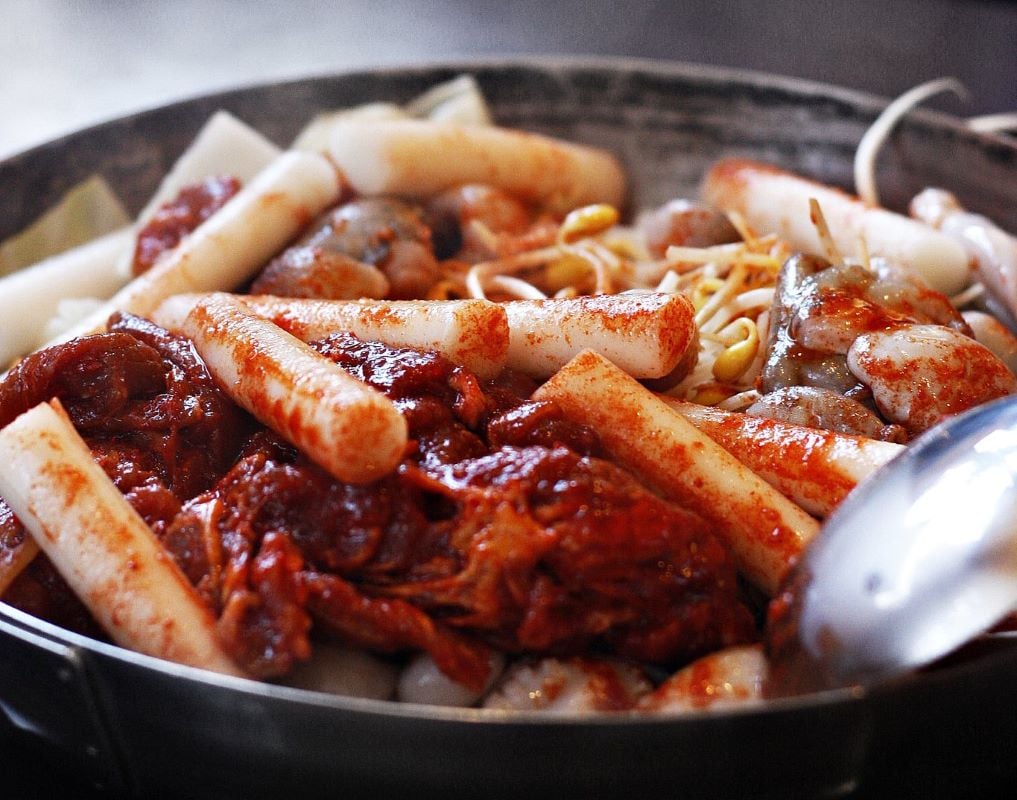
Kimbap and tteokbokki are two classic Korean eats that are cheap, delicious, and filling.
10. Understand Internet and Data in South Korea
Wifi is everywhere and internet speeds are lightning fast, but you’ll still want to stay connected when you’re on the move!
SIM cards and data plans tend to be pricy by Asian standards, and while you can get Korean e-SIMs at the airports, there’s a better option: a WiFi Egg rental.
You can check out a list of rental options here , and any of them will keep you connected to Korea’s ridiculously fast internet while you’re on the go without breaking the bank.
11. Korea Isn’t Cheap
Expenses in Korea aren’t quite as scary as Western Europe in summer but this isn’t Thailand either, so you need to be prepared to spend a little more.
Hostels will cost at least $15 USD/night but usually a bit more, and proper meals will start at around $8.
Public transportation is cheap, but going to a different city is going to cost a bit more: between $10-$50 depending on how far you’re going.

We’ve tested countless backpacks over the years, but there’s one that has always been the best and remains the best buy for adventurers: the broke backpacker-approved Osprey Aether and Ariel series.
Want more deetz on why these packs are so damn perfect? Then read our comprehensive review for the inside scoop!
12. Bring Masks to Protect Yourself from Pollution
Korea and neighboring China are heavily dependent on coal for their energy needs, and as a result, the skies can occasionally have dangerous levels of smog, especially in big cities.
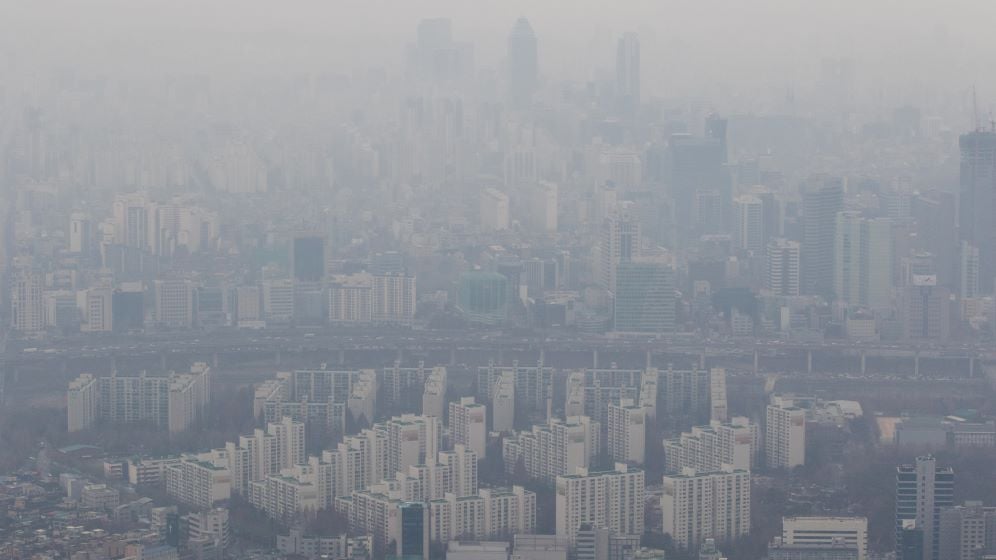
Masks are technically not an essential, but you’re going to want to have a few masks on hand to help you deal with this problem.
Just to give you an idea of how bad this can be sometimes: I’ve had an easier time breathing whilst hiking in difficult conditions at 5000m+ altitudes than I’ve had while just sitting outdoors at a café in Seoul trying to enjoy my coffee on a day when the pollution is at its worst.
13. Pay Attention to the Rules
Koreans are meticulous rule-followers, and it’s very important to keep this in mind when planning a trip to South Korea.
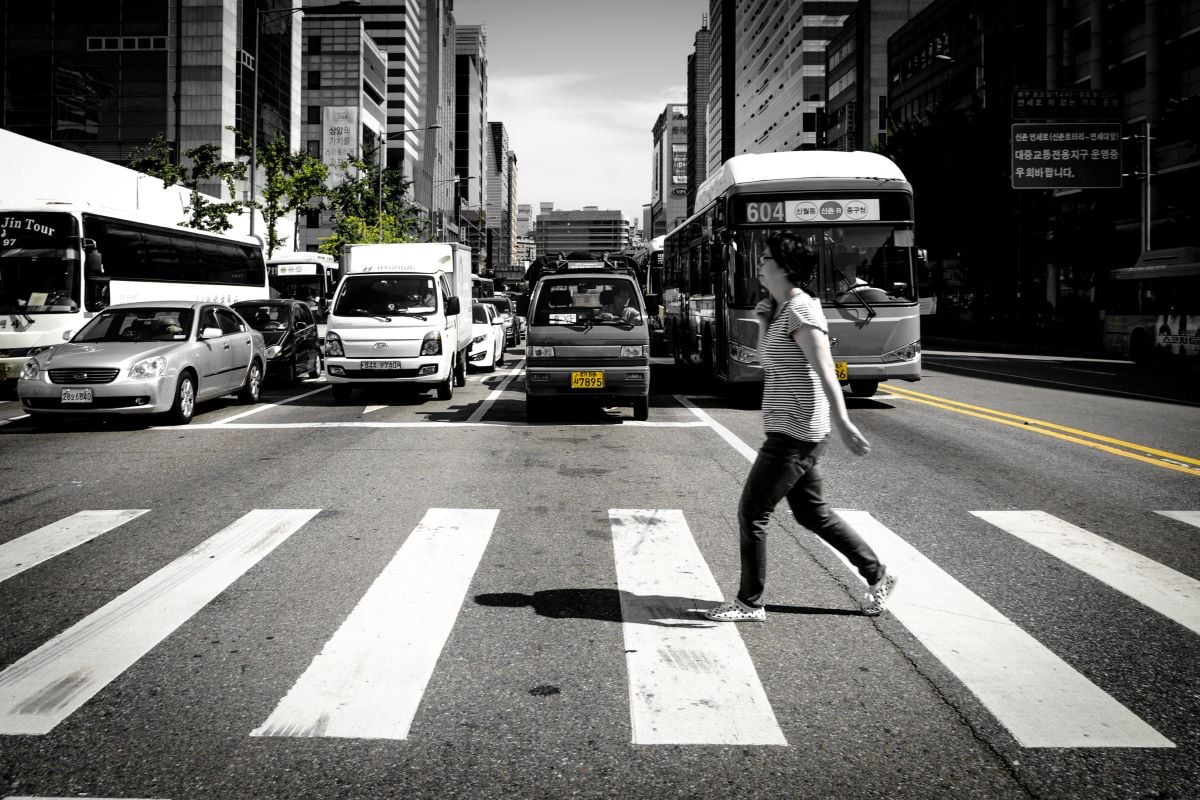
No matter how ridiculous a rule might seem to you, Koreans will obey it almost without exception. Even if it’s 3am and the roads are completely empty, a pedestrian is going to wait until the crosswalk turns green before they think about venturing out onto the empty road while the sign is red.
Many countries are really loose with the law but this is not one of them, so make sure that you’re completely respectful of the rules when you’re visiting South Korea.
A Few South Korea Cultural Travel Tips
Respecting Korean societal norms are SUPER important. Let’s get into a few of them…
14. Don’t tip
This might come as a huge relief to visitors, especially for Americans, but it’s important to know that tipping isn’t really a thing in Korea. Very rarely a place will ask for tips for its workers, but otherwise you should avoid tipping in all situations.
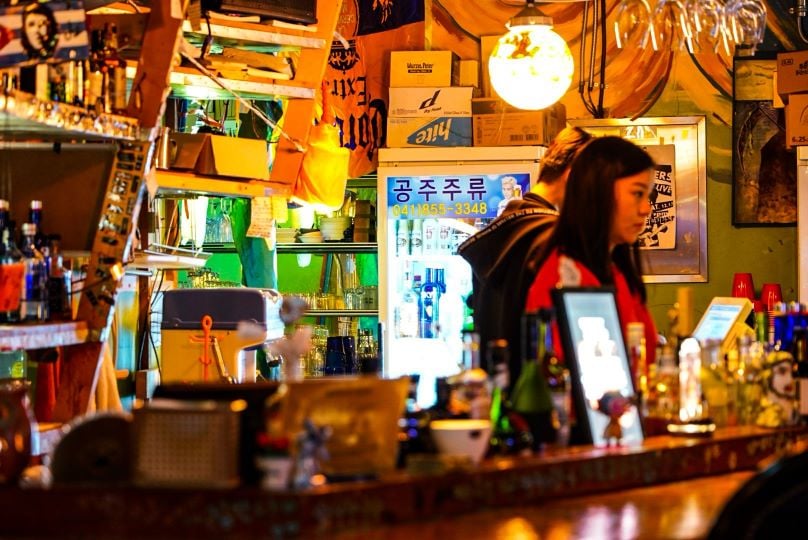
15. Politeness and respect are non-negotiable
Korean culture is deeply rooted in visibly showing respect for others, and it’s important to adopt that attitude while you’re visiting South Korea. Sass and sarcasm are looked down upon in nearly all situations so it’s best to avoid using those entirely.
16. Koreans tend to be reserved
While Koreans are very polite and hospitable, they are usually pretty reserved and it takes awhile for them to open up, so don’t worry if it seems like they’re not too friendly at first!
17. Learn to Read Korean
Okay, I realize this might sound insane, but hear me out!
Hangul – the name for the Korean alphabet – is incredibly easy to learn how to read and will take you an hour or two max to get the basics down.

Just a bit of study goes a long way in helping you read signs and menus, making this a great return on investment for your time.
Even if learning languages isn’t your thing, I promise you that this is way easier than it sounds and strongly recommend giving it a try!
18. Understand When to Visit South Korea
Autumn and Spring are majestic.
Japan gets a lot of recognition for its stunning seasonal colors (and rightly so!) but these seasons in Korea are just as magical and can’t be missed.
It’s also way less crowded than Japan, and the colors you’ll see here are simply unreal.
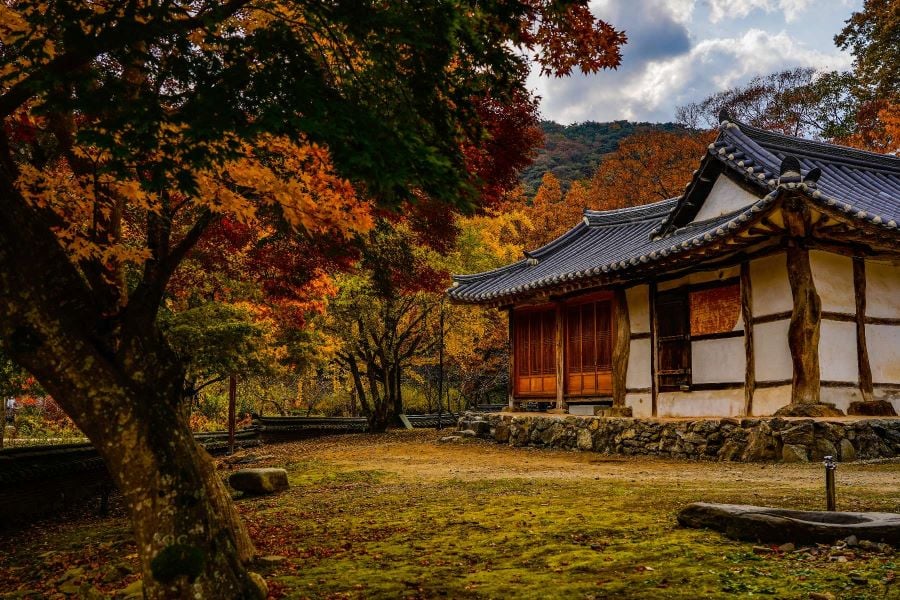
These are not busy seasons in Korea as far as foreign tourism is concerned, so you’ll have a lot more space than you would in summer.
You’ll have to get out of the city to see these colors at their best, and Magoksa Temple is one of the most stunning locations in Korea during peak foliage!
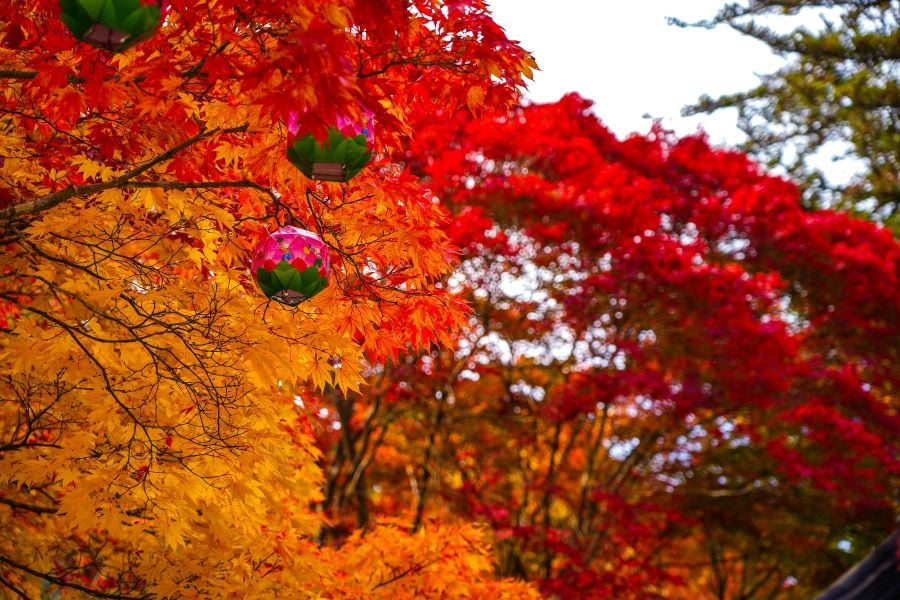
Magoksa Temple is not too far from Seoul so it’s very accessible. If you’re in Korea during Autumn, this spot is a can’t-miss.
If you’re keen on visiting South Korea during Spring, you will see spellbinding cherry blossoms pretty much everywhere you go, but Seoraksan National Park on the east coast is one of the best spots in the country this time of year.
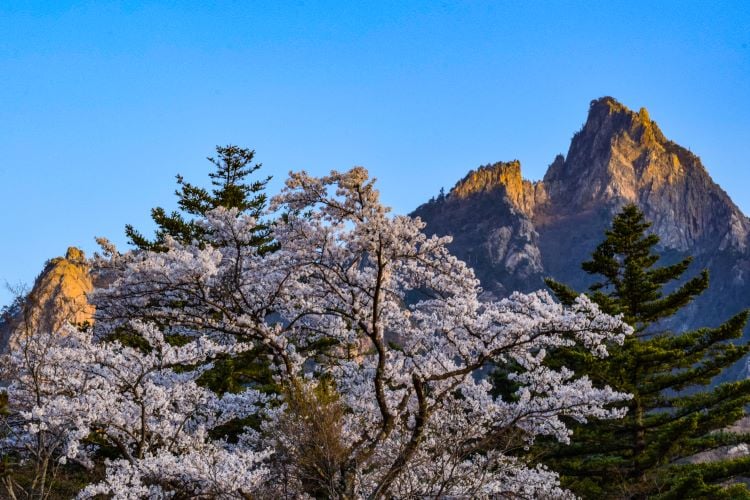
This one’s a bit further out of the way as it’s a 3-hour bus ride from Seoul, but it’s more than worth it! I’ve made the trip out to Seoraksan multiple times and it still isn’t enough.
Going to South Korea in summer is going to be a non-stop sweatfest and while winter can be utterly breathtaking, it’s freezing cold, so Autumn and Spring are the ideal seasons to visit Korea.

Stash your cash safely with this money belt. It will keep your valuables safely concealed, no matter where you go.
It looks exactly like a normal belt except for a SECRET interior pocket perfectly designed to hide a wad of cash, a passport photocopy or anything else you may wish to hide. Never get caught with your pants down again! (Unless you want to…)
19. Seoul is a Foodie’s Paradise
Not only does Seoul have tons of excellent spots for trying Korean food, but the capital is also home to cuisines from all over the world! Italian, Japanese, Mexican, barbecue of all kinds, and so much more: you name it, Seoul has it.
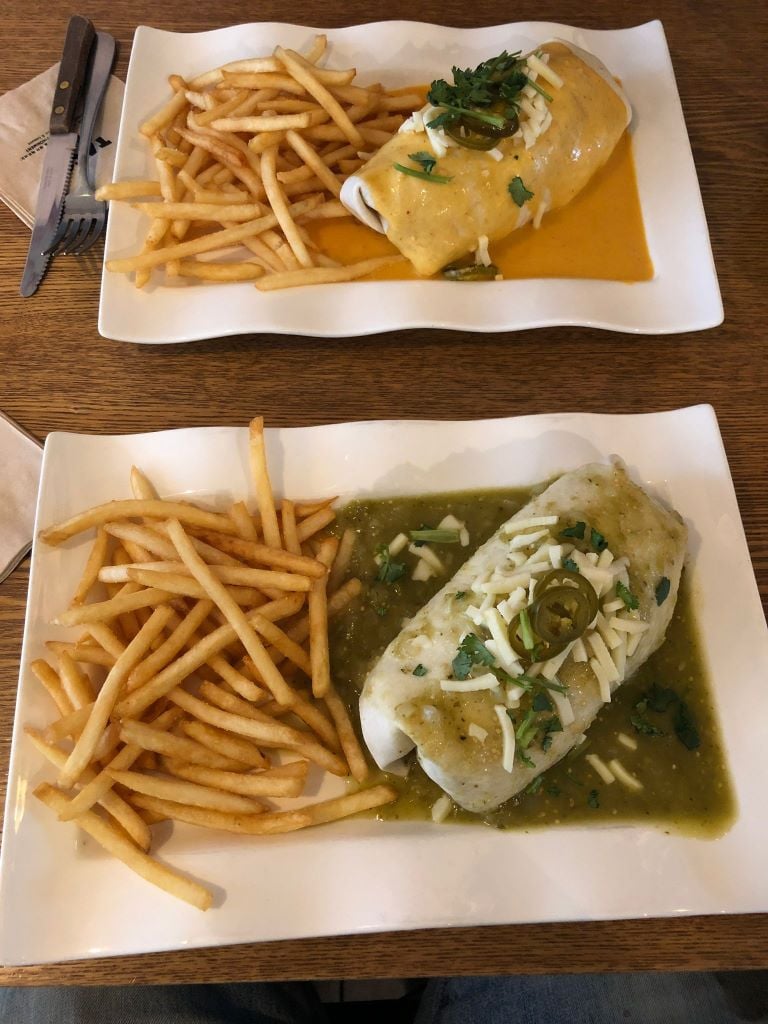
While you could easily dedicate an entire book to Seoul’s many restaurants, here are a few highlights!
One of the best Mexican restaurants I’ve found anywhere in East Asia is Taco Amigo , located right in the heart of Itaewon.
Just up the road and right on Itaewon’s main street is Vatos , a Mexican fusion restaurant that has a seemingly infinite number of delicious meals to try out.
If you’re craving some classic Texas BBQ, Low and Slow Itaewon has got you covered.
The Royal Food and Drink is a cliffside restaurant with a stunning view of Seoul and serves a majestic brunch that will send you into a food coma.
Not only one of the best brunch places in Seoul but one of the best I’ve been to anywhere, meals here are unforgettable.
Whether you’re looking for izakayas, Levantine restaurants, kebabs, Mexican, or pretty much anything else: this city is a paradise of cosmopolitan cuisine, and taking advantage of that is a must.
Seoul does have unforgettable KBBQ restaurants and countless more excellent Korean restaurants, but the best (and cheapest) Korean food will be found beyond Seoul’s expansive boundaries!
20. Being Vegetarian or Vegan in Korea Isn’t Easy
As with a lot of Asian countries, it can be a challenge to navigate the food scene if you’re vegetarian or vegan. When visiting Busan , Seoul, Daegu, and other larger cities, many restaurants can cater to your diet but in the countryside, you’ll find that your options are much more limited.
Thankfully, Korean food does have some options for those of you who don’t eat meat!
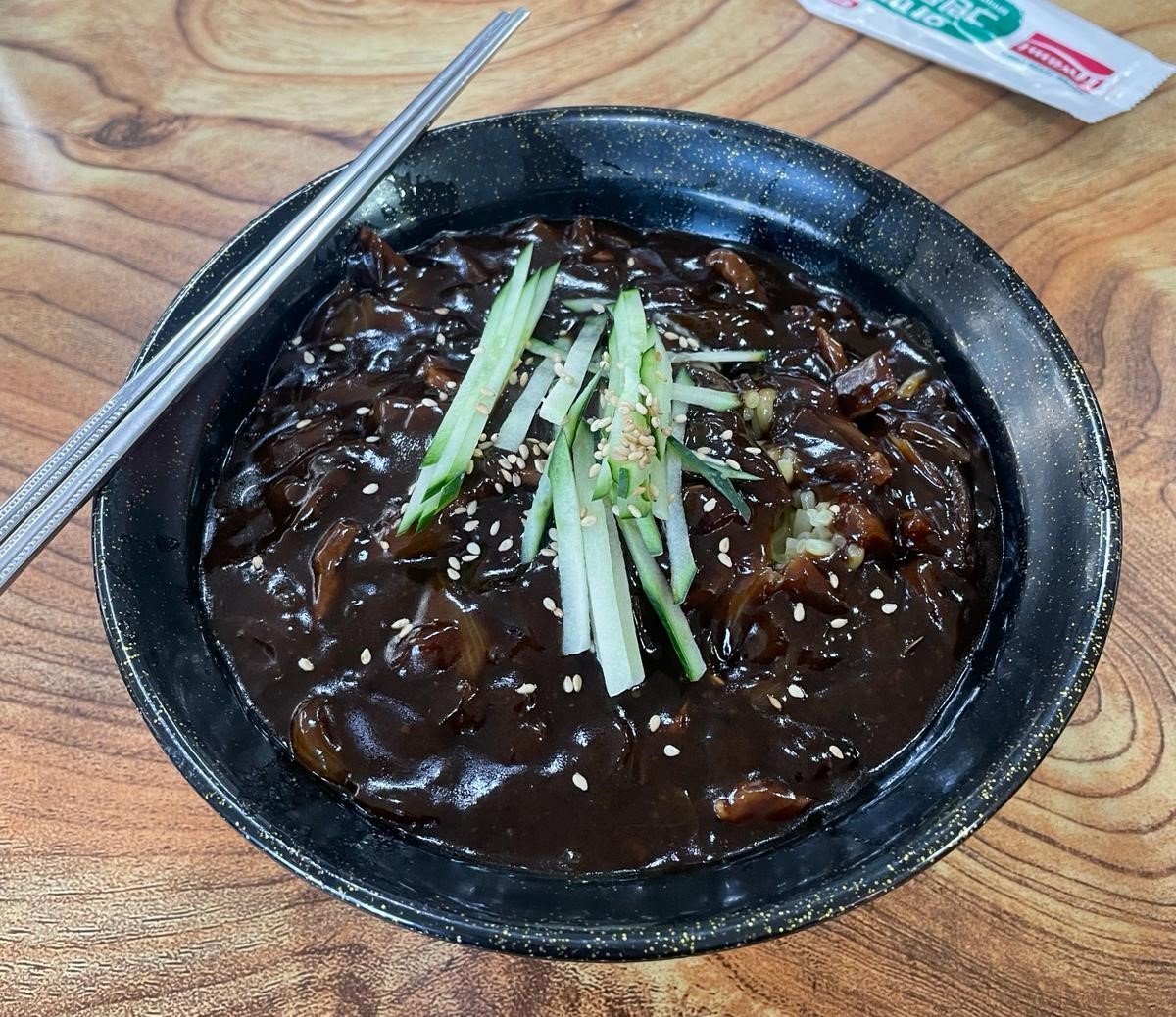
Vegetarian mandu (dumplings), kimbap, and bibimbap are all tasty vegetarian dishes that you can’t miss out on, and jjajangmyeon is one of my personal favorites.
If you’re at a restaurant and ordering food that may or may not come with meat, like dumplings, just ask the waiter for “gogi opsoyo” (“no meat”) and you’ll be all set.
21. Explore Korea’s Amazing Café Scene
Going to South Korea means you get to explore a café scene which is second to none. A massively diverse range of cafés awaits travelers from the traditional to ultra-modern and quirky.
Seoul itself is home to countless unique, very photogenic cafés that you could probably spend a lifetime venturing through.
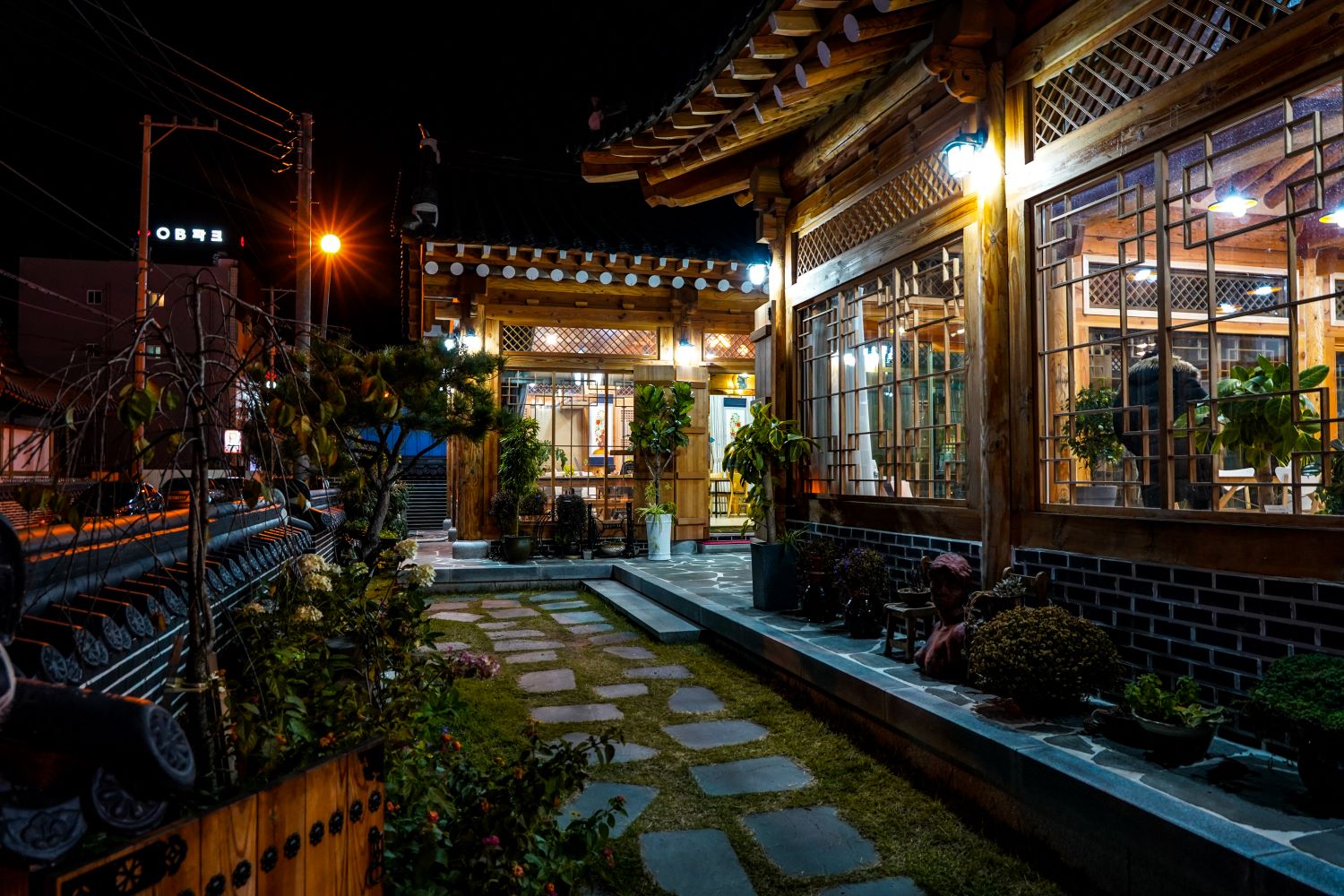
One of the capital’s most iconic spots is C.Through Café, which you’ll find here . Not only are the drinks delicious, but they also look so good that you almost feel bad for drinking them.
The coffee itself may or may not be what you’re looking for depending on your own personal tastes, but Korea’s cafés and teahouses are so diverse and incredible that I highly recommend you spend some time exploring what they have to offer!
22. Discover Korean Meals You Might Not Know Of!
Korean BBQ, samgyupsal, and kimchi are famous Korean culinary exports for good reason, but there are so many more Korean dishes that any backpacker worth their salt has got to try at least once.
Dakkalbi is a truly epic dish served in a massive pan that contains meat, rice cakes (called dak), vegetables, spices, and more depending on what you request.
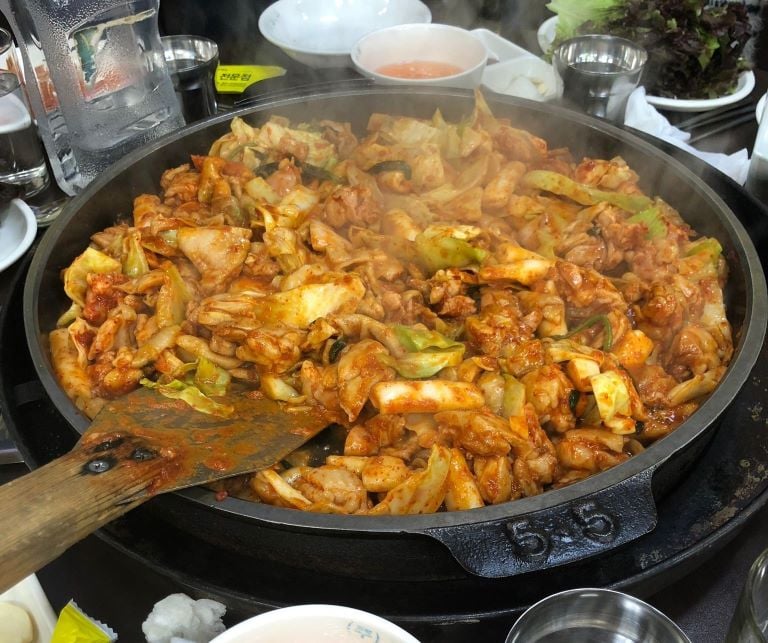
This is the perfect meal to have after you’ve worked up a huge appetite from exploring all day, and best to share with friends.
Quite possibly my favorite Korean meal is jjimdak. Often served in an enormous pan, this dish consisting at its core of chicken, glass noodles, rice, spices, and onions is a gluttonous, decadent meal that everyone should reward themselves with, and you can add more to the pan to mix things up a little.
Hint : add cheese.
23. Get Lost in Seoul’s Insane Nightlife
Seoul’s nightlife is famous and for very good reason: it’s amazing .
Coming out of a difficult few years due to the COVID pandemic, the capital’s bars and clubs are slowly returning to their former glory.
Gangnam, Itaewon, and Hongdae each have an endless supply of bars, restaurants, and clubs to explore that are wild fun, and a visit to Seoul is incomplete without at least a few sleepless nights spent in these districts.
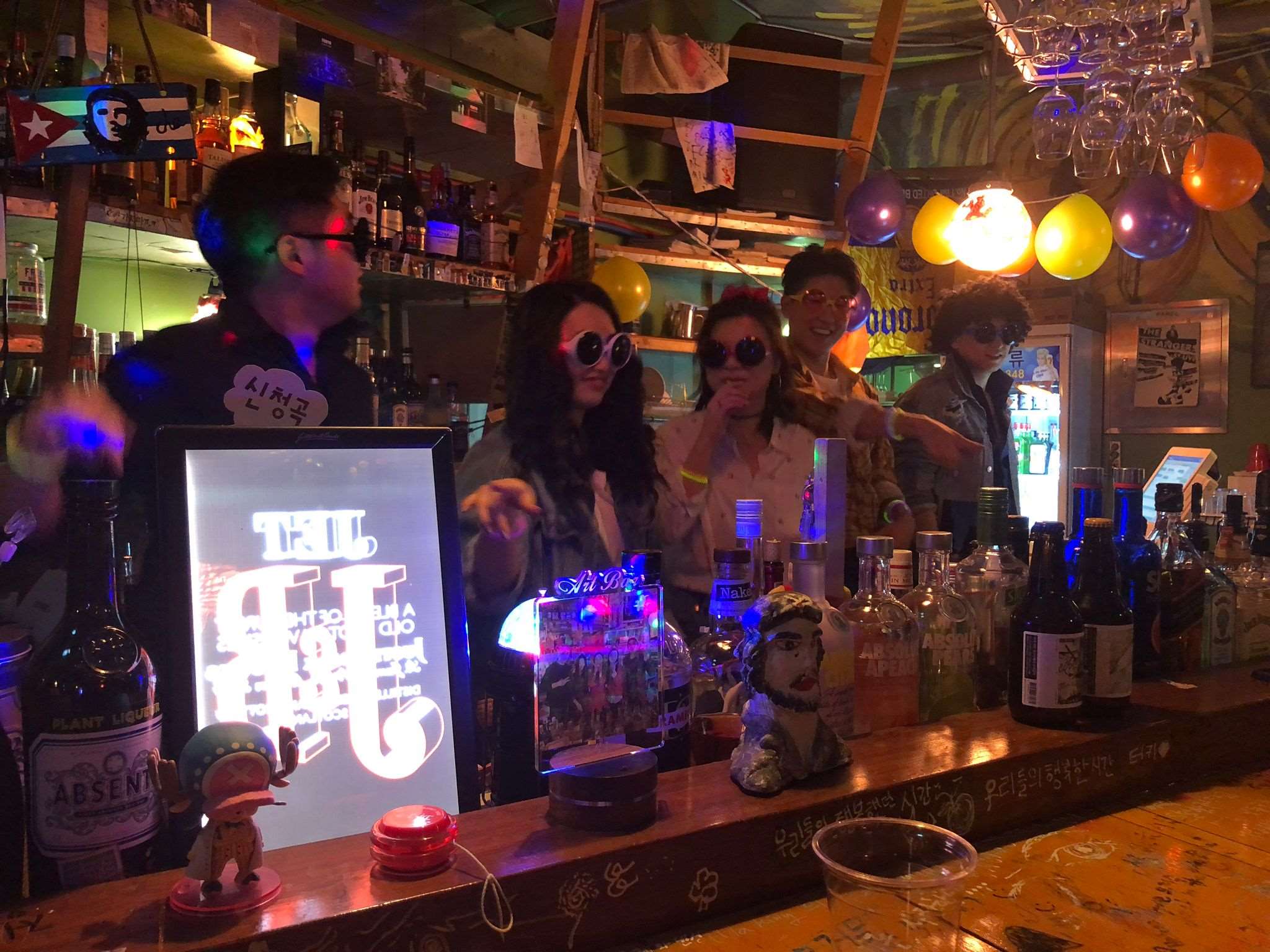
You’ll also find unique escape rooms, board game cafés, and more.
It’s simply not possible to list all the things you can do in Seoul, which is exactly why you should get hopelessly lost in wandering through this amazing city’s nightlife.
24. Get Off the Beaten Path
South Korea is rightly well-known for being a haven of futuristic cities, shopping, and lightning-fast internet, but it’s so much more than that!
This is a country where ancient wonders mix with natural beauty in a way that doesn’t happen anywhere else, and one of the best tips for traveling to South Korea I can give you is to journey away from the typical tourist loop of Seoul, Busan, and Jeju.
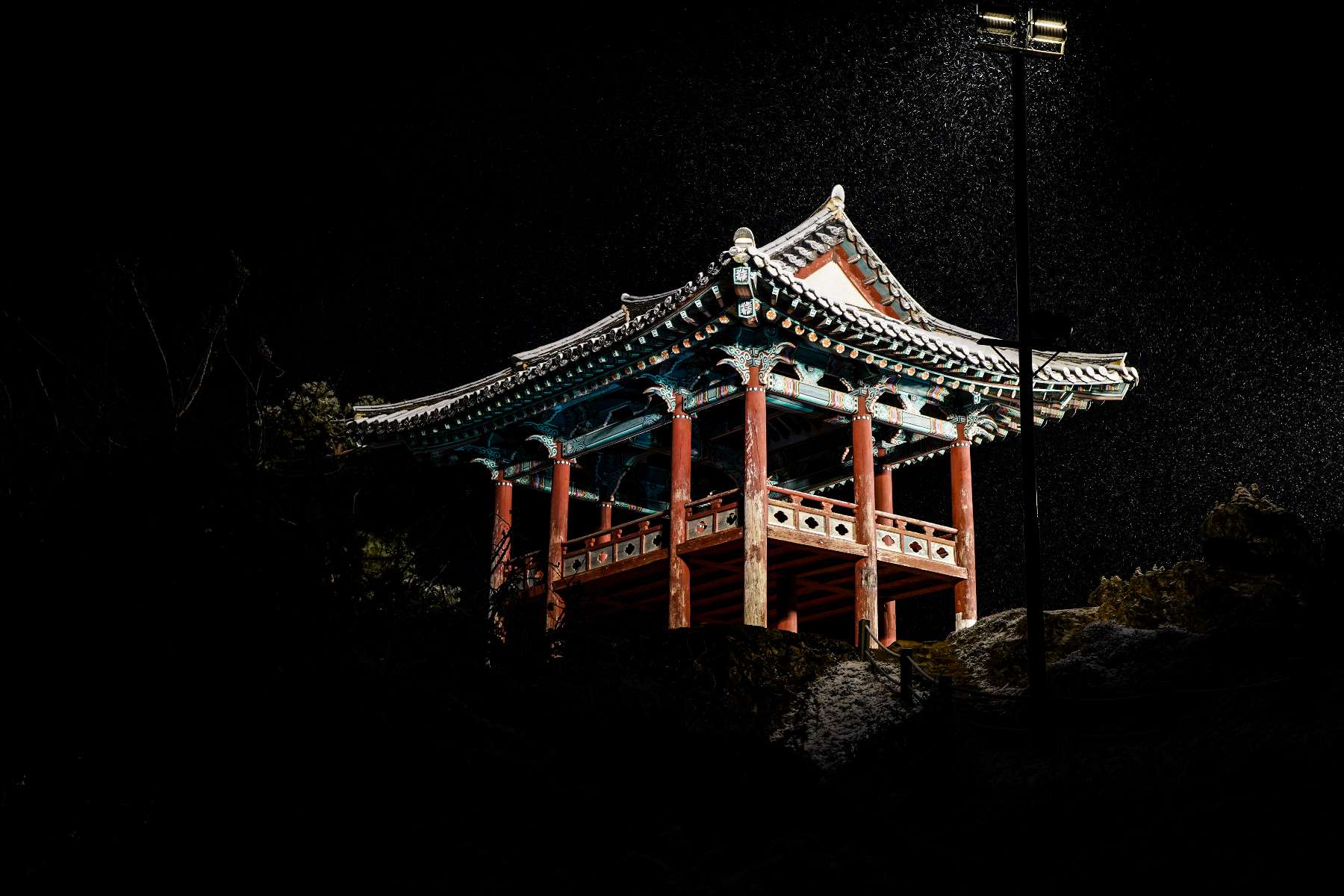
That might seem like hard advice to follow in a tiny country that’s so modernized, but venture beyond the confines of the cities and you’ll find a side of Korea that most people don’t see.
Experiencing Korea’s ancient, rich culture and all the gems hiding in its many hills simply can’t be missed out on, and this is what makes going to South Korea an unforgettable experience, far more so than a night out in Seoul or Busan.
25. Know Which Places to Stay/Avoid
Korea has no shortage of great hostels to stay at that range from cozy and classy to social and wild, but here are just a few to keep in mind:
If you’re looking for a good time in Seoul that doesn’t involve much sleeping, The Time Traveler’s Party Hostel in Hongdae is hard to beat. Fun and social with a downstairs bar and a crew that goes out into Hongdae’s vibrant nightlife every night, this is the place to be for all kinds of partiers.
Its sister hostel, Time Travelers’ Relax Guesthouse , is for backpackers looking for something more low-key and restful. Also in Hongdae, this hostel is in a quiet neighborhood that’s just a short distance from the district’s unbelievable nightlife scene, so it gives you the best of both worlds.
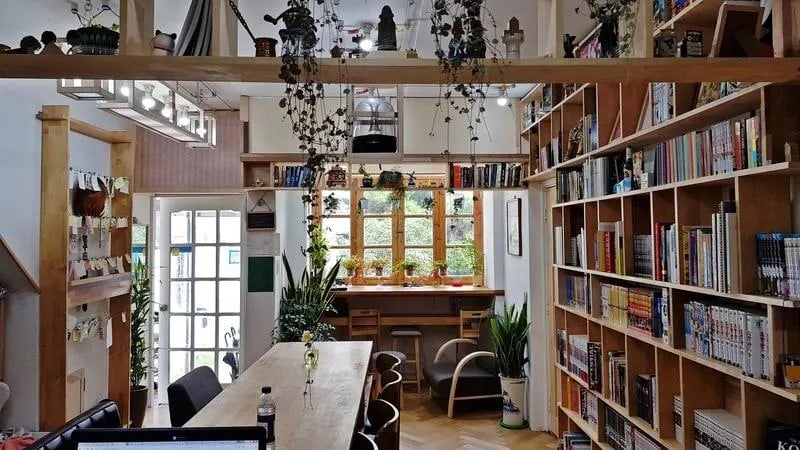
Seoul Cube Itaewon is also an incredible hostel with a great reputation, and its location right in the center of Itaewon is basically unbeatable!
When it comes to Seoul – and Korea in general – pretty much any hostel or guesthouse you choose is going to be solid with one exception: the Hongdae Bird’s Nest Hostel. This is the one place I recommend you absolutely avoid at all costs unless you have no other choice.
You might be tempted by its low prices and convenient location (I was!), but the facilities are less than ideal and the management is strange, unhelpful, and at times very unfriendly to guests. Avoid, avoid, avoid.
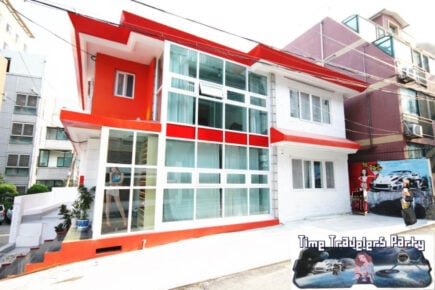
Time Traveler's Party Hostel
With a basement bar and a perfect location just 7 minutes from Seoul's Hongdae neighborhood, this is the best hostel for those looking to get the most out of the city's epic nightlife. It's super social, and you can even get a taste of authentic Korean BBQ every Friday night at their weekly group dinners.
26. Travel With Good Insurance!
Travel insurance is one of the most essential items all travelers simply should not go without, and you need to make sure you’re covered in the event a disaster happens!
Korean healthcare is some of the best – and most affordable – in the world, but you still don’t want to be stuck paying for 100% of a hospital bill.
That’s where SafetyWings comes in: at $40 per month and contract-free, this is an excellent choice for travelers and digital nomads.
Having that peace of mind that you’re covered in case of emergencies is priceless, so don’t forget to sign up before you set out on your travels: it could make all the difference.
ALWAYS sort out your backpacker insurance before your trip. There’s plenty to choose from in that department, but a good place to start is Safety Wing .
They offer month-to-month payments, no lock-in contracts, and require absolutely no itineraries: that’s the exact kind of insurance long-term travellers and digital nomads need.

SafetyWing is cheap, easy, and admin-free: just sign up lickety-split so you can get back to it!
Click the button below to learn more about SafetyWing’s setup or read our insider review for the full tasty scoop.
So is South Korea Worth Visiting?
100%, absolutely, undeniably yes. Not only is it more than worth the effort, I stand by the fact that Korea is one of Asia’s greatest countries to travel in.
Temples, towers, unforgettable nights, delicious food and more await travelers who make the trip to this unique land caught at a crossroads.
Going to South Korea is the experience of a lifetime and when your trip is at an end, no matter how long it is, you’ll find yourself wanting more.
I hope you’ve learned something from these South Korea travel tips. Now all that’s left is to book that ticket.
A wild ride awaits!
- Become a MASTER traveler with our epic travel tips.
- Embrace your backpacker spirit and travel off the beaten path , because… why not?
- Our killer guide to living in hostels will transform your stay. Check it out!
- Get off the couch and into the great outdoors with our hiking guide .
- Or… explore more of the region and go backpack Japan .
- See what most backpackers do not with an epic trip to China .
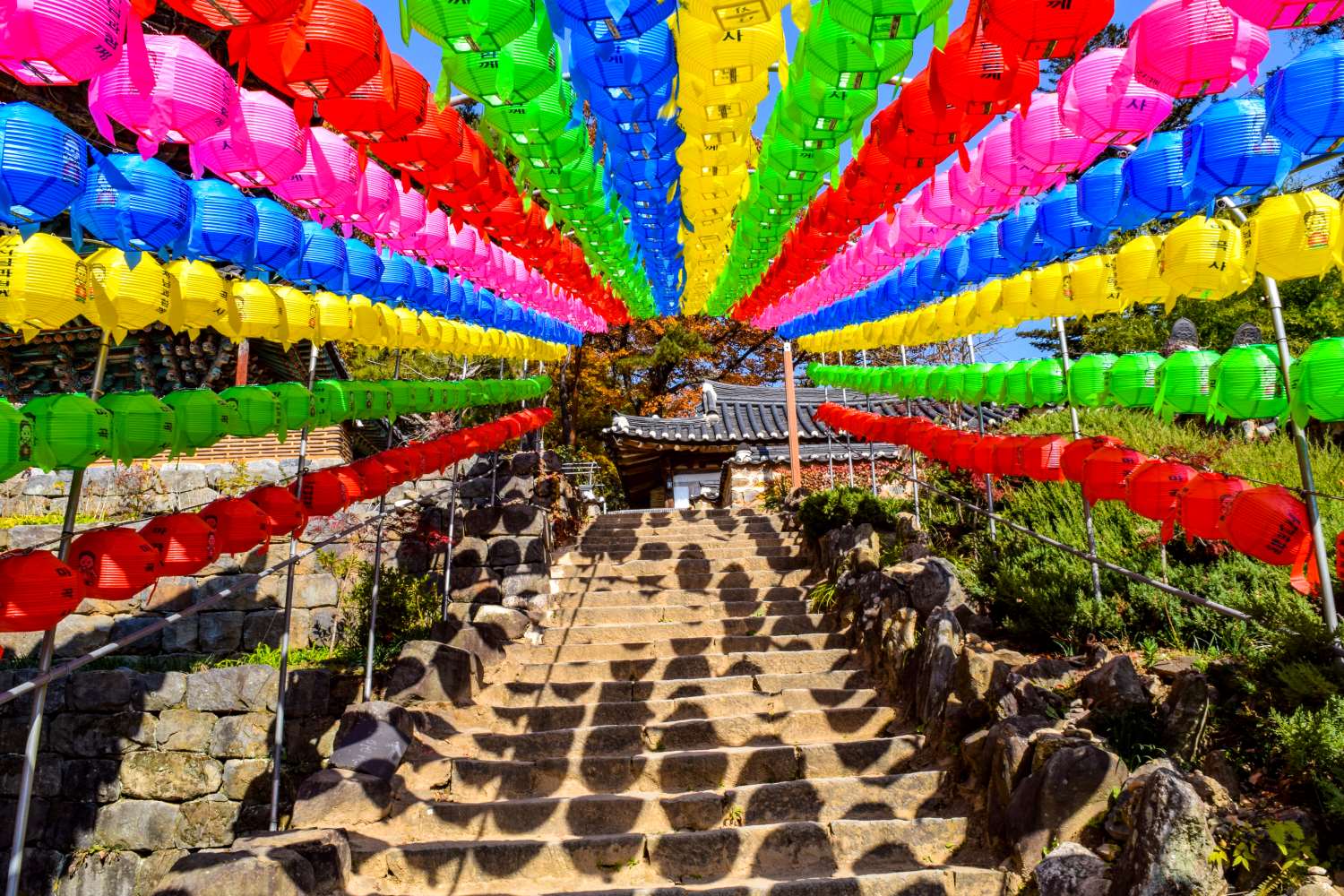
And for transparency’s sake, please know that some of the links in our content are affiliate links . That means that if you book your accommodation, buy your gear, or sort your insurance through our link, we earn a small commission (at no extra cost to you). That said, we only link to the gear we trust and never recommend services we don’t believe are up to scratch. Again, thank you!
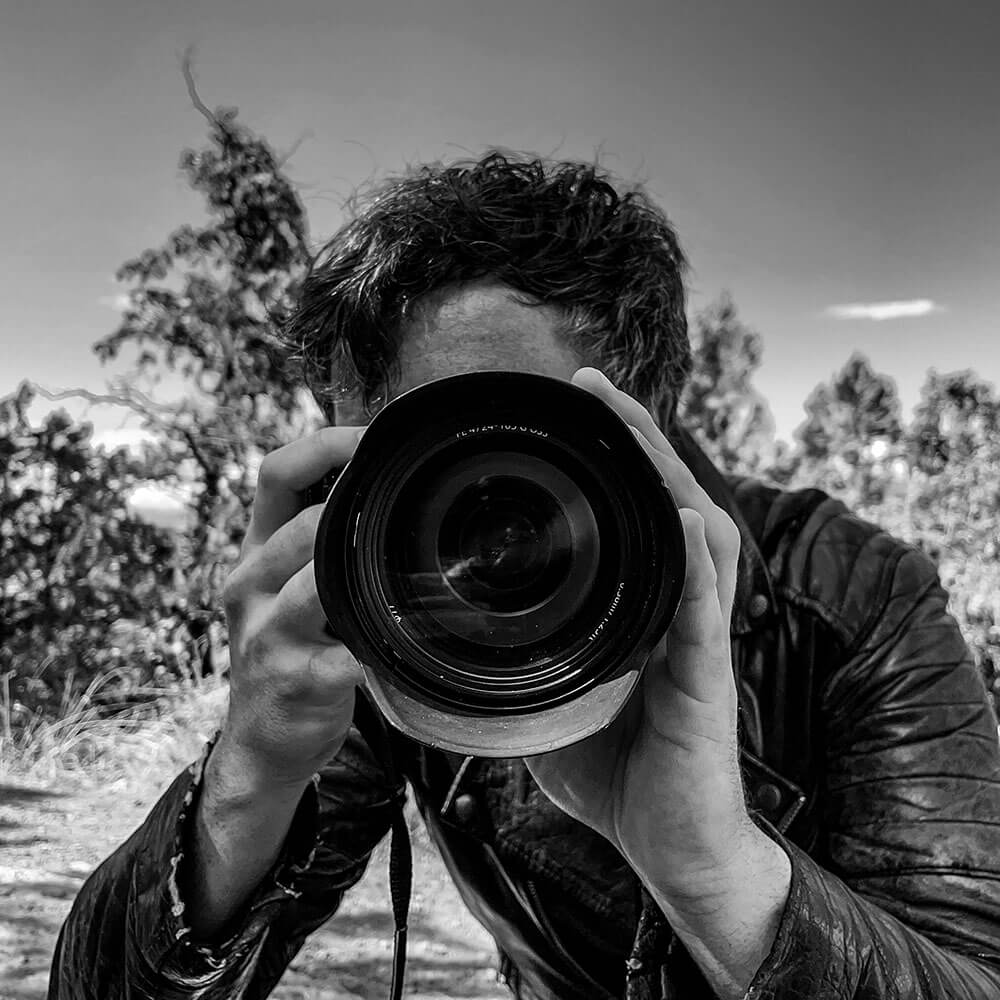
Nathan Jordan
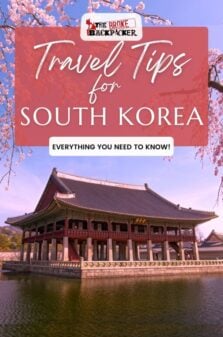
Share or save this post

Leave a Reply Cancel reply
Your email address will not be published. Required fields are marked *
Save my name, email, and website in this browser for the next time I comment.
Notify me of followup comments via e-mail.
How to get around Seoul
Feb 10, 2024 • 8 min read
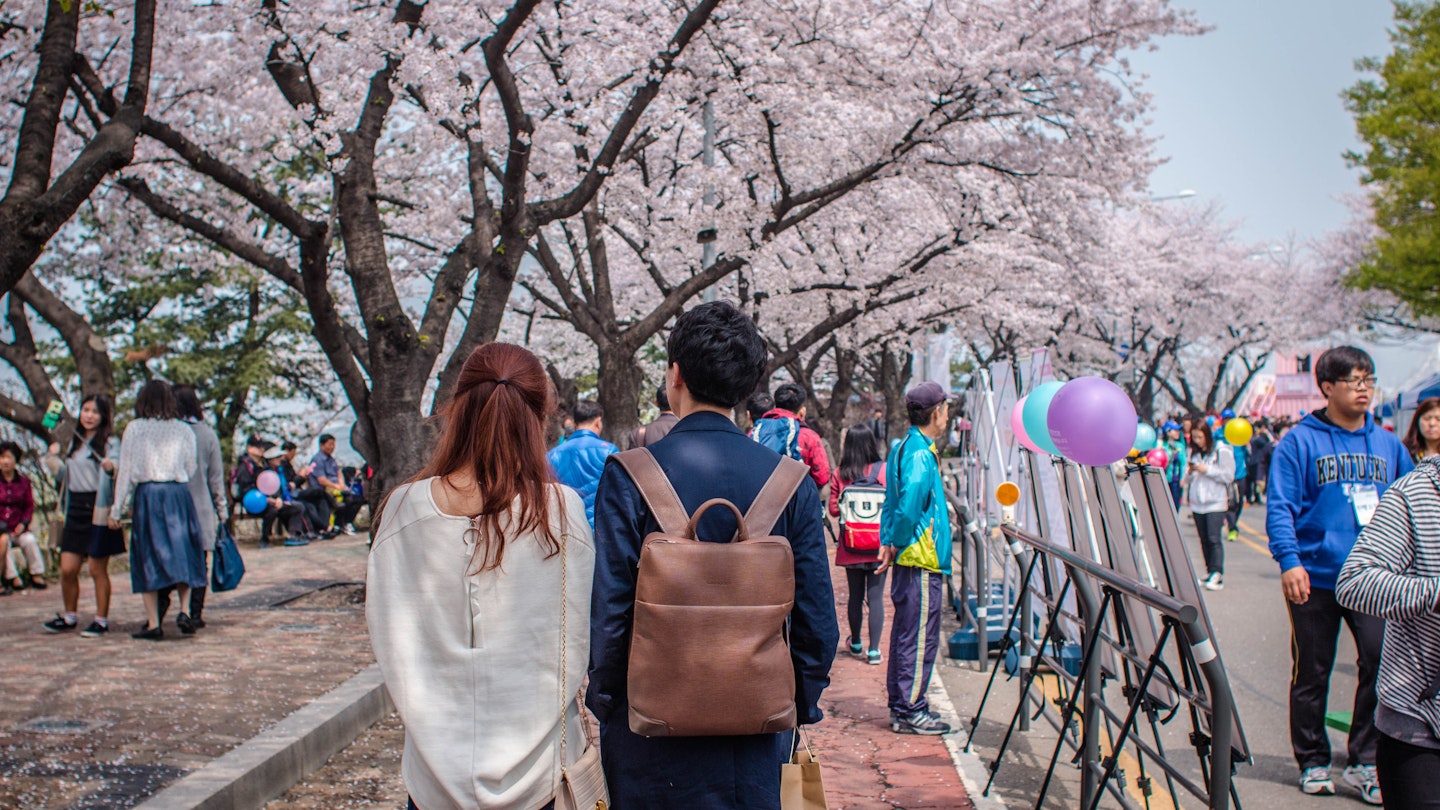
With efficient public transport and plenty of pedestrianized areas, Seoul is refreshingly easy to explore © Chalamkhav / Shutterstock
Seoul's public transport network is amongst the best in the world – clean, punctual and committed to accessibility – and getting around the capital of South Korea is now smoother than ever thanks to several smartphone apps that provide real-time information.
KakaoMap is available in English and can plan your journey from door to door, covering everything from when the next bus will come to the best train car to board, depending on where you're disembarking. And Seoul's subway trains and buses have free wi-fi, so you can keep track of your journey online, even without a SIM card.
From buses and bicycles to taxis and trains, here's the insider scoop on the best ways to get around Seoul .
A transport pass brings convenience and savings
Seoul's buses and trains are operated by several different companies, but you can pay for journeys with all operators with a transport pass . There are three to choose from: NAMANE, T-money and Cashbee.
You can get a physical NAMANE card from a kiosk at transport hubs or use a digital one via the app. Top it up and use it across public transport, as well as in some retailers. T-money and Cashbee cards can be purchased at convenience stores as well as transport hubs. Just top them up to use on any public transport and affiliated retailers – keep in mind that T-money is more widely accepted in stores than Cashbee.
It is possible to buy a single-ride ticket at the station each time or pay in cash on the bus, but transport cards can be used in taxis, subways and buses across the country, and T-money can be purchased in conjunction with other special deals for foreign tourists.
Because many of the cards have a special design or theme (such as pictures of K-pop group BTS), many people choose to keep the card as a souvenir, but they can be refunded for the original price at Incheon International Airport when you leave the country.

The metro is the fastest and most affordable way to get around Seoul
With 22 subway lines making 302 stops across the city, the Seoul Metro is a highly efficient way to get around the city. Download the Metro app for iPhone or Android , and you'll find the entire process quite straightforward. Each station has English-language signs, and stops are announced in Korean, English, Chinese and Japanese.
Fares start at ₩1400 per ride with a transport pass, and you're allowed up to four transfers to another subway line or bus for free within 30 minutes. Platform screens detail what metros are due to arrive and depart, and exit signs detail what major landmarks are next to each one.
If you're changing between one subway line and another, you generally don't tap out to make transfers. The subway tends to stop running from midnight to 5:30am, but times vary by line – check the app for your journey.
Know your subway etiquette
Etiquette is important on Seoul's subway. Most people line up outside the train doors and enter in an orderly manner. Train cars usually have reserved seats for the elderly, pregnant passengers and travelers with disabilities. Visitors sometimes use these seats when they are available, but it's considered good manners to leave these seats empty for those in need.
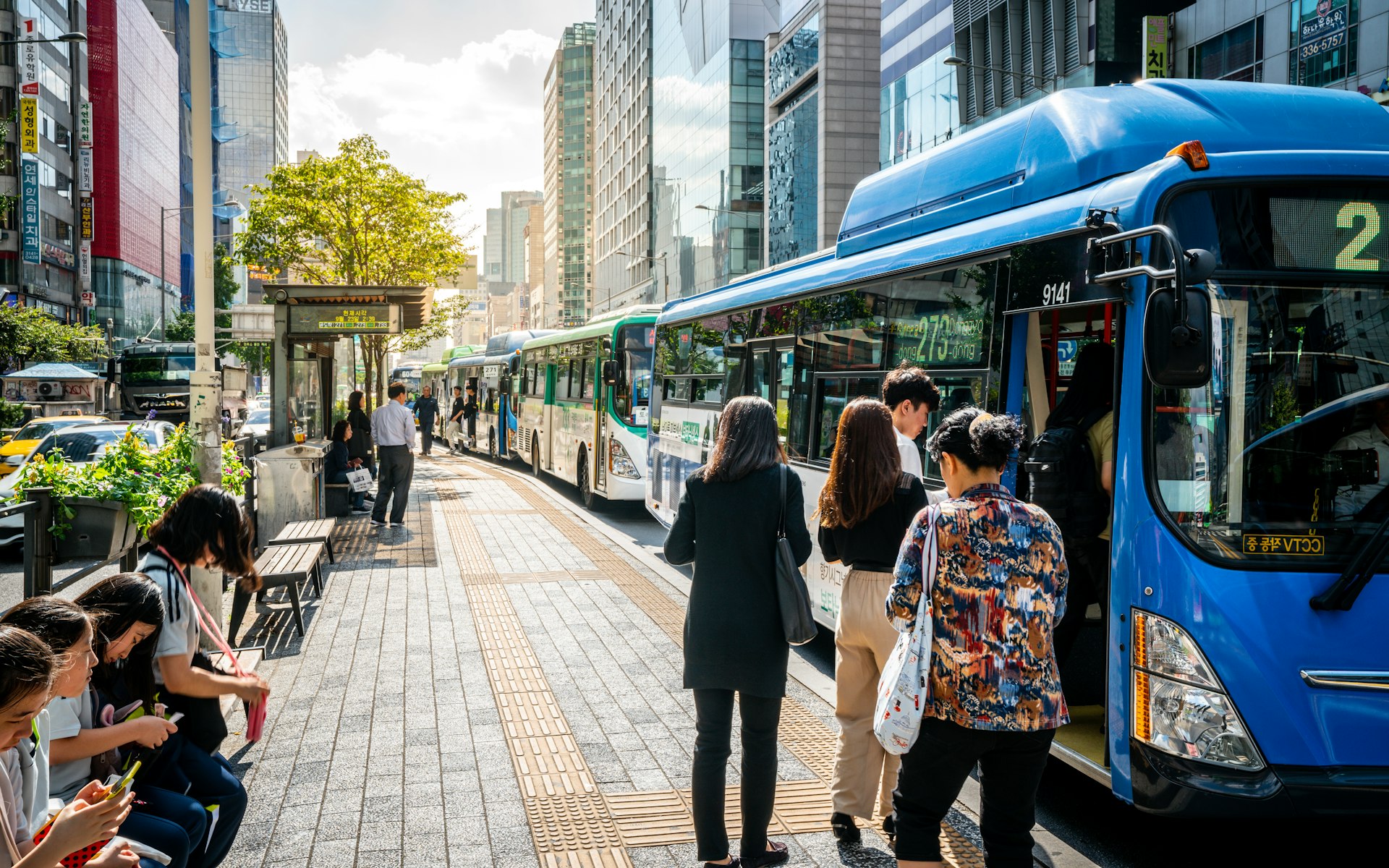
Seoul's buses can take you anywhere in the city
Buses may take a little longer than the metro, but they can be a great option if you're traveling to a more residential area or if your subway route requires more than one transfer.
Bus stops generally show routes in both Korean and English and have a digital screen that shows when the next bus arrives, as well as indicating how crowded the bus is. The seat availability signage is only in Korean, but the "comfortable" sign is usually white, the "average" sign is yellow, and the "busy" sign is red. Bus stop signs also give weather and air quality information, and some bus stops even have seats that warm up in colder weather.
Seoul has five types of buses that are color-coded to indicate their purpose. Green and blue buses cover cross-town routes, and an adult ticket costs ₩1500. The small green local buses known as maeul are about half the size of the regular green buses, and they stick to just one neighborhood or district – the fare is ₩1200. Red buses travel between Seoul and outer regions and cost ₩3000. The yellow buses, or circulator buses, loop around popular tourist destinations such as Namsan and Myeongdong and cost ₩1400.
You are allowed up to four transfers either to the subway or another bus for free within 30 minutes. Typically, you tap in at the front door when you enter the bus and tap out at the back door when you exit. Remember to tap out to secure your free transfers and discounts. The queuing system is pretty loose for the bus. During rush hour, passengers often enter through the back door or exit through the front door. However, some bus drivers frown upon this practice.
Night buses are indicated by an N before the number, and the fare is ₩2500. The etiquette of avoiding seats for the elderly, pregnant and travelers with disabilities does not apply like it does on the subway, but you'll be expected to give up your seat if someone needs it.
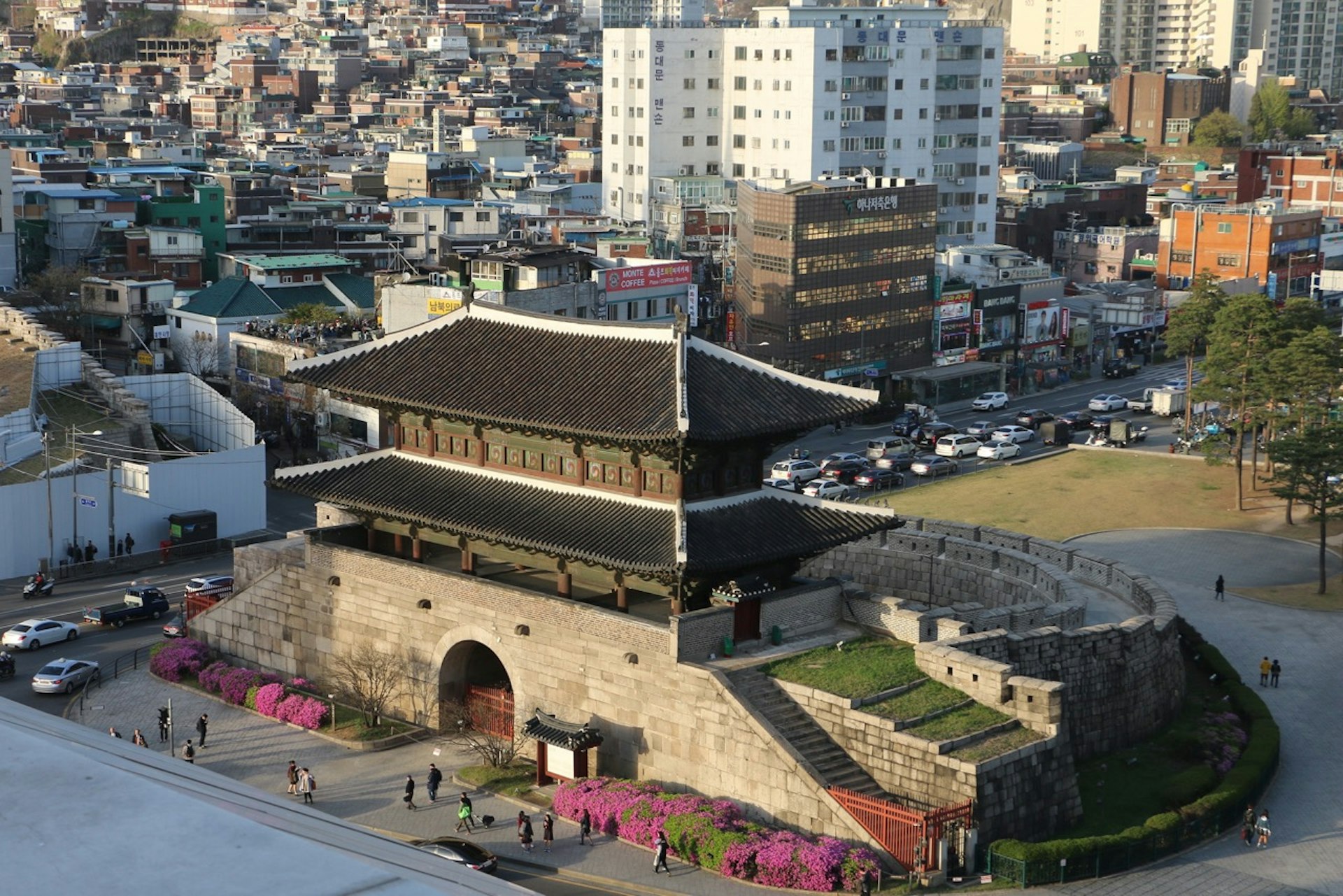
Hail a taxi for late-night journeys
Seoul cabs come in many different shapes and sizes; the most common are mid-size sedans in orange or silver that take a maximum of four passengers. Cabs charge a base fare of ₩4800, plus increments of ₩100 for every eighth of a mile – the incremental price increases a little between 10pm and 4am. You can pay with a credit card, cash or transport card.
Korean ride-hailing apps do exist, but you might need a valid Korean phone number to use them. If you have a local number, download Kakao T , a popular app that's available in English. Cabs operated by International Taxi Service can be booked on the website or via phone or email, but reservations are required 24 hours in advance. Otherwise, you can hail cabs on the street.
Even if you are confident in your ability to pronounce your destination, it's best to show a cab driver the name of your destination written in Korean because some places have similar names, such as Sinchon Station and Sincheon Station. If you need to explain your route in detail to your driver, you can call a free interpretation hotline – the number is usually indicated on a sticker on the window side of a cab, but if you don't see it, try using the BBB app – it's staffed by volunteers and available on both Apple and Android.
Be aware that many cab drivers are reluctant to take on short journeys and sometimes reject passengers for this reason. Locals often get in and shut the door before telling the driver which way they're going to get around this problem.
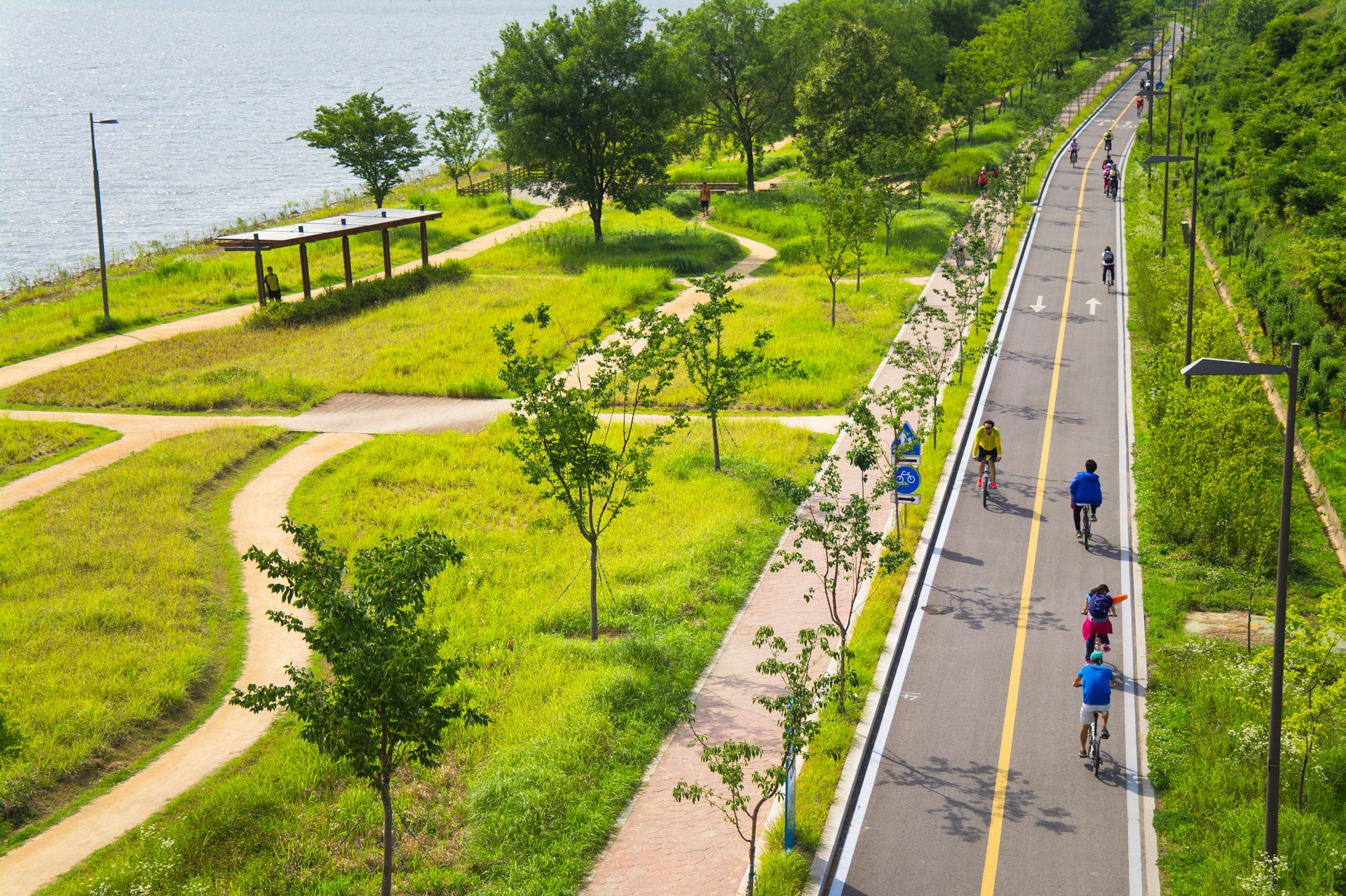
See the city up close on a bike
Seoul has a handful of bike-share schemes, but the best-known and most accessible to non-Koreans is Ttareungi, with its distinctive white and green bicycles. Visitors should create an account online and download the Seoul Bike app to use the system. You can purchase hourly, daily or yearly passes, and bicycles can be rented at one station and returned at another.
There are some useful dedicated cycle paths – including the Hangang River Cycling Trail , which follows the Han River right across the city – but many roads do not have a separate bike path, and cyclists often have to share the sidewalk with pedestrians. Cyclists are required to dismount and walk across pedestrian crosswalks – although this is not vigorously enforced, ignoring it may make you liable in the event of an accident.
Driving in Seoul is not recommended
Traffic in Seoul can be gridlocked, and parking is cutthroat, even by most city standards. Although you can rent a car with an international driver's license, we don't recommend it for a short-term visit.

Walking is often the best option
Seoul is an incredibly dense city, with shops, restaurants and cultural sights often packed tightly together, so you can see a lot more on foot. A walk of only 1.3km (0.9 miles) will take you from Gyeongbokgung Palace (the largest of the capital's five grand palaces) to Changdeokgung Palace (often considered the most beautiful of the five). Between these two sights, there are dozens of lesser-known attractions and cafes, such as the Arario Museum , Cafe Onion and Seoul Museum of Craft Art, that you'd miss if you took a cab, bus or train.
Accessible transportation in Seoul
With audio and visual information systems, elevators, Braille tiles, accessible turnstiles and bathrooms at almost all subway stations across the city, Seoul Metro is considered "mostly accessible" by organizations such as WheelchairTravel.org . If the elevators aren't working, approach an attendant at the station to help you with a wheelchair lift to the train platform. Priority seating is available for travelers with disabilities, and train cars with wheelchair spaces are marked with a large green wheelchair sign on the floor.
Priority seating is also available on all of Seoul's buses, almost all of which have a ramp or a floor that can be lowered for those with mobility needs. For more information about accessible sightseeing and calling wheelchair-accessible taxis, check out Seoul Danurim , an accessible travel organization. For more information on accessible travel, see Lonely Planet's free accessible travel resources .
This article was first published July 2022 and updated February 2024
Explore related stories
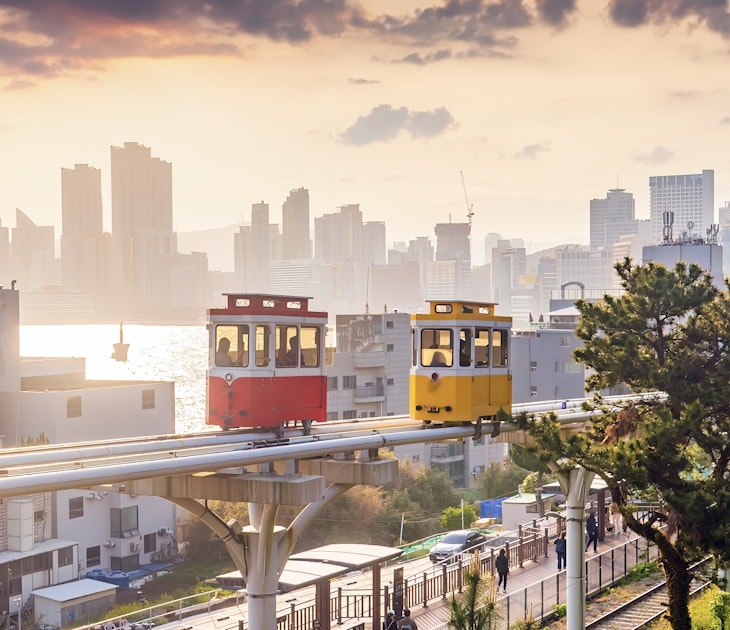
Destination Practicalities
Feb 18, 2024 • 10 min read
Before your trip to this cultural powerhouse, read our tips for planning, navigating etiquette, health and safety concerns and more.

Mar 28, 2024 • 7 min read

Feb 27, 2024 • 6 min read
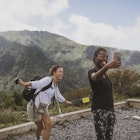
Feb 20, 2024 • 6 min read
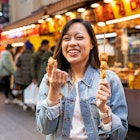
Feb 19, 2024 • 8 min read

Feb 18, 2024 • 4 min read
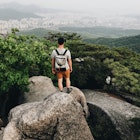
Feb 18, 2024 • 7 min read

Feb 17, 2024 • 10 min read
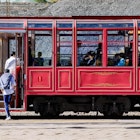
Feb 17, 2024 • 8 min read
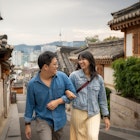
Feb 17, 2024 • 6 min read
KOREA ELECTRONIC TRAVEL AUTHORIZATION
What is the procedure for applying for a k-eta.
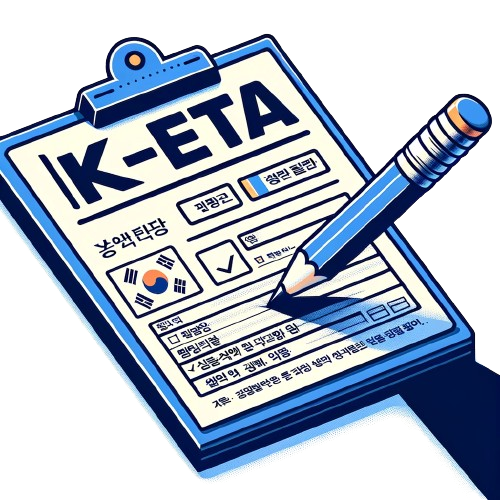
What is a K-ETA?
K-ETA also known as ‘Korean Electronic Travel Authorization’ was implemented by the government of South Korea in 2018 and is available to certain individuals holding eligible passports. This system became a mandatory entry requirement for visa-exempt foreign visitors on September 1, 2021.
Do I have to print my K-ETA document?
How long is my k-eta valid for.
The K-ETA document are for tourist, business or event stays, with a maximum stay of up to 3 months per entry. The validity of the document is 3 years or until your passport expires – whichever comes first. It allows multiple entries from the approval date shown on the document.
How long does it take to get my K-ETA approved?
Our experts manually review and correct your data before submitting it to the Korean Government.
For assistance, email our customer service in your native language.
Online chat is accessible from 9:00 am to 8:00 pm (CET).
Authorization is rapidly processed, often within a few hours.
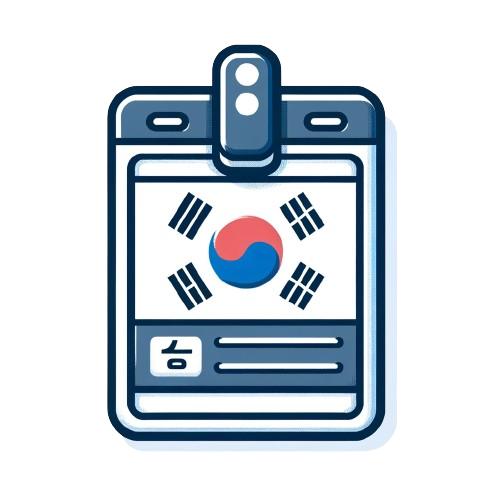
Protected credit/debit card payment for security.
Ensured privacy and secure form handling.
Our personnel handling your data are GDPR-trained.
Receive real-time email notifications.
Receive assistance if your permit faces queries prior to approval.
In the event of application rejection, a money-back guarantee is provided.
Which nations are eligible to apply for K-ETA?
Foreign nationals, from the list of countries below, are eligible to apply for the K-ETA program :

Every eligible foreign visitor must apply for a K-ETA before their arrival.
Your stay in South Korea must not surpass 90 days.
You should possess a valid passport that remains valid throughout your entire stay in South Korea.
The purpose of your trip must be clearly stated: tourism, transit, or business travel.
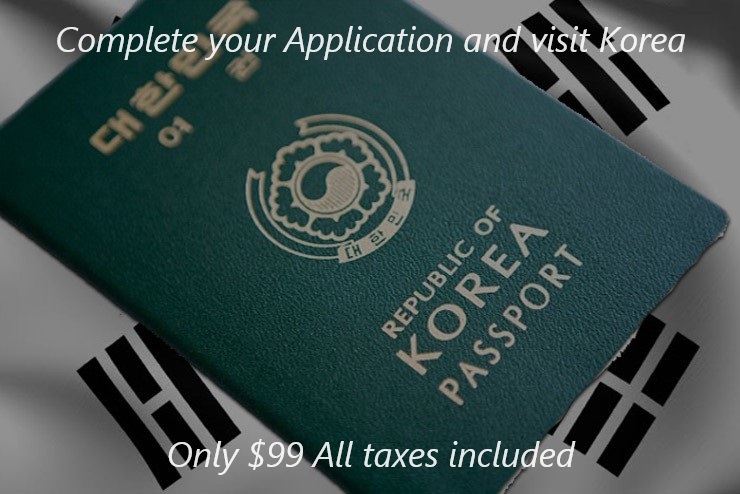
Common inquiries regarding the K-ETA application process
How can I verify the status of my K-ETA?
You can contact us anytime to verify the status of your K-ETA.
Does K-ETA also apply to minors and seniors to enter South Korea?
Travellers aged 17 and under, as well as seniors aged 65 and over, are no longer required to apply for a K-ETA. If they do not hold a K-ETA, they will need to fill out an Arrival Card. Although it may not be necessary, applying for a K-ETA for your child is recommended to make border crossing procedures quicker and smoother for everyone.
How do I go about submitting my K-ETA application online?
Click on the “Start Application” button. Fill out the form by entering your details in the required fields using a valid passport. Carefully review the information you’ve provided in your K-ETA application and proceed to payment. You will receive an email from us containing the confirmation of your Korean electronic travel authorization application.

Excellent offer

Time-saving solution

Help with reservations

24/7 support and information
Contact us for any inquiries or further information at: [email protected]
| Cookie Policy | Delivery Policy | Legal Notice | Privacy Policy | Refund Policy |
- Skip to main content
Trazy - Book Travel Crazy Things to do in Asia
Home carousel, book travel crazy things to do, 2024 korea spring trip finder, jeju island spring travel guide, [open sale 20% off] sbs inkigayo ticket package, the ultimate guide to korea wifi & sim card, the ultimate k-pop fun unveiled in 2024, revitalize yourself with trazy's k-beauty deals, hassle-free service for your life in korea, trazy features, trending now, easy to book, save up to 60%, transport & wi-fi, spring special, k-pop/k-drama, nami island special, theme parks, top destinations in korea, travel crazy recommendations.
2024 Coca-Cola K-Wave Concert Inkigayo Transfer Package (June 2) US$ 223.8 location Seoul view 1.2k
2024 BOF K-Pop Concert Tour Package (Jun 8) (+ Seoul/Busan Transfer Option) 4.65 ( 77 ) US$ 54.4 location Busan view 74.9k
N 2024 Baeksang Arts Awards Ticket Package (May 7) US$ 164 373.1 location Seoul
SBS Inkigayo (Popular Songs) & Seoul Tour Package Grand Opening Sale: 20% OFF US$ 164.1 205.2 location Seoul view 13.3k
Trazy Fun Things to Do in Korea
Must-join spring 1-day tours in korea.
Spring Special: Taean Tulip Festival & Strawberry Picking 1 Day Tour (Apr 12~May 7) 4.63 ( 90 ) Spring Special US$ 74.6 location Taean view 16.3k
Spring Special: Gapyeong Eden Cherry Blossom Road & Sheep Farm 1 Day Tour - from Seoul (Mar 28~Apr 21) Spring Special: 20% OFF (~Apr 19) US$ 38.2 47.7 location Gapyeong view 3.9k
Spring Special: Jeonju Hanok Village & Seasonal Attractions 1 Day Tour - from Seoul (Mar 18~May 31) Spring Special US$ 56.7 location Jeonju view 3.1k
Jeju 1 Day Tour with Lunch & Entrance Included (+Accommodation option) (East/West) 5 ( 2 ) Spring Sale: Up to 46% OFF (~Apr 30) US$ 59.6 111.9 location Jeju view 2.9k
Trazy Blog - Trending Now in Korea

Staying Connected During Your South Korea Trip
Traveling to South Korea with mobile devices makes it easier to share your travel story and, more importantly, keep in touch with friends and family back home. To ease the hassle, here are 6 solutions to help you better pick up what suits your needs when it comes to getting online in South Korea.
1. Bring Your Phone and Get a Prepaid SIM Card
Though the only inconvenience is informing your contacts of your new number, this remains a very economical way to use your own phone to surf the Internet or make calls in South Korea for a temporary stay. To make a local SIM card work, your device must satisfy these requirements:
- Be Unlocked/SIM-Free Before Coming
Many GSM phones have SIM lock or network lock built into by manufacturers to restrict their use of them to specific network providers. If you can’t make sure that your phone is unlocked, call your home service provider and let them know you need it to be SIM-free because you are traveling.
- SIM Card Slot Available
Very much like the reason for locking a phone, certain phones of unique versions using CDMA networks in the US and Canada don’t have SIM card slots.
- Support WCDMA 2100 MHz Frequencies
WCDMA (also referred to UTMS) is a third-generation (3G) technology used in most newer models of smartphones and all iPhones 3G and up. Find out more about your phone’s specifications at phonearena.com.
- Support Windows, Android and iOS
There are numerous types of SIM card providers in the Korean market. Based on reviews and experience I would personally recommend the EG (Evergreen) SIM card, which aims mostly at tourists and visitors so helpful English-speaking staff are always available.
Recommended to those who want to:
Use their own phone; stay connected all the time; share Internet connection with the hotspot of the phone to use a Wi-Fi-support tablet or other mobile devices.
How to get an EG SIM card:
To save the efforts of going through the registration process, it’s advised to purchase a prepaid SIM card online, then pick it up at the collection places in Incheon International Airport and Seoul City with your passport as well as a printed copy of your order confirmation email in case of wrong passport number.
A hybrid SIM charges 25,500 KRW (approx.21 USD) while a Nano SIM is 29,900 KRW (approx.24 USD) set to use for 30 days from the day of activation. With the SIM card value, which is 20,000 KRW, you are able to dial or check into Facebook after you have chosen a date plan as follows.
Note:
- EG SIM card is not transferable to others, according to the Telecommunication Business Act. Service will stop working when the user and device information is changed.
- Voice credit and data credit must have a certain amount of balance to use data.
- Balance is non-refundable nor will be carried forward to next month.
- Users can top up the SIM card online, through apps, or at local convenience stores. For longer use, you have to exchange for a long-term SIM card at the EG office in Seoul city.
2. Rent a portable Wi-Fi
It is true that South Korea is blanketed with free Wi-Fi, but if you want to have a guaranteed connection then a portal device would be the way to go. Any kind of pocket Wi-Fi router or pocket modem is called an "egg", which is pretty small in size and convenient to carry in your pocket. The cost of an egg remains inexpensive - some Wi-Fi renters claim that the price is cheaper than a cup of coffee. Depending on the specific version of eggs, battery hours vary from 5~9 hours on a single full charge, and normally 3~5 people can use an egg simultaneously, except that it will drain battery life quicker, thus a power bank would come in handy. WiFi Korea, Pocket WiFi Korea, KT WiFi router, and LTE router are the most popular eggs amongst travelers.
Recommended to those who:
Want a lot of daily data; have travel buddies to share the cost; stay longer than 20 days in South Korea.
How to rent a portable Wi-Fi:
Rent on the spot or make pre-booking online then collect the egg/return at a specific service counter located in major International airports, including those in Incheon and Busan, or demand a free delivery at the hotel when you process the booking.
From 5,900 KRW (5 USD)/day with or without some refundable deposit. In most cases, the longer you rent, the cheaper the cost is.
- Not every Wi-Fi provider accepts the return of the egg at hotels. Read through the conditions on how to drop off the device very carefully before confirming a booking.
- Eggs of lower rate may have a very poor connection outside the city center. Invest a bit more in eggs that have nationwide coverage.
- Connection issues may occur in a metro, an underground, and a bullet train.
3. Buy a prepaid Wi-Fi ID
The alternative to an egg is to buy a prepaid Wi-Fi ID: it’s cheaper and more flexible. Buy the account whenever you feel like using at convenience stores and ditch the receipt after your trip is finished. Olleh Wi-Fi hotspots can be found at shopping centers, attractions, universities and many other places across the country. To visualize the coverage, here is a map showing Olleh hotspot zones in Seoul city.
Look for temporary Wi-Fi access; stay in main city places.
How to use a prepaid Wi-Fi ID:
Buy at convenience stores such as 7-11, GS25, Buy the Way and CU, then connect your phone to the Wi-Fi provider and register through a web browser with the password on the card/receipt.
3 USD/day (including VAT).
4. Rent a local phone
If you want to skip all the trouble and don't mind using a second-hand phone, rent a smartphone from SK Telecom or KT Global Roaming. Itself a highly tech-savvy country, South Korea produces some of world’s best mobile phones, widely famous for their excellent call quality and convenient service. The two companies offer both feature phones and smartphones to meet different demands. For smartphones, daily rates offered by the two companies include free domestic incoming calls, call charges, SMS, and at least 1 GB of 3G data.
Recommend to those who: Need to have a high call usage at a lower cost.
How to rent a local phone: Rent instantly by visiting the service center located at the main airports or book online 3 days ahead. A passport is mandatory for collecting the phone.
Pricing: From 3,000 KRW/day, 10% VAT not included. Long-term use enjoys the benefit of discounted rental fees. Payment can be settled with cash or a major credit card when you return the phone.
5. Leech off of ubiquitous free Wi-Fi
Just as praised all the time, South Korea is not called the super-wired nation on earth for nothing. The moment when you land at Incheon Airport, you are well connected. In public areas, many telecom giants offer free Wi-Fi hotspots: SK, myLGnet, and Olleh, to name a few. Cafes, malls, accommodations, and buses are equipped with Wi-Fi, and everywhere you go, you are able to get online easily. Technically there would be no problem updating your travel path or chatting on instant message apps, but you will have very poor or zero connection in the countryside as it is out of coverage of free Wi-Fi. That said, I'd suggest picking up a SIM card beforehand if your itinerary includes a rural visit. Fancy hotels, however, are another story. Wired Internet access is available in the rooms, but there may be situations in which you have to pay for wireless access. It's not just happening in South Korea.
Recommend to those who:
Travel on a shoestring; occasionally need internet access; not have a cyber addiction.
How to get free Wi-Fi:
Literally every public area in the city.
FREE. Except for a small amount of money spent on some coffee, maybe.
6. Activate International roaming plan
Your phone or mobile devices must use 3G technology to roam in South Korea. This method tops the most expensive in terms of charge, according to many service providers in the US and Europe. There might be exceptions though.
are frequent international travelers with high budget; need to handle business on the go.
How to activate international roaming plan:
Ask your service provider for relevant plan and the best solution.
Take AT&T for example, from 2.5 USD/min per calls placed/received, 0.0195 USD/KB of data use.
Share and spread the ways to let people know how they can enjoy guaranteed connection in South Korea! You're welcome to contact us should you have any questions regarding South Korea travel or want to tailor-make an itinerary.
Quick Question

What Our Clients Say About Us

CONTACT A TRAVEL EXPERT
1-to-1 Service | Reply within 24hrs | Expert's Advice
Posts Update
Subscribe to win a free tour.
Subscribe to our newsletter for a chance to win a free 7-day Morocco tour! And more insider travel news, exclusive offers, and inspiration will be sent straight to your inbox.
South Korean Transit Visa
Passengers do not usually need a visa to transit through South Korea if they do not intend to leave the airport.
Entry permission is required for travelers who wish to pass through immigration and enter South Korea between connecting flights.
This page contains all the information passenger in transit through South Korea need, including:
- South Korea airport transit requirements
- South Korea K-ETA and visas for transit
30-day transit visa exemption
- Seoul organized transit tours
- Transit in Korea during COVID-19
Do I Need A South Korean Visa to Transit Through Korea?
Most passengers do not need a visa to transit in South Korean airports without passing through immigration.
No visa is required to transit through South Korea when departing:
- Within 24 hours for Incheon International Airport in Seoul
- On the same calendar day for all other airports
Travelers must stay in the transit area of the airport if they do not have a visa or visa waiver.
Nationalities that require a transit visa for Korea
Citizens of the following countries must hold a visa to transit through South Korea:
Passport holders from these countries must apply for a visa at a South Korea embassy to transit, even if they will not leave the airport.
Do I Need a South Korea Transit Visa to Leave the Airport?
Travelers must stay in the transit area of the airport if they do not have a visa or ETA.
A visa or travel authorization is required to:
- Leave the airport and visit South Korea
- Go through immigration to collect luggage
South Korean ETA for transit passengers
Passport holders from visa-exempt countries can enter South Korea with an ETA . This permit allows eligible citizens who meet the Korea entry requirements to visit Korea visa-free.
Travelers who wish to spend some time in South Korea in between flights, or need to collect luggage after immigration, should apply for a K-ETA.
With an approved K-ETA, passengers with a long wait between connecting flights can make the most of their time and visit the city.
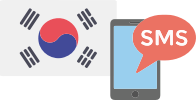
Apply for the K-ETA to enter South Korea between flights
K-ETA is now mandatory for visa waiver citizens to visit South Korea, passengers must complete an online application form with basic personal details and passport information.
Travelers receive the approved permit between 24h-48h. The same K-ETA can be used to enter South Korea multiple times during the 2-year validity period, or until the passport expires.
South Korea transit visa requirements
Transit passengers from non-visa exempt countries need a visa to pass through immigration and enter South Korea.
Visa applications are made at the South Korean embassy or consulate. Several supporting documents are required , an appointment must be made to present the paperwork in person.
There is a 30-day visa exemption for travelers who usually need a visa for South Korea provided they meet the following requirements .
They must have a visa or residence permit from one of the following countries:
- New Zealand
- The United States
They must be:
- Arriving directly from or departing directly to one of the above countries
- Arriving from one of the above countries after transiting in a 4th country for no more than 72 hours
- Departing to one of the above countries and transiting for no more than 72 hours in a 4th country
Passengers who believe they are eligible for visa-free transit should get confirmation and further information from an embassy of South Korea.
Citizens of the following countries are not eligible for this 30-day transit visa exemption:
- Afghanistan
- Bangladesh
- Kyrgyzstan
- North Macedonia
- Uzbekistan
South Korea Transit Tour Program
Transit tours are organized from Incheon International Airport in Seoul . Foreigners can take part provided they are:
- Eligible to enter South Korea
- Have a connecting flight to a third country within 24 hours
Different tours are available including shopping, temples, and business. Tours last 1 to 5 hours . The tours are free of charge however participants must pay any admission fees and meals.
A visa is not required to enter South Korea on an Incheon Airport organized tour.
Travels with Erica
A Solo Traveller's Guide to the World
The Ultimate Guide to Wifi in Korea for Tourists
This post may contain affiliate links. If you click on my affiliate link and purchase something (at no additional cost to you!), I may earn a small commission that helps me keep the blog running. Thank you so much for your support!
South Korea is quickly becoming a more and more popular destination for tourists (and rightfully so because it is an amazing country). One of the things I Googled in advance of my first trip were things like “wifi in Korea”, “is there free public wifi in Korea”, “pocket wifi Korea”, and on and on.
I got a lot of conflicting information, and a lot of the information I got wasn’t super accurate.
I didn’t end up renting a pocket wifi the first time I went to Korea, and I quickly regretted it.
But just because I regretted not renting a wifi egg in Korea doesn’t mean that you will too.
This post will walk you through everything you need to know about wifi in Korea, so you can make an informed decision that works best for you and your travel style.
By the end of this post, you’ll have a better idea of whether you want to rent a pocket wifi in Korea or not.
I’m also going to discuss one of my favourite travel gadgets in case you’re looking for an alternative to renting pocket wifi in Korea and relying on public wifi in Korea.
I’ll discuss it more at the end of this post, but it is absolutely essential that you use a VPN when accessing public wifi or using a pocket wifi device.
I rely on Nord VPN to protect my devices from prying eyes, and I highly recommend you use it as well!
They normally have amazing sales, so it is extremely affordable!
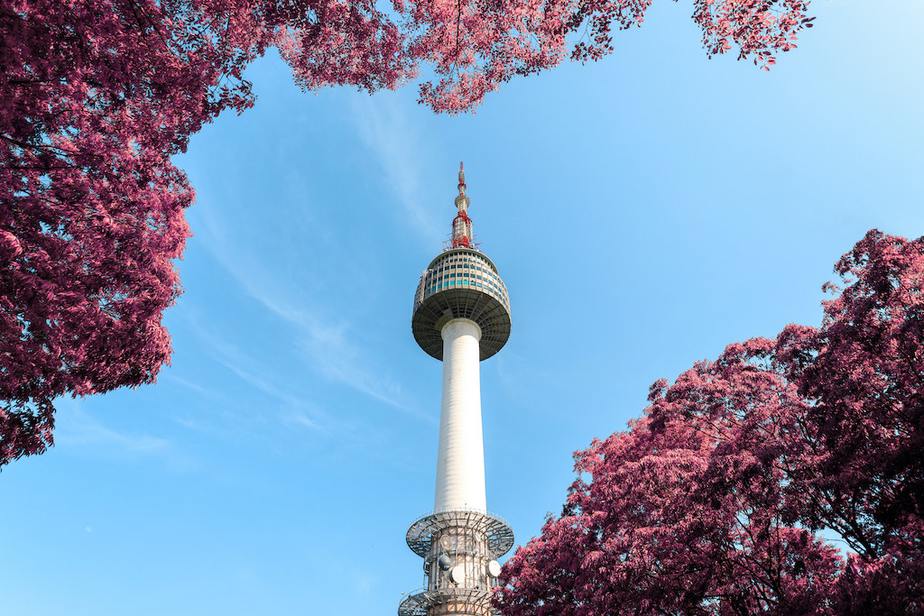
Public Wifi in South Korea
When I planned my first trip to South Korea in 2017, I read a ton of blog posts that said that there was oodles of public wifi all over Korea.
These posts made it seem like I could get free public wifi anywhere and everywhere I went. It sounded like an absolute dream for travellers!
Unfortunately, those blog posts over exaggerated the reach of public wifi in South Korea, and you aren’t able to get nearly as much free public wifi in Korea as they lead me to believe.
In reality, public wifi in Korea is pretty much on par with other countries around the world.
You can most often get free public wifi in cafes, many restaurants, some museums and tourist attractions, and, of course, your hotel or apartment.
But beyond those common places, free public wifi isn’t all that widely available in South Korea.
It definitely isn’t like Taiwan where there is an entire network of free public wifi that you can connect to basically wherever you are.
Table of Contents
Tips for Using Public Wifi in Korea
- Download your maps or screenshot any addresses you need, so you have them offline and don’t have to stress if you don’t have access to public wifi
- You can use Google Translate offline so be sure it is downloaded on your phone. Google Translate used to be horrible offline, but they’ve made improvements. It is much better now than it used to be, but it isn’t perfect.
- Pop into a cafe to get quick and easy access to free public wifi in South Korea. Korea has an amazing coffee and cafe culture, so be sure to grab a drink while you’re in there. I’m a sucker for a matcha latte!
- Use a VPN! Public wifi networks aren’t super safe, and they put you at risk of being hacked. A VPN (Virtual Private Network) helps keep your data safe and secure when you’re on public wifi. I love Nord VPN . They often run 70% off deals, so they’re super affordable too!

Renting Pocket Wifi in South Korea
If you want to have more consistent access to wifi than relying on public wifi, renting a pocket wifi (otherwise known as a wifi egg) is the perfect solution.
I’m always blown away at how affordable renting a pocket wifi in Korea is.
I rented a pocket wifi in Korea for two weeks, and it cost me less than $35USD! It is such a deal and well worth the convenience of having access to wifi no matter where you are.
I always book my pocket wifi in Korea through Klook .
It is super affordable, easy to get the pocket wifi device, and Klook is very reputable and reliable.
Where to Pick Up and Drop Off Pocket Wifi in South Korea
Picking up location.
Most pocket wifi rental companies in Korea use Incheon International Airport as the pick up location.
There are pick up locations in both Terminal 1 and Terminal 2, so you can get your pocket wifi easily no matter what terminal you land in!
The pocket wifi pick up locations are located outside of security.
You need to go through customs and immigration and exit the secure part of the airport before you can collect your pocket wifi.
The pick up location is super easy to find. It is basically straight ahead once you exit the secure area and is near the main exit doors.
Pick Up Process
The best thing about renting pocket wifi in Korea is that the pick up and drop off process is incredibly easy.
Like way easier than I ever imagined.
Here are the steps you need to take to collect your pocket wifi in Korea:
- Show the person at the pocket wifi desk your reservation code (a screenshot works just fine)
- Confirm that dates you are renting the pocket wifi
- Fill out a few forms (basically if you lose the wifi egg, you’re on the hook for replacing it)
- Write down the cities you’ll be using the pocket wifi in (no need for dates you’re in each city)
- Give them your credit card. They will put a small charge on your credit card to confirm there is space on it and then immediately reverse the charge. This ensures the credit card they have on file works in case you lose or ruin the wifi egg.
- Test the wifi device with the employees
- Tell them where you’re dropping your pocket wifi off at
- Thank them for their help and head into Seoul!
I know that seems like a lot of steps, but it isn’t.
The entire process takes about five minutes!

Drop Off Location
There are a number of drop off locations you can choose from.
This is perfect for people who are travelling all around South Korea and aren’t departing from Incheon International Airport!
You can drop your wifi egg off at any of the following locations:
- Incheon International Airport (Terminal 1 or Terminal 2)
- Gimpo Airport
- Busan Gimhae International Airport
- Busan Harbour
Being able to return your pocket wifi device at both Seoul airports, the Busan airport, and the harbour is incredible and super convenient.
Last time I rented a wifi egg in Korea, I picked it up at Incheon and returned it to Gimhae and had no issue with picking up and returning my device at different locations.
Drop Off Procedure
I wasn’t sure what to expect when returning my pocket wifi in Korea because it was first time renting pocket wifi anywhere.
The return procedure was even quicker and smoother than the pick up process!
Here are the steps you need to take to return your pocket wifi in Korea:
- Go to the pocket wifi company’s booth
- Tell them you’re returning your device and give it to them
- They will scan the code on your pocket wifi
- If you kept the wifi egg longer than you pre-paid for, pay for the extra days
- Say goodbye and thank them for their help
Yes. It really is that easy!
It takes less than a minute assuming you don’t need to pay for extra days and didn’t damage the device.
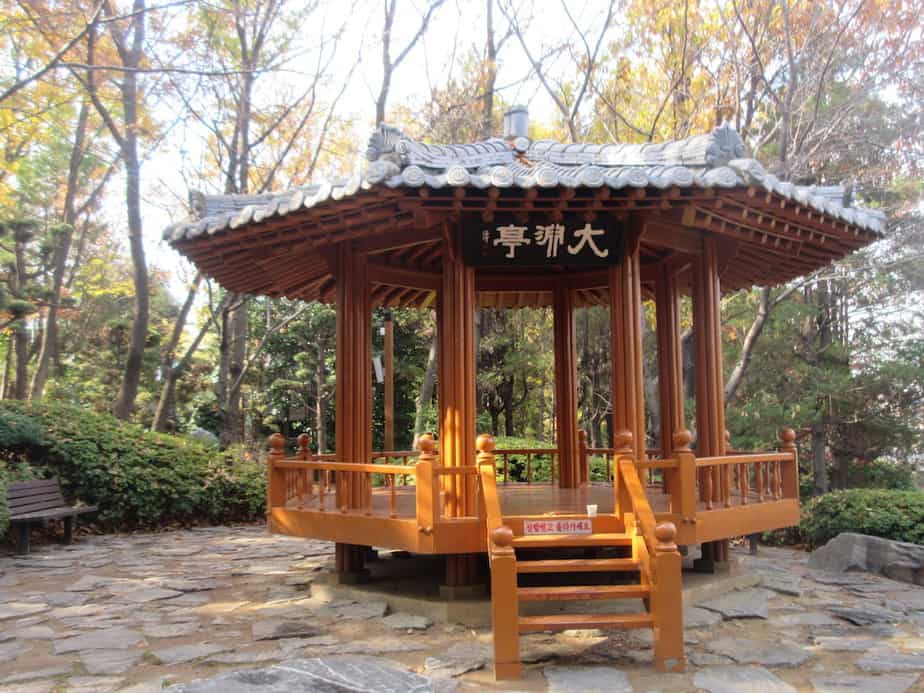
Other Things to Know When Renting Pocket Wifi in Korea
You can only rent a wifi egg in korea if you have a credit card.
You’re not able to rent a wifi egg in Korea if you only have a debit card or a debit credit card.
You need a traditional credit card or charge card to rent pocket wifi in Korea.
This is because the pocket wifi companies test to make sure there is space on your credit card before they let you leave with it. They do this to ensure they will be able to recoup their money the event you lose or damage the wifi device.
It is essentially an insurance mechanism for them.
You can book your pocket wifi and pre-pay for it using a debit card or a credit debit card, but you must have a traditional credit card when you show up in South Korea to collect your pocket wifi rental.
If you don’t have a traditional credit card, you cannot rent a pocket wifi device in Korea (unfortunately).
Side note: it is always wise to book travel on a credit card rather than a debit card. Most credit cards come with some travel insurance, and it is easier to get your money back if something is cancelled through your credit card than your debit card.
You can connect multiple devices to one wifi egg
One of my favourite features of pocket wifi devices is that you can connect multiple devices to a single wifi egg.
This is perfect for families or friends travelling together.
You can connect anywhere between 3 and 10 devices to a single wifi egg. The number of devices you can connect depends on the wifi egg itself, but the website you book your pocket wifi through should include that information.
I believe most wifi egg companies in South Korea allow you to connect up to 3 devices, but you should confirm that when booking.
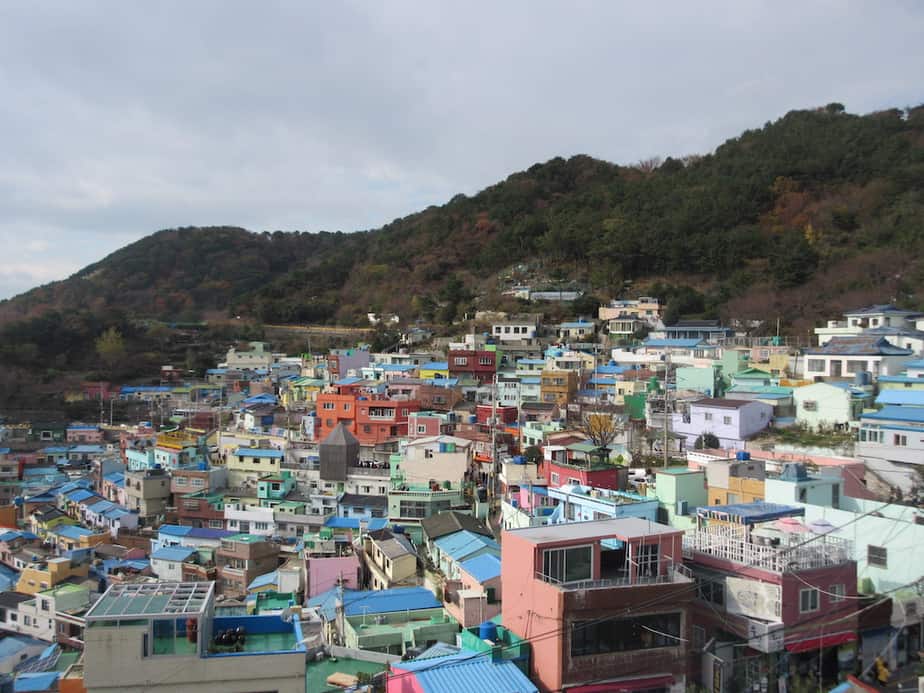
The charge lasts a surprisingly long time
I was blown away by how long the charge on the pocket wifi device I rented in Korea lasted. I had used a wifi egg in Japan that was included in my Airbnb rental, and its charge barely lasted for the 6 or 7 hours I was out exploring Tokyo.
The wifi egg in Korea, on the other hand, lasted for upwards of two days!
I was in the habit of charging it every night, but there were a number of times where I forgot to charge it.
Even if I forgot to charge it, the wifi egg would last me the entire day.
That means the wifi egg had enough charge to last me the first day I used it, all night, and then the entire next day without having to be charged.
That is mind blowing .
I was travelling alone and only had my phone connected to the wifi egg, so the device may lose battery quicker if there are more devices connected to it.
I’m not sure if that is the case or not, but it is something to keep in mind!
Would I Recommend Renting Pocket Wifi in Korea?
Yes. 100% without a doubt.
Having access to wifi no matter where you are adds so much to your experience in South Korea.
It makes so many experiences more accessible.
- You can eat at local restaurants that don’t have an English menu (gotta love Google Translate!)
- It is easier to use public transportation because you don’t have to rely on their English translations (if there are any)
- You can use Google Translate to have a conversation with a local who might not speak English
- If you’re travelling from city to city, it makes your train/bus ride go by way quicker
- Easily find out what attractions are near you and how to get to them
- Update social media throughout the day

Having access to wifi is such a luxury, and I certainly don’t take it for granted!
The fact that pocket wifi in South Korea works so well and is so affordable makes it a no-brainer for me.
I always find that I have a much deeper experience with a country when I have access to wifi everywhere. I’m not held back by not being able to speak the local language and can be more spontaneous because I know I won’t get lost (I really owe a debt to Google Maps for keeping me safe).
Pocket Wifi for Frequent Travellers
There is one final option, but it is only for the most serious of travellers.
You can purchase your own pocket wifi device through Skyroam .
I purchased my Skyroam in 2019 after much deliberation and absolutely adore it. I take it on all my travels, and it has made my trips so much smoother and free.
Buying a Skyroam device (I have the Solaris) is an investment. It is not cheap, but if you travel a fair amount and want to have access to wifi anywhere, it is the best solution.
Even though the device itself isn’t inexpensive, the wifi plans themselves are really flexible. You can find a wifi plan that works for you and your travel style!
You can pay for wifi on a day-to-day basis, on a monthly basis, or based on the amount of wifi you use.
I buy day passes for my Skyroam if I’m on a shorter trip or monthly passes if I’m on an extended trip.
One of the best parts of Skyroam is that they often run sales, and you can get a bunch of day passes for a fraction of their normal price.
I personally think the regular price for the day passes is a bit steep, but I’ve never had to pay full price for one.
You often know when you’ll be travelling in advance, so you can easily wait until there is a wifi sale and pick up some discounted day passes to cover your for your entire trip.
You can also rent a Skyroam just like any other pocket wifi rental company, but I don’t think it is as good of value as renting wifi in Korea through a local company.

Skyroam Pros
- Access to reliable internet wherever whenever
- Can connect up to 10 devices
- Easy to use app that show how long you have left on your day pass, how many day passes or credits you have, the ability to track what countries you’ve been to, and the ability to purchase credits directly in the app
- Has a built-in camera you can remotely operate with the Skyroam app. This is great for solo travellers like me!
- Flexible plans, so you only pay for the wifi you need
- I probably shouldn’t tell you this, but I’ve had success in lending my Skyroam to another person. They simply download the app, enter my login information, and use it as if they were me (using my credits). This probably isn’t the most ethical thing to do, but it nice to be able to do it if you have a friend or family member travelling when you’re not using it
Skyroam Cons
- It is a financial investment. You definitely have to think about whether you’ll get your money’s worth out of it or not
- The charge doesn’t last as long as I would like. I have to charge it every night. It isn’t a big deal, but if I forget one night, then it is dead in the morning
You Need a VPN!
The last thing I want to discuss when it comes to wifi in Korea is the fact that you need a VPN.
This is non-negotiable!
A VPN (a.k.a. Virtual Private Network) gives you the protection you need when you’re using public wifi or a rented pocket wifi device.
No matter where in the world you are, there are always people looking to hack into devices that are connected to public wifi.
And as a traveller, you’re pretty reliant on public wifi and are putting yourself at risk of being hacked if you’re not using a VPN to hide your internet activity from prying eyes.
Rented pocket wifi devices are less likely to be hacked, but there is still a risk there.

I always travel with a VPN on all of my devices.
Cell phone, tablet, laptop. They’re all at risk when connected to public wifi.
Even at hotels!
It is actually pretty scary once you learn about hacking and how common it is!
I’ve tried three or four VPNs, so I have a fair amount of experience about which VPNs are quality and which ones underperform.
I love Nord VPN ! I’ve been using them for ages and don’t plan on switching anytime soon.
The best part about Nord VPN i s that they often run sales where you get 70% off if you purchase a multi-year subscription.
It literally costs less than $50 to protect your data for an entire year!
And you can connect multiple devices with the same license, so there is no excuse not to protect yourself online!

As you can tell, there are a few different options in terms of accessing wifi in Korea.
If you’re on a super tight budget, don’t use the internet much, or have a great sense of direction, then you may be alright using public wifi in Korea.
That’s what I did on my first trip to Seoul. It worked out pretty well for the most part.
The only times I really needed wifi and had to use my phone’s data plan was when I was meeting up with my local friend, and she didn’t turn up at the metro station (a mix up on what exit she would be at) and when I got off on the wrong metro station on my way home from a baseball game (a must-do activity if you’re going to be in Korea during baseball season).
Those two instances did cost my more than $50 in data charges though, so I would have been way better off renting a wifi egg.
For most people visiting Korea, I think the best option is renting pocket wifi. It is super affordable, easy to use, and gives you the freedom to use the internet as much as you want wherever you are.
If you’re a frequent traveller like me and loath the hassle of getting a local SIM card in every new country you visit but still want access to wifi constantly, then Skyroam might be the right option for you.
I love my Skyroam and am extremely happy that I purchased it. It is without a doubt on the best travel gadgets I’ve ever bought.
No matter what wifi option you choose while in South Korea, you’re going to have an amazing trip.
Korea is full of some of the most beautiful places I’ve ever seen, amazing food, and incredible people.
It is one of my favourite countries in the world, and no matter how many times I visit, I keep itching to go back as soon as possible.

Related Posts
- A Guide to Gyeongbokgung Palace
- 5 Free Things to do in Seoul, South Korea
- How to Travel from Busan to Daegu (The Easy Way!)

South Korea
Travel guide.
- Things to Do
- Things to See
- Health & Insurance
- Visitor Information
- Entry Requirements & Customs
- Getting Around
- Tips on Accommodations
- Calendar of Events
- Sustainable Travel & Ecotourism
- Getting There
- Escorted & Package Tours
- Tips for Families
- Tips for Gay and Lesbian Travelers
- Tips for Senior Travelers
- Tips for Student Travelers
- Tips for Travelers with Disabilities
- Tips for Women Travelers
- Tips for Black Travelers
- Tips for Vegetarian Travelers
- Staying Connected
- Suggested Itineraries
Staying Connected in South Korea
The three letters that define much of the world's wireless capabilities are GSM (Global System for Mobile Communications). In the U.S., T-Mobile and AT&T Wireless use this quasi-universal system; in Canada, Microcell and some Rogers customers are GSM, and all Europeans and most Australians use GSM. Unfortunately, South Korean cellphone carriers use a different, highly specialized system, called CDMA, which is not compatible with GSM technology. Of special note, South Korea just began sales of iPhones at the end of 2009, and there are high hopes that compatibility issues will be diminished with incoming foreign phones.
For now, if you have a GSM mobile phone, you can rent a "SIM-compatible" handset from KTF and insert your phone's SIM card into the rental phone. KTF will charge you a cheaper rental fee (W1,300) per day and you'll be billed any roaming charges directly from your home cellphone carrier.
Call your wireless operator and ask to get the code to "unlock" your phone and to activate international roaming on your account. Some American and Canadian cellphone companies offer a loaner phone that has CDMA technology. Note that international roaming charges can be exorbitant, from $1 to $5 per minute.
For many, renting a phone is a better option. North Americans can rent one before leaving home from InTouch USA (tel. 800/872-7626; www.intouchglobal.com) or RoadPost (tel. 888/290-1606 or 905/272-5665; www.roadpost.com). For advice on whether your phone will work overseas, call InTouch at tel. 703/222-7161 from 9am to 4pm EST, or go to http://intouchglobal.com/travel.htm.
Two companies rent cellphones in South Korea. For both, you must reserve online (http://english.tour2korea.com) before you arrive. South Korea manufactures some of the best cellphones in the world and you will be amazed at the clarity of the calls and the availability of service around the country.
SK Telecom has a customer center at Incheon Airport (tel. 02/1566-2011; 24 hr.) on the first floor of the passenger terminal between exits 6 and 7. They also have a location at the Gimpo Airport (tel. 02/1566-2011; daily 7am-11pm) on the first floor of the international terminal on the opposite side of the arrival gates. Their location at Busan's Gimhae Airport (tel. 02/1566-2011; daily 7am-9:30pm) is on the first floor of the international terminal, across from the departure gates. You need to provide a credit card for deposit and your fee will be due when you return the phone, which you can do at any of the SK Telecom's three airport locations.
You can also rent a mobile phone from KTF Global Roaming Centers, which has more locations than SK Telecom. At Incheon Airport (tel. 02/2190-1180; 24 hr.), they're on the first floor of the passenger terminal between exits 10 and 11. At Busan's Gimhae Airport (tel. 02/2190-1180; daily 9am-9pm), you can find them on the first floor of the arrival hall, right next to the information desk. They also have a location at Busan International Port (tel. 02/1588-0608; daily 7am-7pm) on the first floor, near the check-in counter. In Jeju City, they have an office at Jeju KTF Members Plaza (on the first floor of Sung Woo B/D, Leedo-2-dong, Jeju City; tel. 064/711-8016; weekdays 9am-6pm, closed holidays). Their Gwangju Airport location (tel. 064/1588-0608; daily 7am-8pm) is on the second floor, near the departure gates.
Phones from either company cost W3,000 per day to rent (W2,000 if you sign up as a T2K member for free at http://english.visitkorea.or.kr). Domestic calls cost W100 per 10 seconds and international rates vary. All fees do not include the 10% VAT.
Buying a phone can be economically attractive, as many nations have cheap prepaid phone systems. Once you arrive at your destination, stop by a local cellphone shop and get the cheapest package; you'll probably pay less than W100 for a phone and a starter calling card. Local calls may be as low as W30 per minute.
Internet/E-Mail
Without Your Own Computer -- Internet service is offered in public places such as airports, train stations, and bus terminals in South Korea. PC bahngs (PC rooms), where you can rent an Internet-connected PC, usually populated by gaming enthusiasts (that is, young, nerdy males), and Internet cafes are easy to find throughout the country. Many PC bahngs are open 24 hours and some have snack bars that offer beverages, noodles, and other food. Just look for the letters PC around town. Most of them are on higher floors in commercial buildings.
Many love motels, especially in metropolitan areas, offer high-speed Internet access with an in-room computer. Just be sure to ask for an Internet room when you check in.
To find cybercafes in your destination, check www.cybercafe.com and www.world66.com/netcafeguide .
With Your Own Computer -- South Korea's Internet connectivity is legendary as it leads the world in Wi-Fi (wireless fidelity) hot spots. However, the plethora of hot spots doesn't mean that they're friendly to travelers. Many high-end hotels, resorts, airports, cafes, and retailers offer free high-speed Wi-Fi access or charge a small fee for usage. Most laptops sold today have built-in wireless capability. To find public Wi-Fi hot spots at your destination, go to www.jiwire.com ; its Hotspot Finder holds the world's largest directory of public wireless hot spots. Since the majority of Wi-Fi hot spots are owned by previously government-controlled Korea Telecom (KT), it's best to get a prepaid Wi-Fi card, available at the KT Plaza at Incheon Airport (in the middle of the second floor; daily 7am-8pm). Prepaid cards come in W3,000 and W12,000 denominations and expire after a few months. The former is good for 60 minutes of access within a 24-hour period, while the latter allows unlimited access. For dial-up access, most business-class hotels throughout the world offer dataports for laptop modems, and most hotels in South Korea offer free or low-cost, high-speed Internet access.
Bring a connection kit of the right power and phone adapters, a spare phone cord, and a spare Ethernet network cable -- or find out if your hotel supplies them. Most of South Korea is on a 220-volt, 60-cycle system (the plugs with two round prongs), but a few major hotels have 110-volt, 60-cycle systems. Be sure you have the right adapter before plugging in your computer. The universal adapter is virtually impossible to find once you're in South Korea, but they may have some at E-Mart (Korea's Wal-Mart) or the Electronic Market.
The South Korean government censors certain types of websites, including pornography and political sites. Generally, though, you shouldn't have any trouble accessing content online.
To call South Korea:
1. Dial the international access code: 011 from the U.S.; 00 from the U.K., Ireland, or New Zealand; or 0011 from Australia.
2. Dial the country code 82.
3. Dial the city code (2 for Seoul, 51 for Busan) and then the number.
For example, if you are calling KTO Tourist Information Center in Seoul from the U.K., you would dial 00-82-2-729-9497. Phone numbers in South Korea are either seven or eight digits long (not including the area code).
To make international calls: First dial 001, 002, or 008 and then the country code (U.S. or Canada 1, U.K. 44, Ireland 353, Australia 61, New Zealand 64). Next, dial the area code and number. For example, if you wanted to call the British Embassy in Washington, D.C., you would dial 001-1-202-588-7800. The numbers to dial out for mobile phone carriers vary (for example, 00345, 00365, 00388, 00700, 00727, 00766, and 00770). If you're renting a Korean cellphone, find out the international dialing number from your mobile phone company.
For directory assistance: Dial tel. 114 if you're looking for a number inside the country (tel. 0077 for an international operator). You can also call the Korea Travel Phone (tel. 1330).
For operator assistance: If you need operator assistance, dial tel. 0077 if you're trying to make an international call and tel. 114 if you want to call a number in South Korea.
Toll-free numbers: Numbers beginning with 800 within South Korea are toll-free, but calling a 1-800 number in the States from South Korea is not toll-free. In fact, it costs the same as an overseas call.
There are three kinds of public phones in South Korea -- ones that take coins, phone cards, and credit cards. Coin phones will give you change, but only up to W100 coins. Telephone cards can be purchased in small shops near phone booths, convenience stores, or banks and can be used for both local and international calls. Cards come in denominations of W2,000, W3,000, W5,000, or W10,000. A local call costs W70 for 3 minutes, with intercity and long-distance calls costing considerably more. Credit card phones allow you to use your credit card instead of a phone card.
Voice Over Internet Protocol (VoIP)
If you have Web access while traveling, you might consider a broadband-based telephone service (in technical terms, Voice over Internet Protocol, or VoIP ) such as Skype (www.skype.com) or Vonage (www.vonage.com), which allows you to make free international calls if you use their services from your laptop or in a cybercafe. The people you're calling must also use the service for it to work (or otherwise there is an additional charge); check the sites for details. You can also use iChat or AIM to use a webcam to talk to anyone in the world.
Note : This information was accurate when it was published, but can change without notice. Please be sure to confirm all rates and details directly with the companies in question before planning your trip.

- All Regions
- Australia & South Pacific
- Caribbean & Atlantic
- Central & South America
- Middle East & Africa
- North America
- Washington, D.C.
- San Francisco
- New York City
- Los Angeles
- Arts & Culture
- Beach & Water Sports
- Local Experiences
- Food & Drink
- Outdoor & Adventure
- National Parks
- Winter Sports
- Travelers with Disabilities
- Family & Kids
- All Slideshows
- Hotel Deals
- Car Rentals
- Flight Alerts
- Credit Cards & Loyalty Points
- Cruise News
- Entry Requirements & Customs
- Car, Bus, Rail News
- Money & Fees
- Health, Insurance, Security
- Packing & Luggage
- -Arthur Frommer Online
- -Passportable
- Road Trip Guides
- Alaska Made Easy
- Great Vacation Ideas in the U.S.A.
- Best of the Caribbean
- Best of Mexico
- Cruise Inspiration
- Best Places to Go 2024
FCM Travel in South Korea
FCM Korea is one of Asia’s largest, most experienced and well-connected travel companies providing a comprehensive range of innovative business travel management solutions.
With their professional approach and excellent supplier relationships, FCM Korea use their expertise to deliver personalised travel solutions to the unique needs of corporate customers across a diverse range of business sectors.
Our expertise
- Headquartered in Seoul, the company has forged a strong reputation for itself and this has allowed them to work with some of the best well-known private and public companies in Korea.
- Extensive knowledge of the region, and the local corporate culture, allows the agency to deliver relevant solutions and best in class services to clients.
- FCM was named World Leading TMC at the World Travel Awards 2020.

Local services
FCM South Korea offers many corporate travel and expense management services including:
- 24/7 emergency assistance
- Best in market technology
- Corporate travel policy advice
- Global travel buying power
- Group bookings, and charter services
- Local and multinational support
- Meetings, incentives, conferences and events (MICE)
- Payment solutions
- Traveller safety and security services
- VIP executive service
- Visa, passport and travel insurance assistance
[[ item.name]]
+82 2 2125-0700
13F, Kyowon Tour Bldg., 51-1 Cheonggyecheon-ro, Jongno-gu, Seoul, Korea 03189
Swifter, smarter, smoother travel. Let’s talk.

Related Events
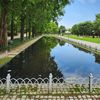
Let Us Go Seoul Forest Park
- 성동구 뚝섬로 273, Seongdong District, 04770, KOR
- Thu, Apr 11 at 4:00 PM KST
- 7 attending

Let Us Go To Han River
Organized by Hyojun Kim
- Fri Apr 12 from 6:00 PM to 11:00 PM (KST)
- Banpo Hangang Park, 서초구 신반포로11길 40, Seoul, 06500, South Korea
Share this event with your friends:
Login or Join if you want to see more!

IMAGES
VIDEO
COMMENTS
" Dear *Travel Connect*, I'm writing to share my recent Umrah experience with you from February 7th to 17th, 2024. It was truly a journey of self-discovery, filled with both highs and lows. While I acknowledge that I faced some personal challenges during the trip, I wanted to express my sincere gratitude to your team, especially Ustaz Nafis and ...
4. Take advantage of Korea's world-class public transportation. Korea's subways, trains and buses are clean, convenient and efficient. It can sometimes seem like a new station is added to the Seoul metro every month, and the rail and intercity bus networks will take you to every corner of the country.
Enroll in the Smart Traveler Enrollment Program (STEP) to receive security messages and make it easier to locate you in an emergency. Call us in Washington, D.C. at 1-888-407-4747 (toll-free in the United States and Canada) or 1-202-501-4444 (from all other countries) from 8:00 a.m. to 8:00 p.m., Eastern Standard Time, Monday through Friday ...
Starting from April 1, 2022, vaccinated travelers who have completed vaccination overseas AND register their vaccination history through the Quarantine COVID19 Defence (Q-Code) system BEFORE traveling to Korea will be eligible for quarantine exemption. Vaccination is considered to be complete 14 days after the 2nd shot for a two-dose vaccine ...
Current Requirements To Travel To Korea In 2024. This part of the South Korea travel guide is for tourists. If you plan to travel for business, employment, or other reasons, check your nearest Korean embassy for the latest travel requirements. Most of the restrictions and requirements for travelling to Korea have now been scrapped.
Korean Seasons Guide. The best time to visit South Korea is during the warm spring or fall seasons. The weather is mild and clear, there's a range of festivals and seasonal activities to enjoy, and you can travel to Korea comfortably. The best months to visit are April, May, September, and October.
You can now start planning your trip with Visit Korea's new Travel Planner. First, select the dates you have in mind for your trip to Korea. You can select up to seven days. The dates do not need to be exact but are necessary as the Travel Planner will recommend the festivals held around your destination around the time of your visit.
Visa: Most travelers will need a K-ETA (Korean Electronic Travel Authorization), applied for at least 72 hours before departure.If you needed a visa before, you'll need a K-ETA now. Note that from April 1, 2023, to December 31, 2024, passport holders from 22 countries, including the US, UK, Canada, and several EU nations, can visit visa-free - no K-ETA required!
Visit the Department of Homeland Security's website on the latest travel restrictions to the United States. Assistance: U.S. Embassy Seoul 188 Sejong Daero, Jongno-gu, Seoul +82-2-397-4114 [email protected]; State Department - Consular Affairs: 1-888-407-4747 or 1-202-501-4444; Korea Country Information
eSIM is the latest way to enjoy unlimited data in South Korea. If you own the latest mobile phones like iPhone (11,12, SE, etc.), Samsung (Note 20+, Galaxy S20, Fold, etc.), Google (Pixel 3, 4, etc.) you will be able to enjoy this eSIM. No need to purchase a physical SIM card or carry around a pocket WiFi (WiFi Egg)!
11. Korea Isn't Cheap. Expenses in Korea aren't quite as scary as Western Europe in summer but this isn't Thailand either, so you need to be prepared to spend a little more. Hostels will cost at least $15 USD/night but usually a bit more, and proper meals will start at around $8.
The metro is the fastest and most affordable way to get around Seoul. With 22 subway lines making 302 stops across the city, the Seoul Metro is a highly efficient way to get around the city. Download the Metro app for iPhone or Android, and you'll find the entire process quite straightforward. Each station has English-language signs, and stops ...
What is a K-ETA? K-ETA also known as 'Korean Electronic Travel Authorization' was implemented by the government of South Korea in 2018 and is available to certain individuals holding eligible passports. This system became a mandatory entry requirement for visa-exempt foreign visitors on September 1, 2021.
Trazy Co., Ltd | CEO Jahyun Kang Business Registration No. 220-88-48571 Tourism Business Registration No. 2016-000102 17F, 89 Seosomun-ro, Sunhwa-dong, Jung-gu, Seoul, South Korea
2. Rent a portable Wi-Fi. It is true that South Korea is blanketed with free Wi-Fi, but if you want to have a guaranteed connection then a portal device would be the way to go. Any kind of pocket Wi-Fi router or pocket modem is called an "egg", which is pretty small in size and convenient to carry in your pocket.
Naver Map. The second must-download app is 'Naver.'. If you are planning to travel to Korea, it may be good to set aside the Google suite of your smartphone. Google Maps can't show the way to your destination because of the law in Korea. 'Naver' is a Google in Korea, providing an English map service called Naver Map.
These South Korea trip packages feature top sights, guided program, downtown hotels and private transfers. You might even want to call them all-inclusive trips to South Korea as the list of inclusions is lengthy. Get ready to explore the best of South Korea with your choice of program, whether it's as short as 7 day trip to South Korea or a 2 ...
K-ETA is now mandatory for visa waiver citizens to visit South Korea, passengers must complete an online application form with basic personal details and passport information. Travelers receive the approved permit between 24h-48h. The same K-ETA can be used to enter South Korea multiple times during the 2-year validity period, or until the ...
KoreabyMe. May 16, 2022. KoreabyMe is proud to announce the launch of our newest feature, Konnect. Konnect is an easy-to-use platform where people from all over the world who are living in Korea can connect with one another. You can ask questions, share information, and meet friends who share similar interests.
Tourist Attractions. There are a few tourist attractions that offer guests free wifi. Most of the attractions that do offer free wifi are museums. Outside of museums, most tourist attractions in Seoul don't offer free wifi to guests. This includes Gyeongbokgung Palace and the other royal palaces, unfortunately.
Here are the steps you need to take to return your pocket wifi in Korea: Go to the pocket wifi company's booth. Tell them you're returning your device and give it to them. They will scan the code on your pocket wifi. If you kept the wifi egg longer than you pre-paid for, pay for the extra days.
Dial the country code 82. 3. Dial the city code (2 for Seoul, 51 for Busan) and then the number. For example, if you are calling KTO Tourist Information Center in Seoul from the U.K., you would dial 00-82-2-729-9497. Phone numbers in South Korea are either seven or eight digits long (not including the area code).
13F, Kyowon Tour Bldg., 51-1 Cheonggyecheon-ro, Jongno-gu, Seoul, Korea 03189. +82 2 2125-0700. [email protected]. Swifter, smarter, smoother travel. Let's talk. FCM Korea is one of Asia's largest, most experienced and well-connected travel companies providing a comprehensive range of innovative business travel management solutions.
Let Us Go To Han River . Organized by Hyojun Kim. Fri Apr 12 from 6:00 PM to 11:00 PM (KST) Banpo Hangang Park, 서초구 신반포로11길 40, Seoul, 06500, South Korea